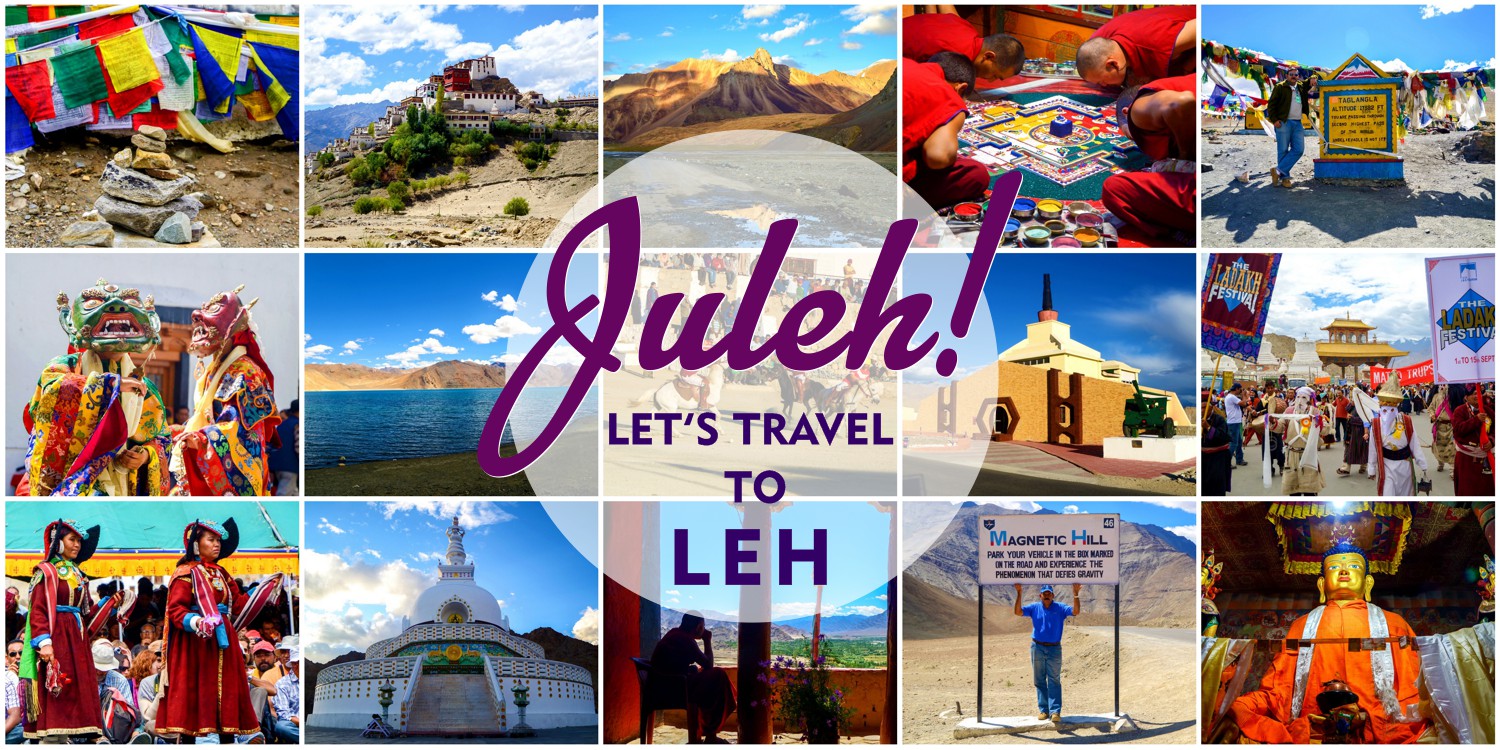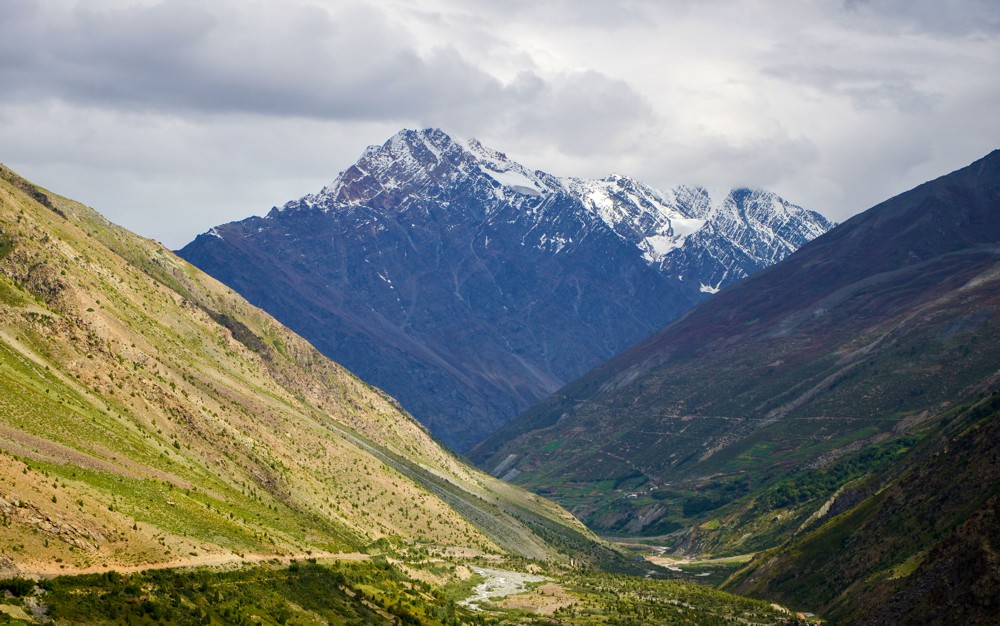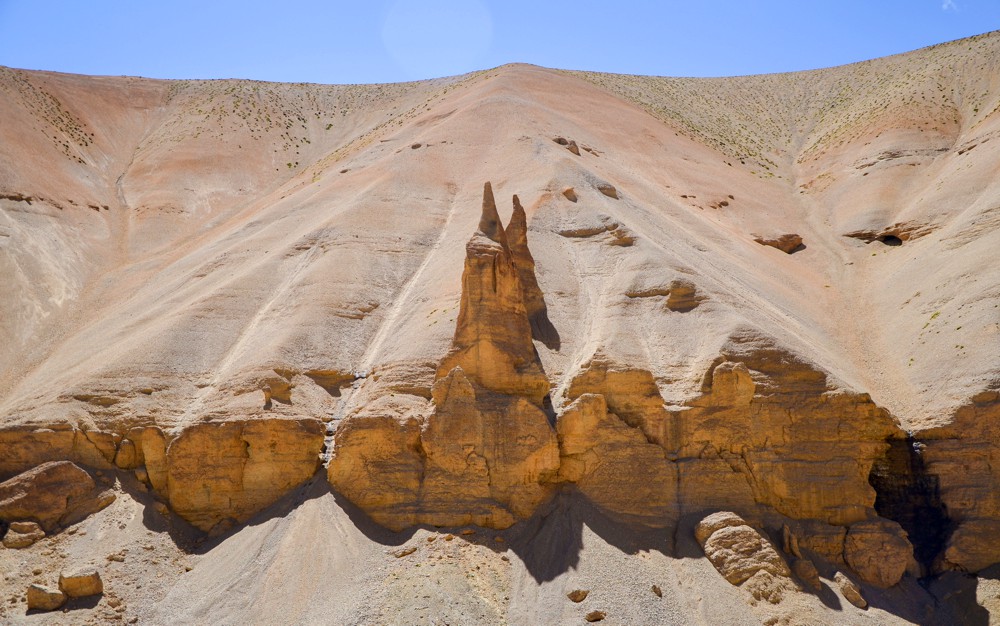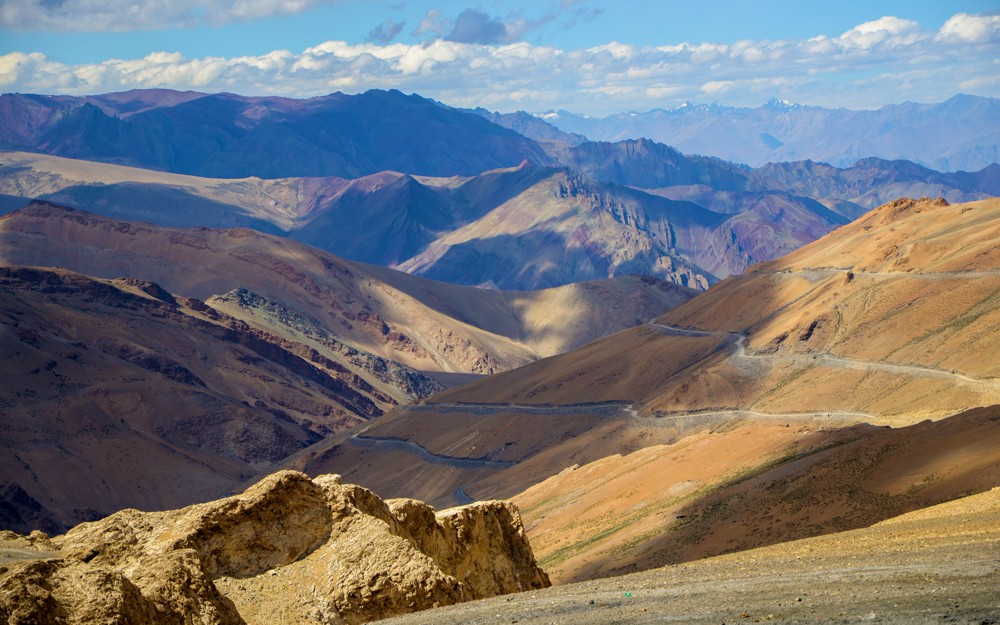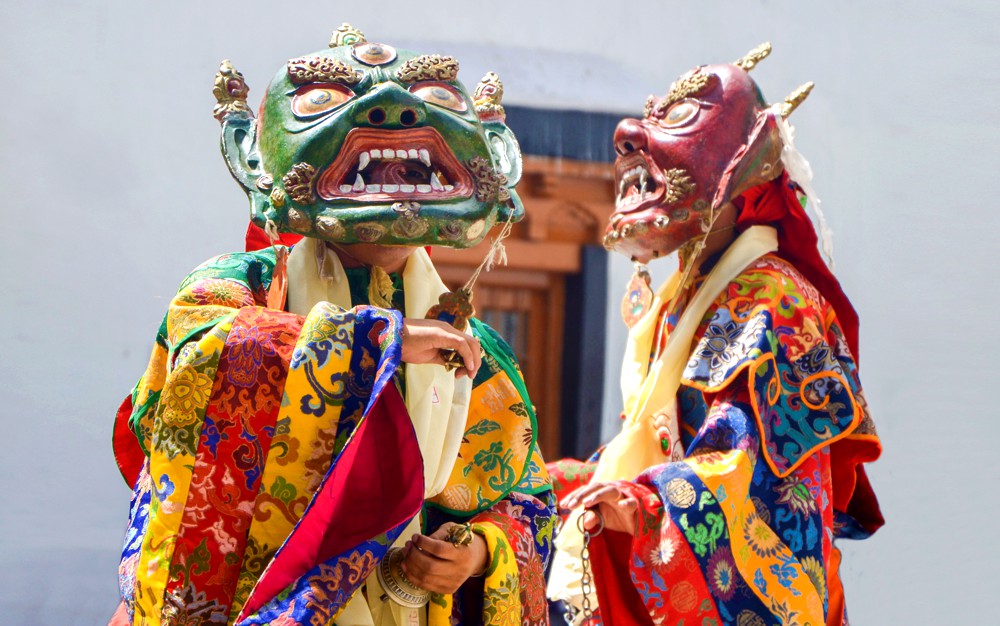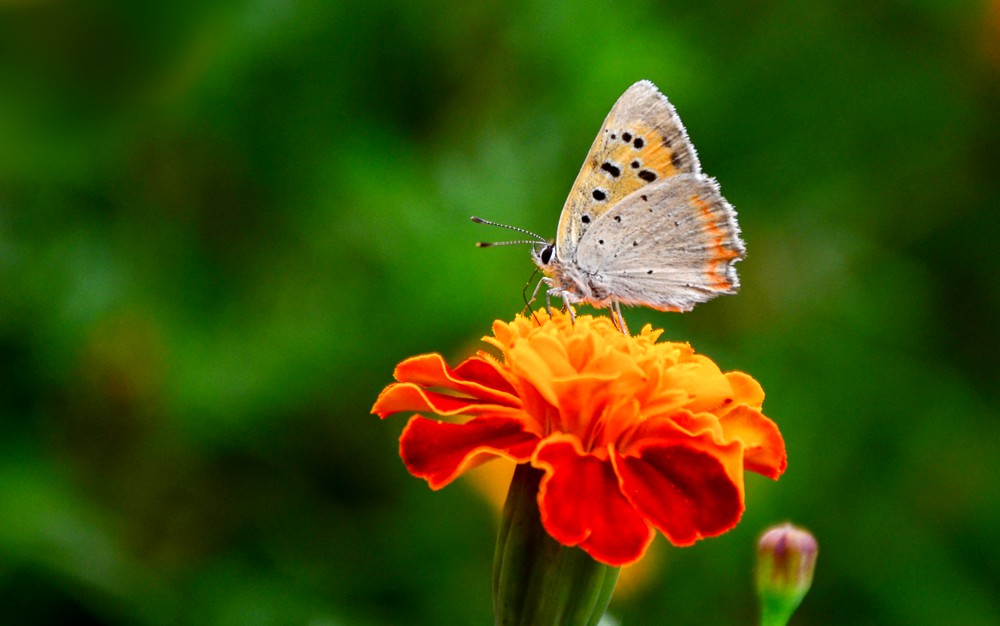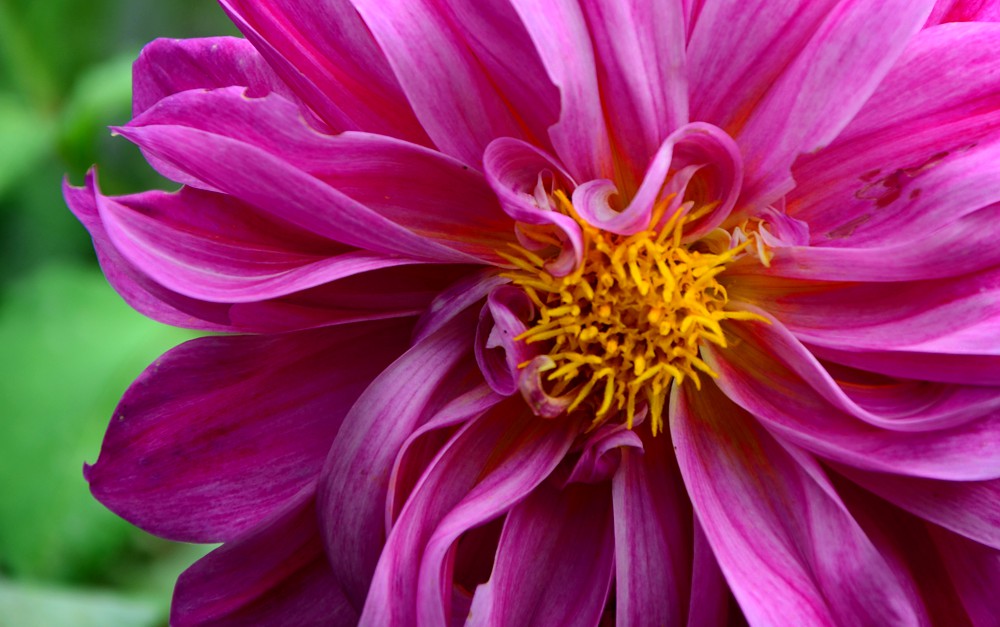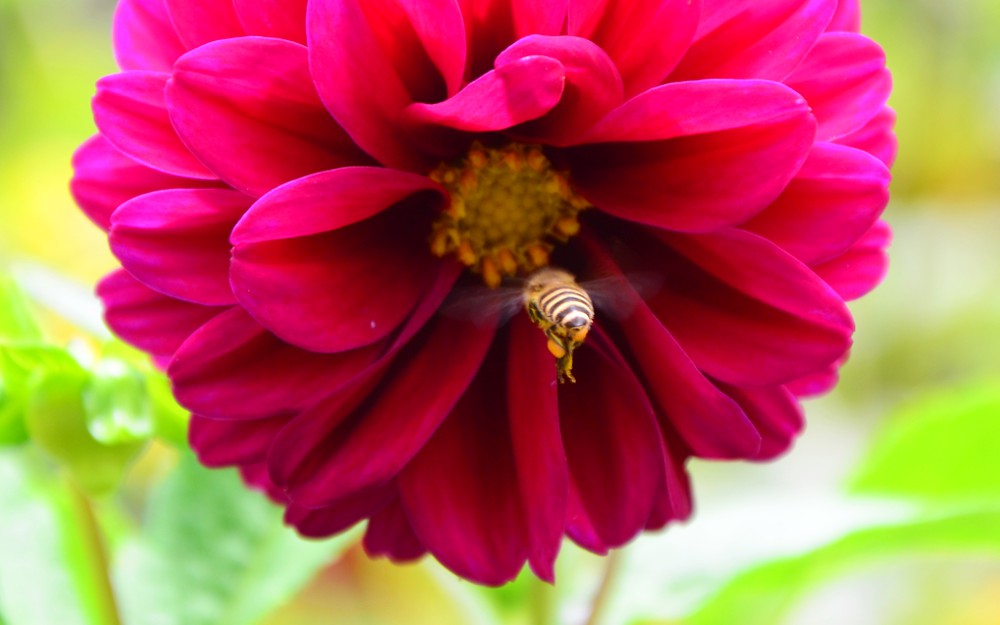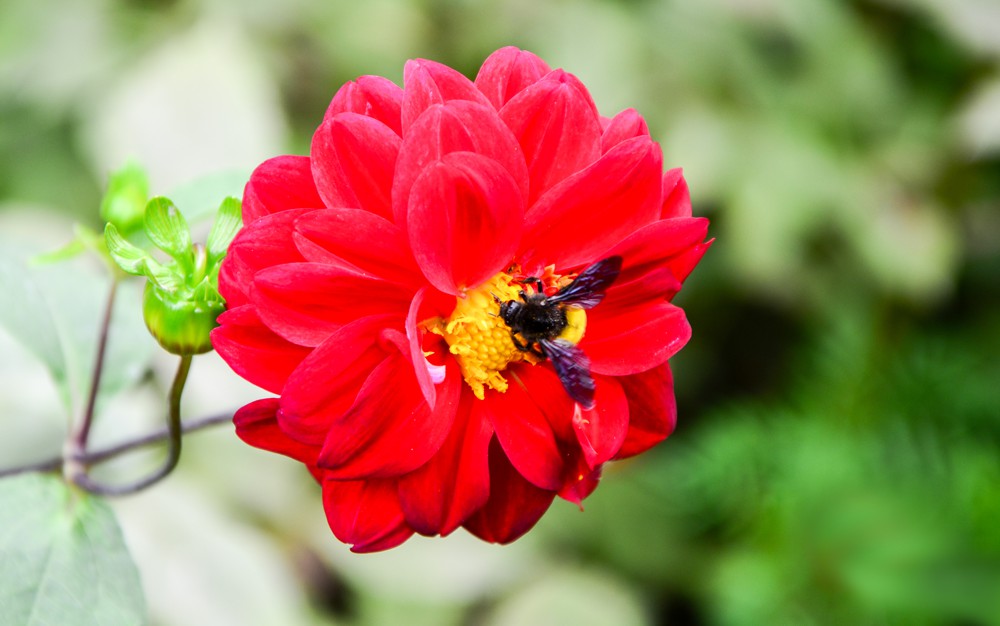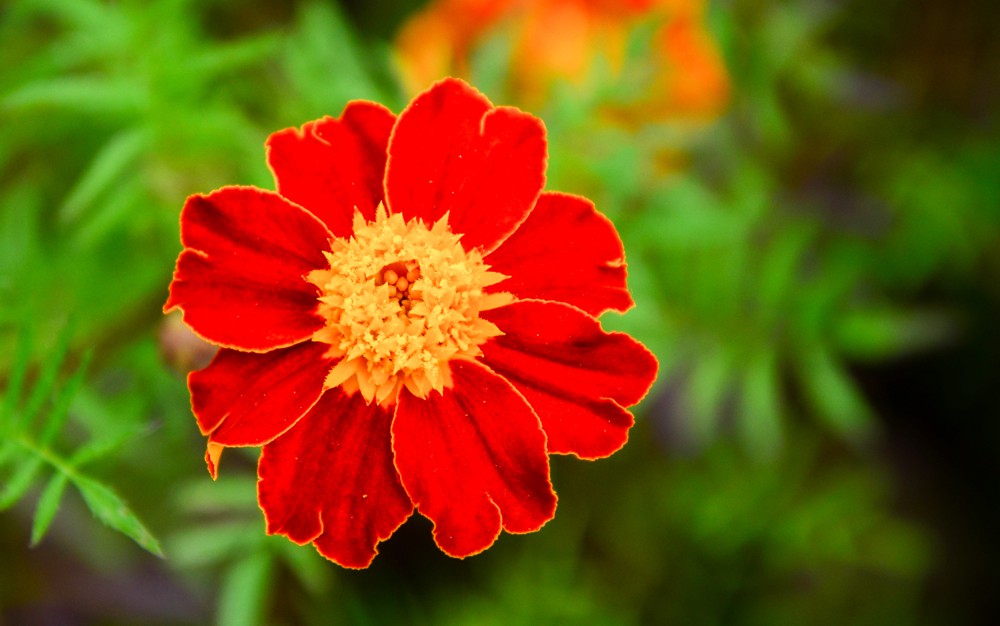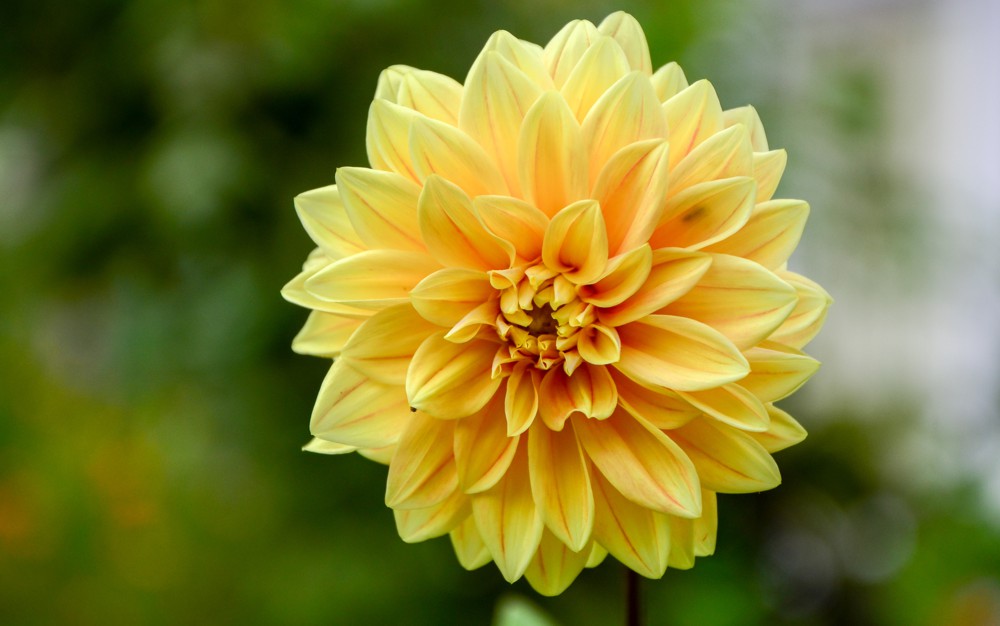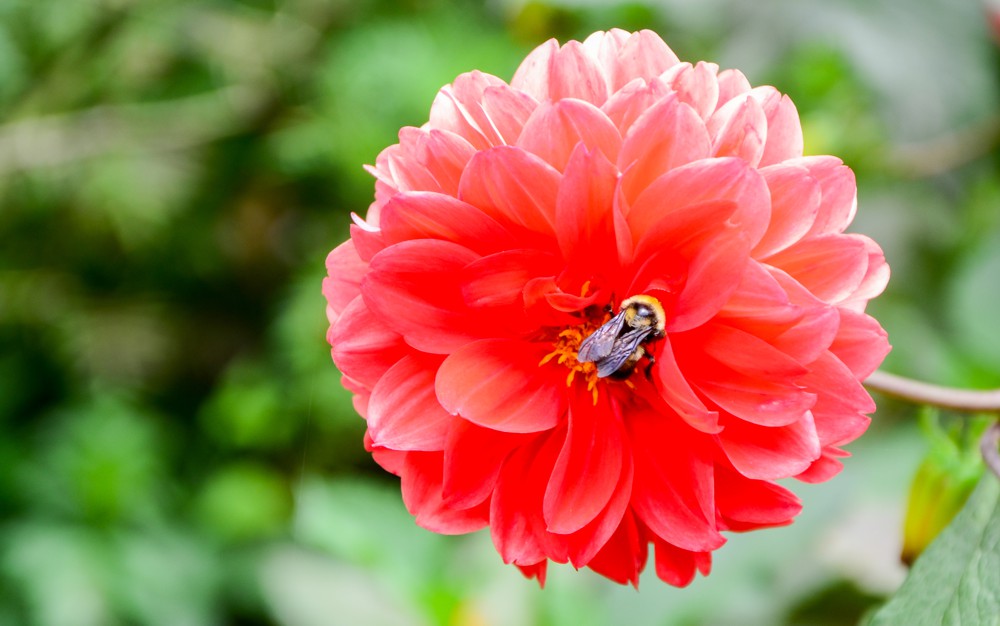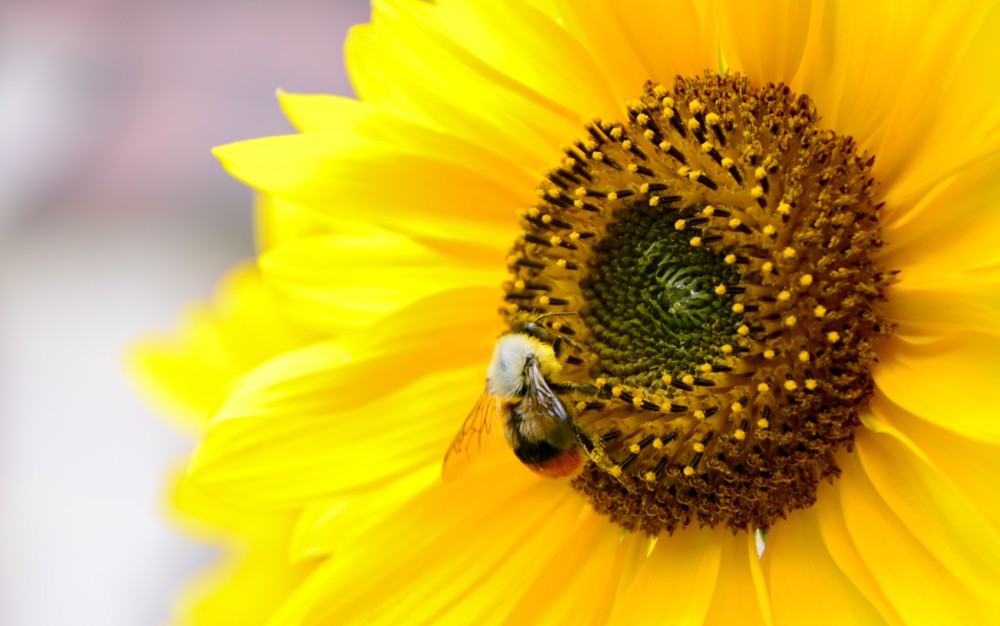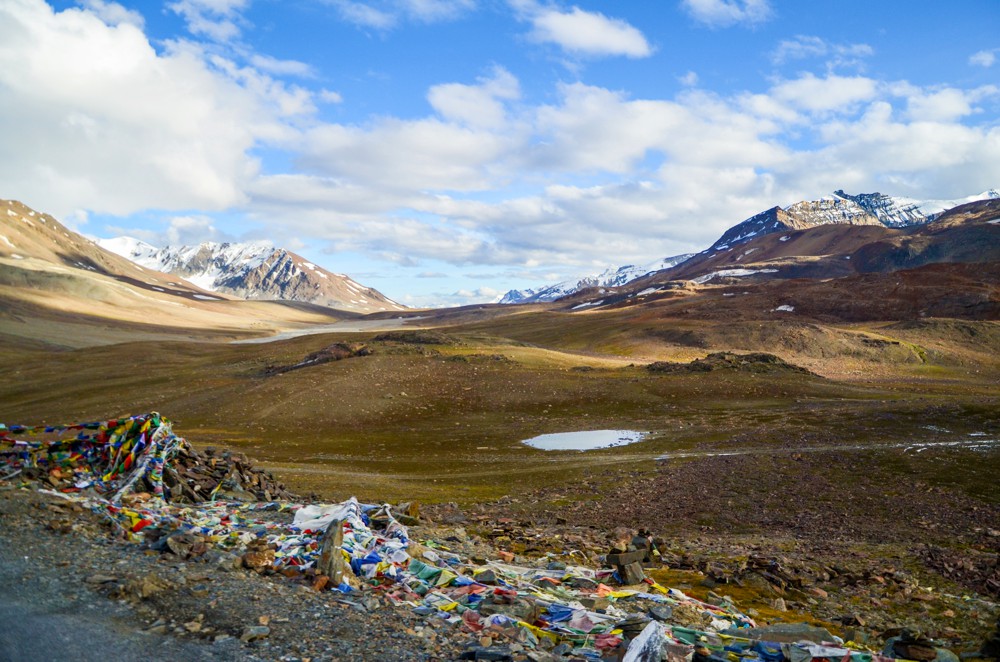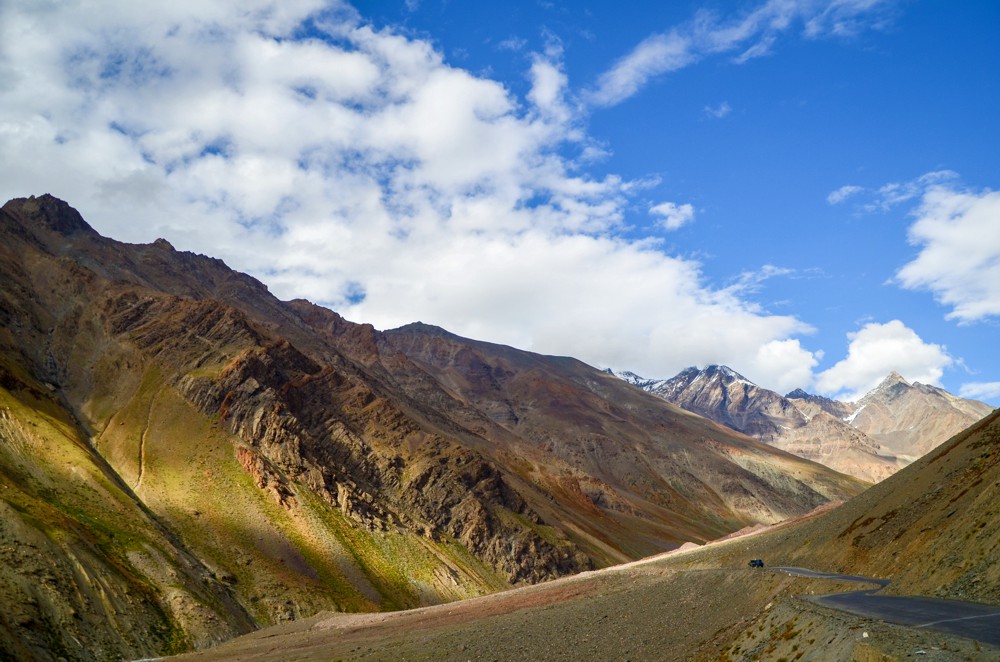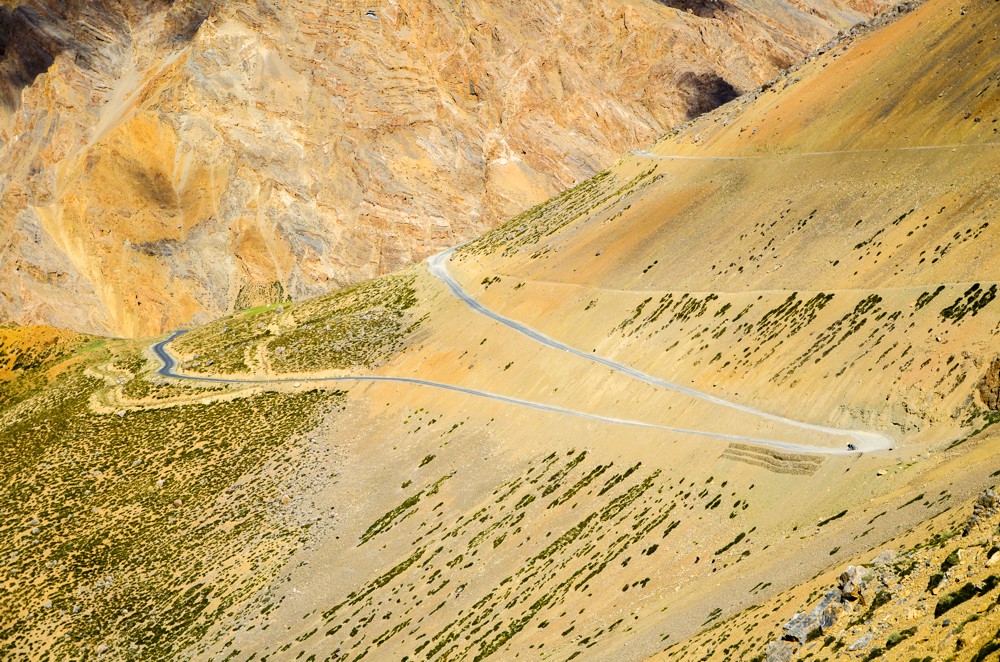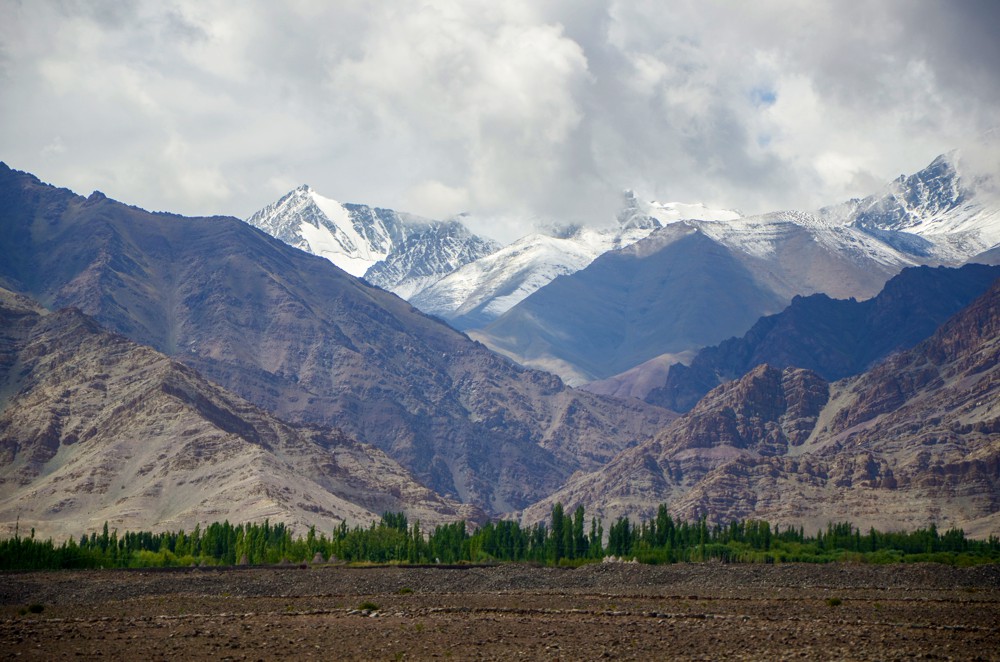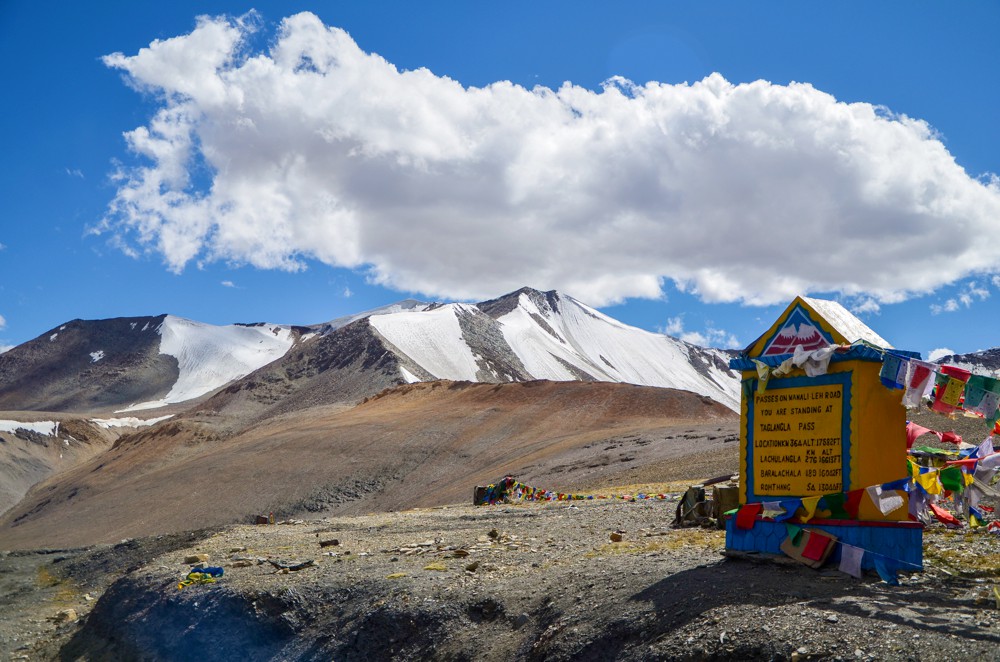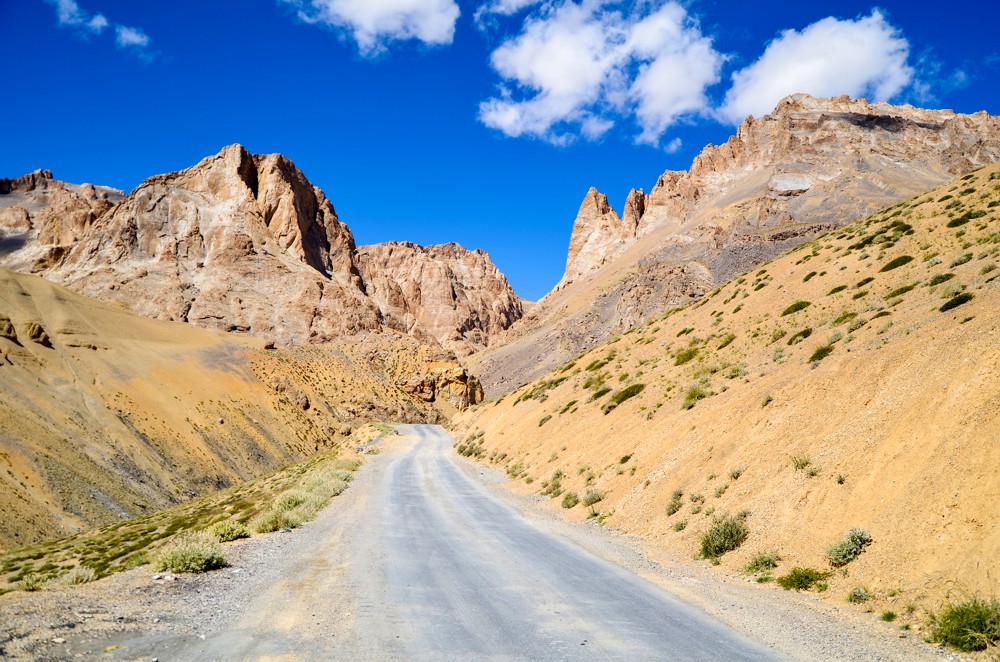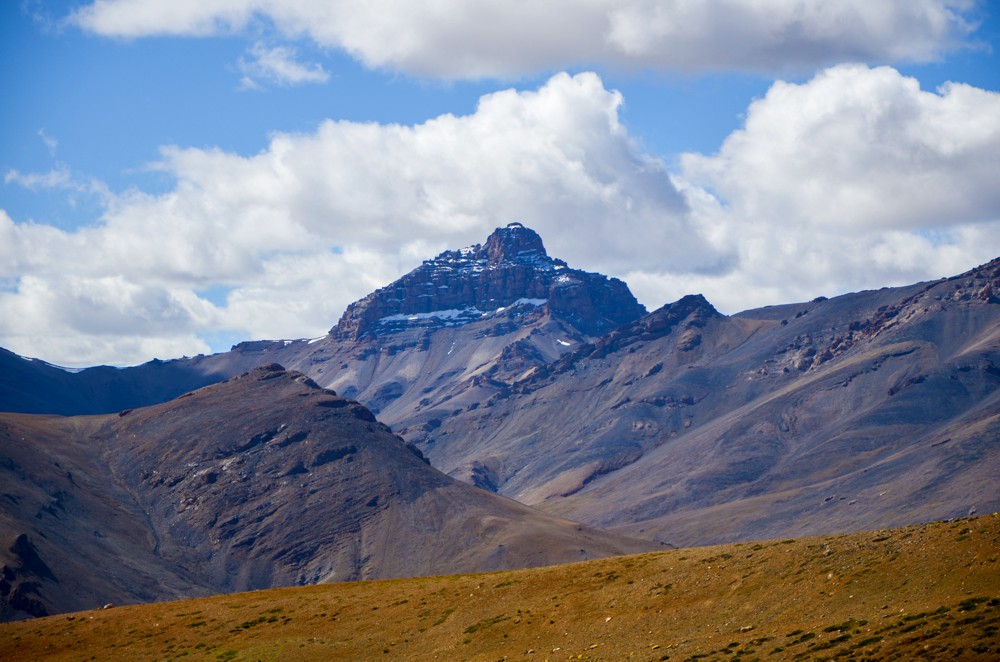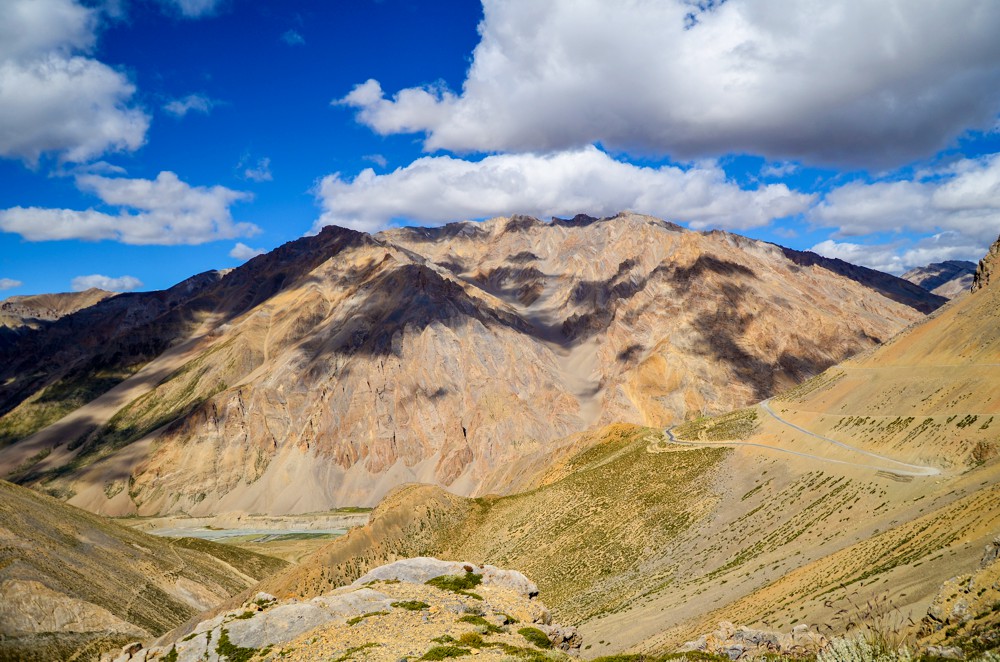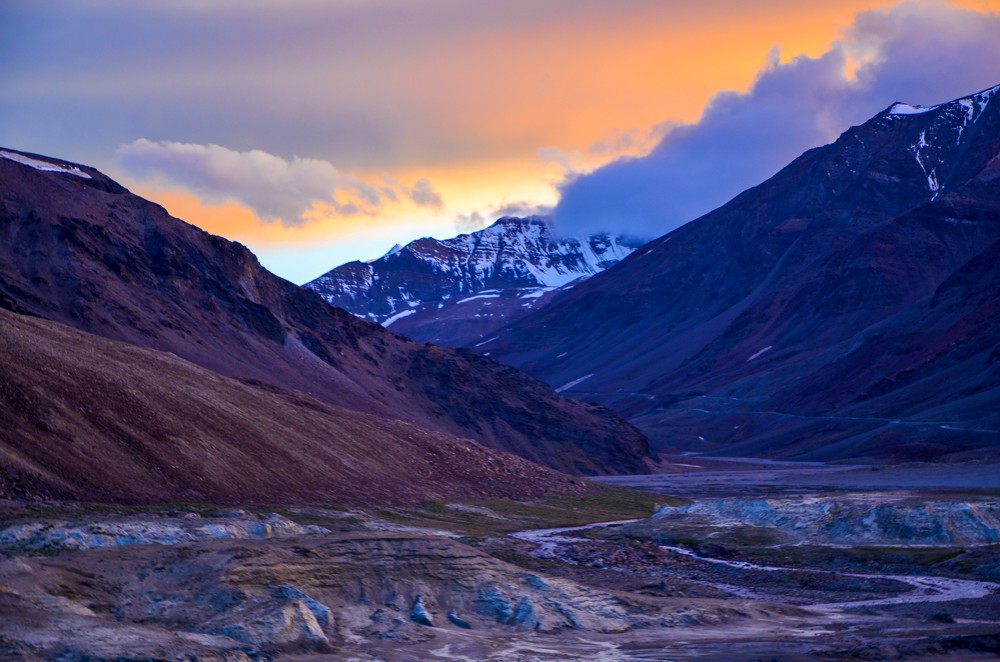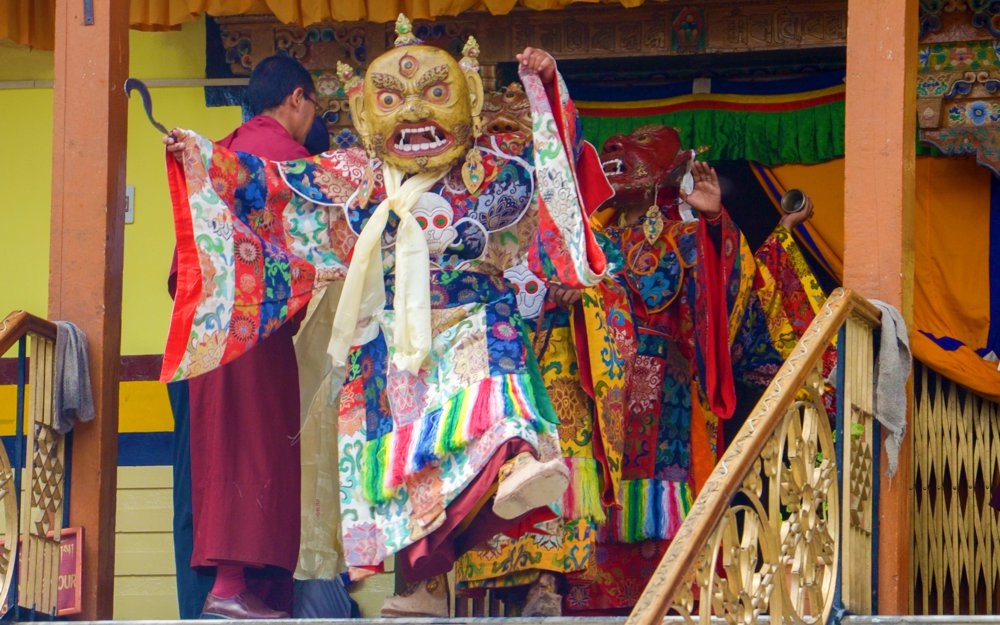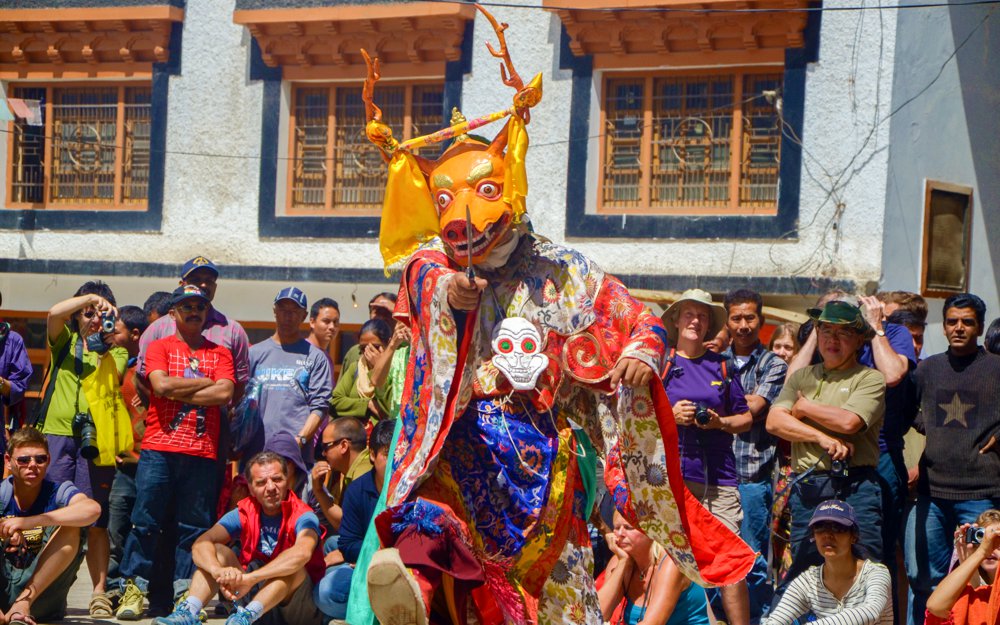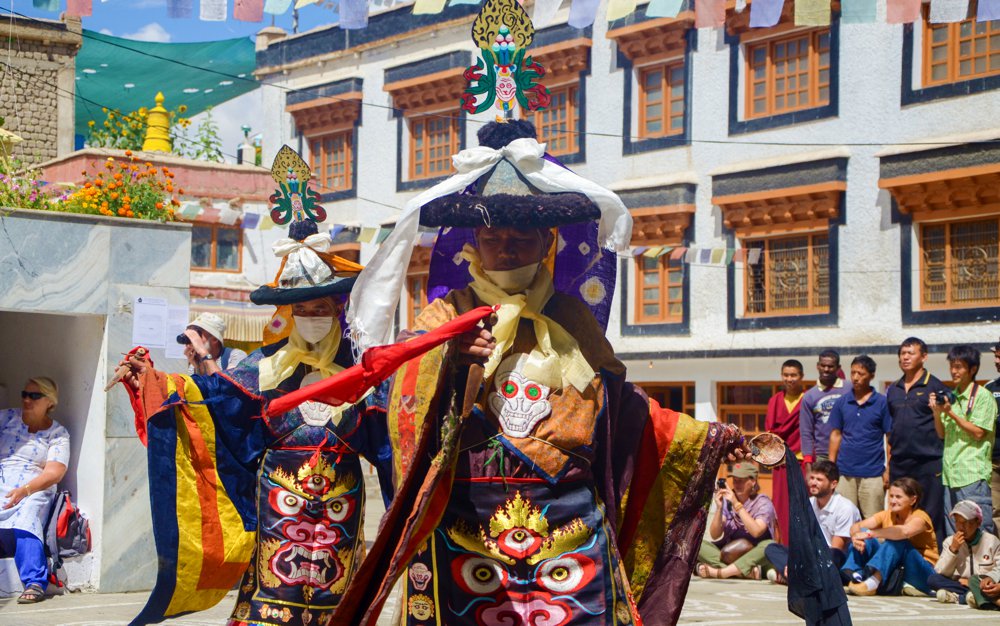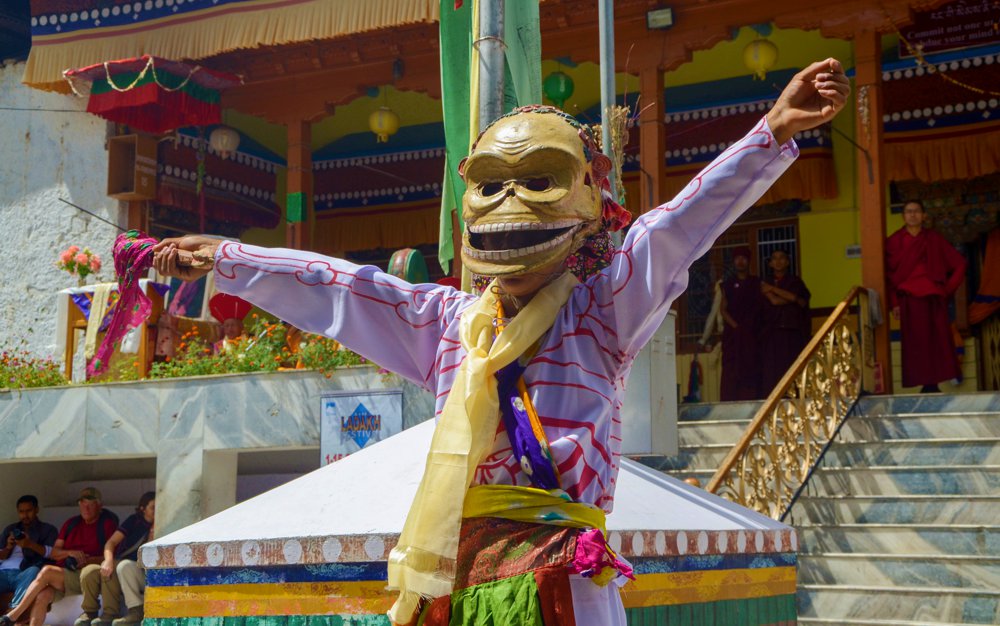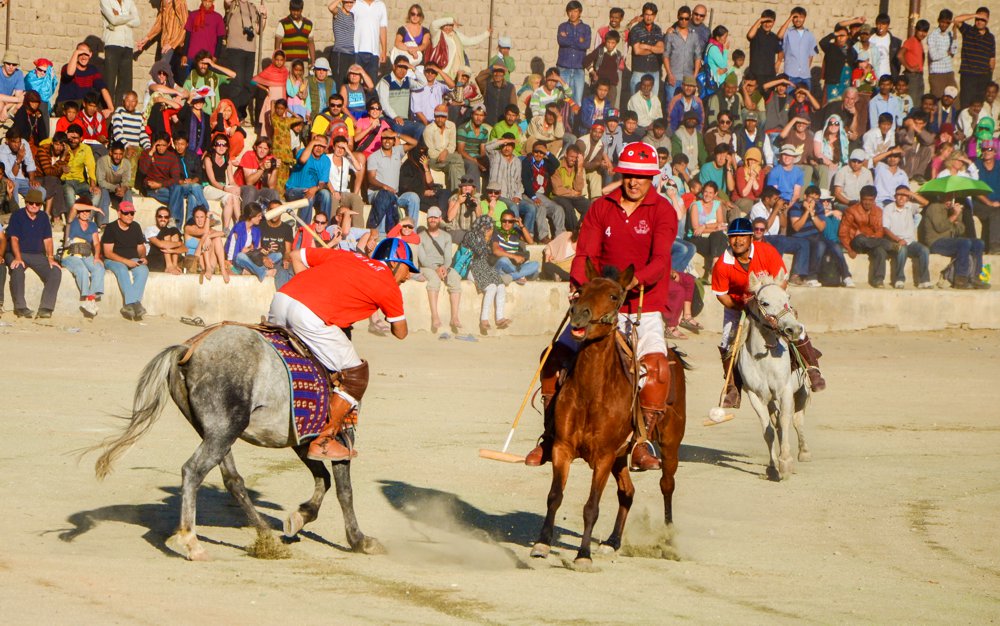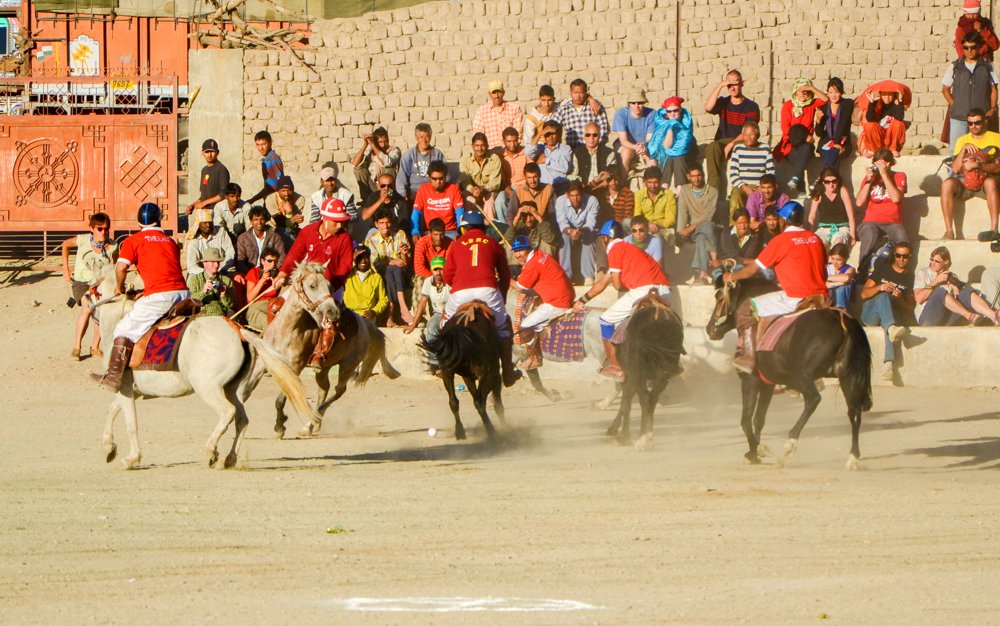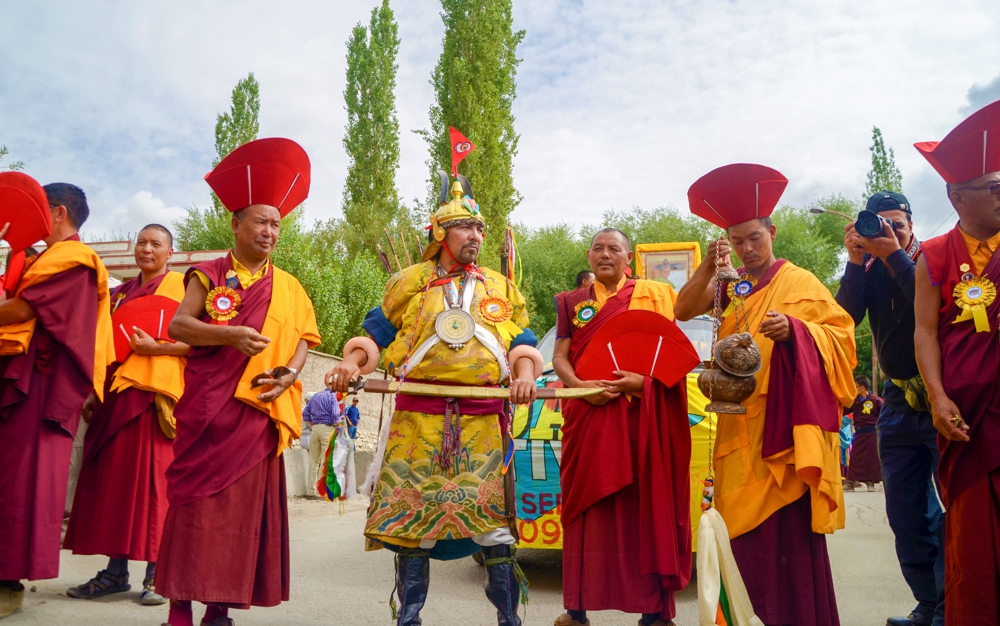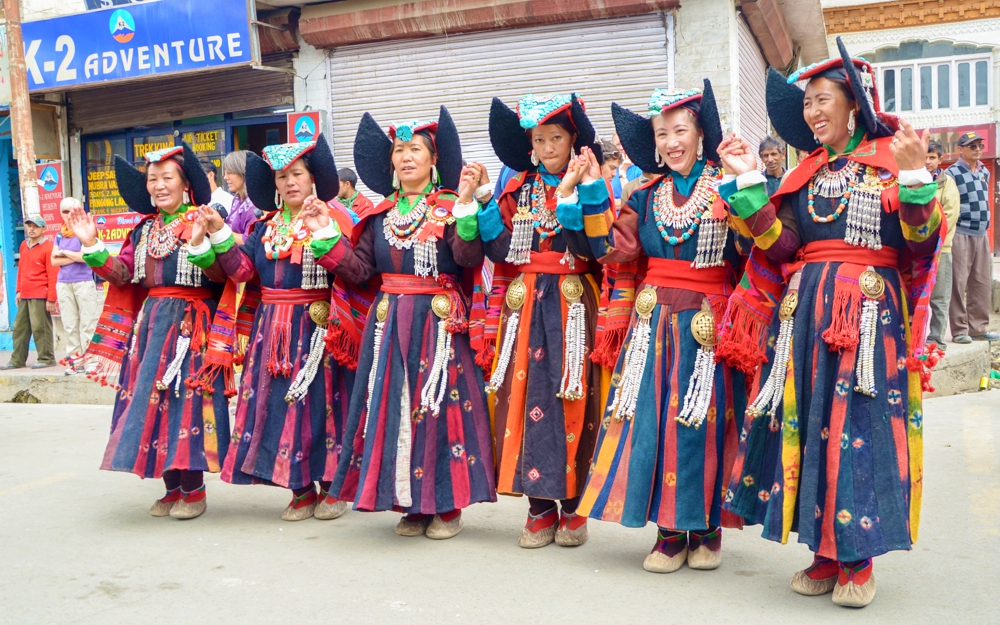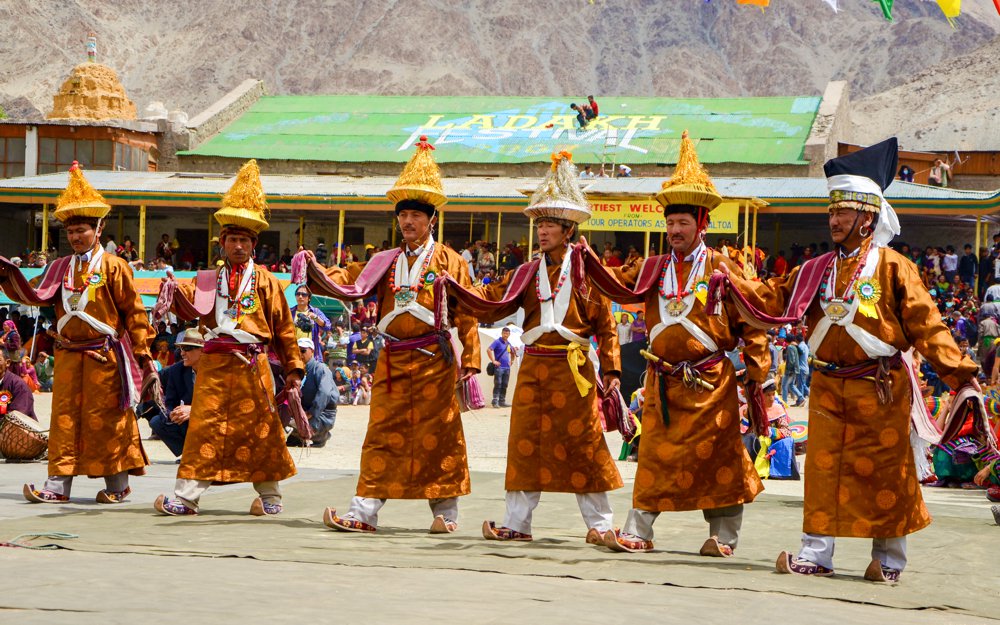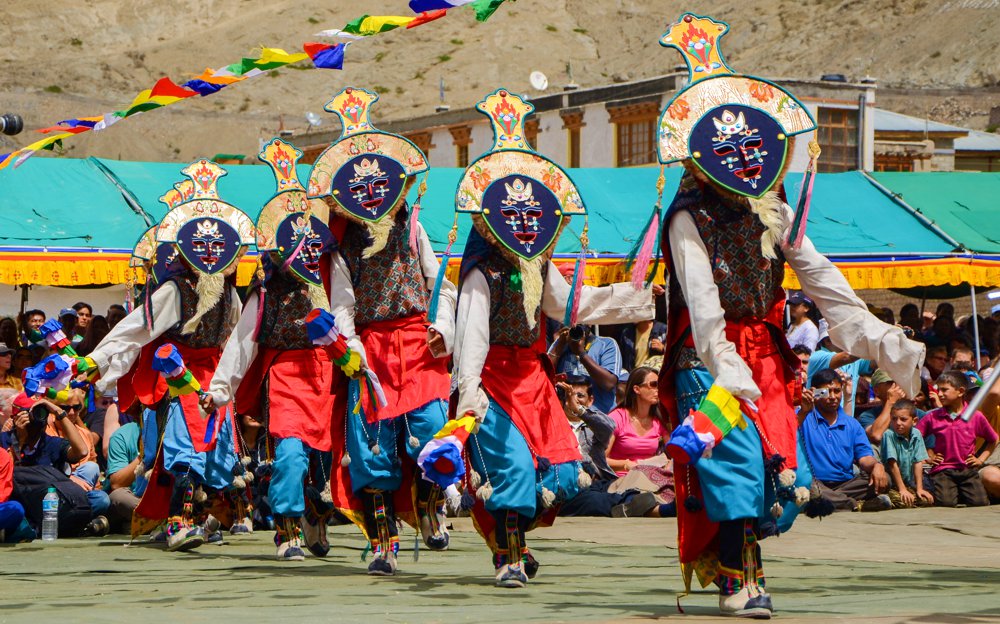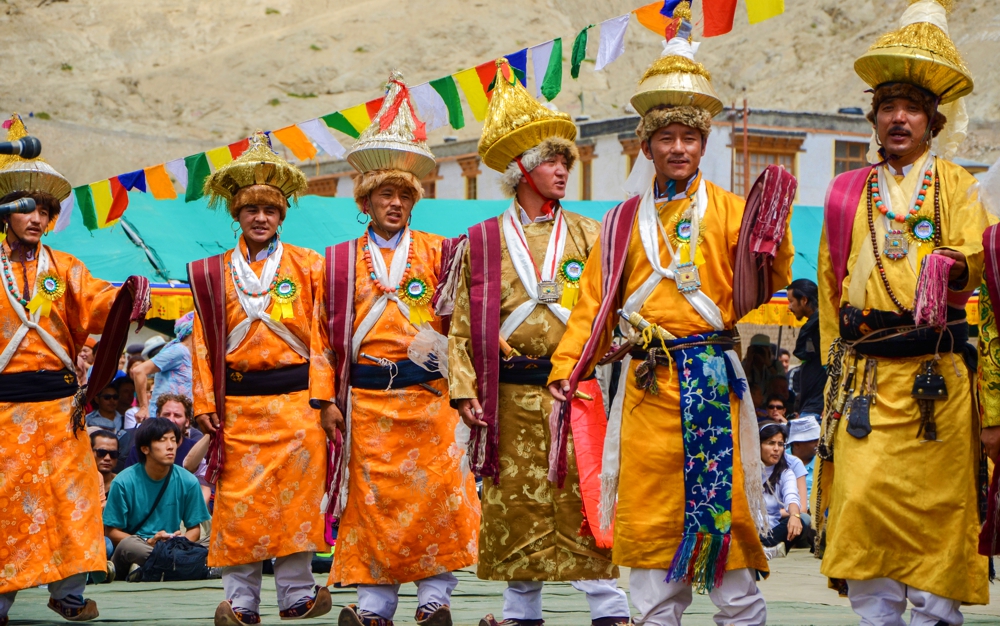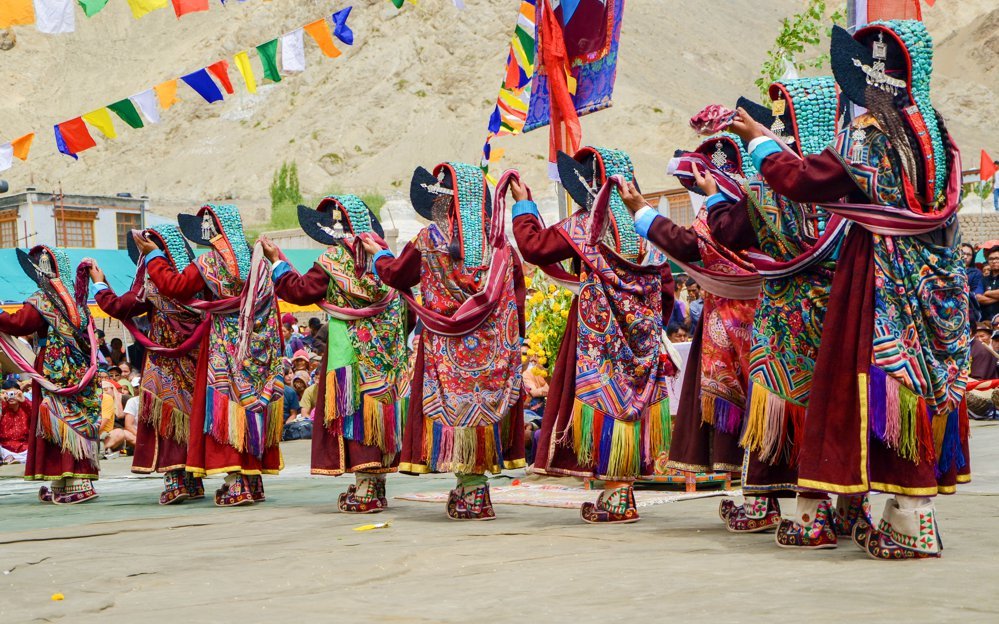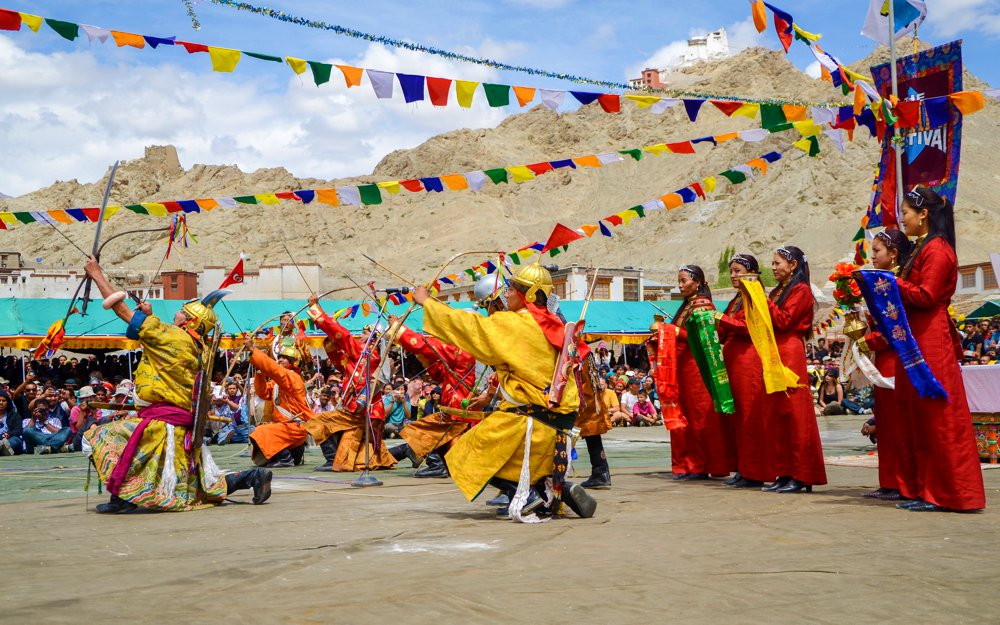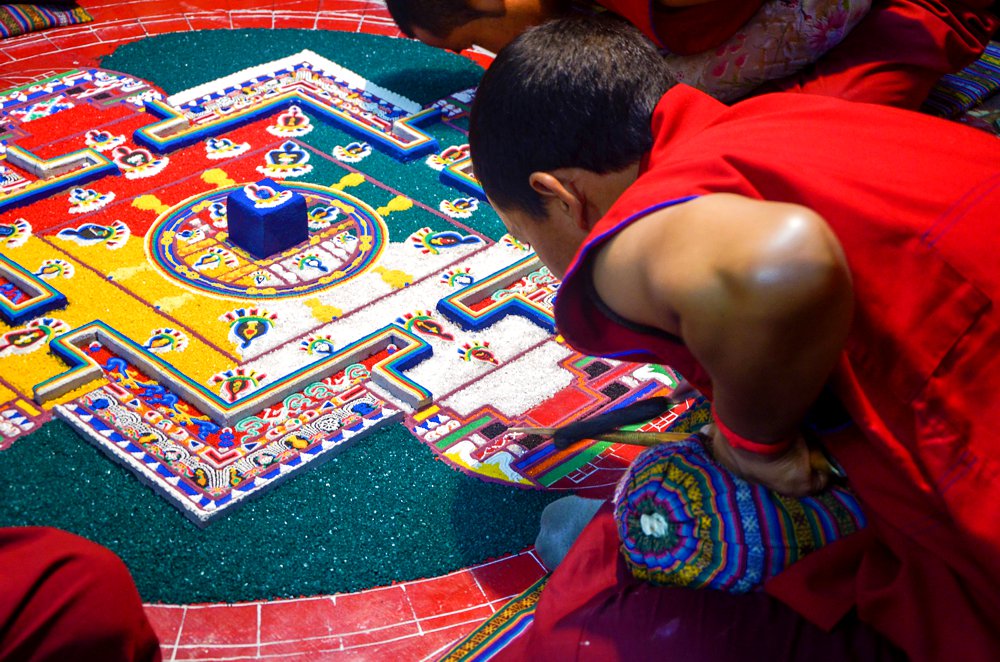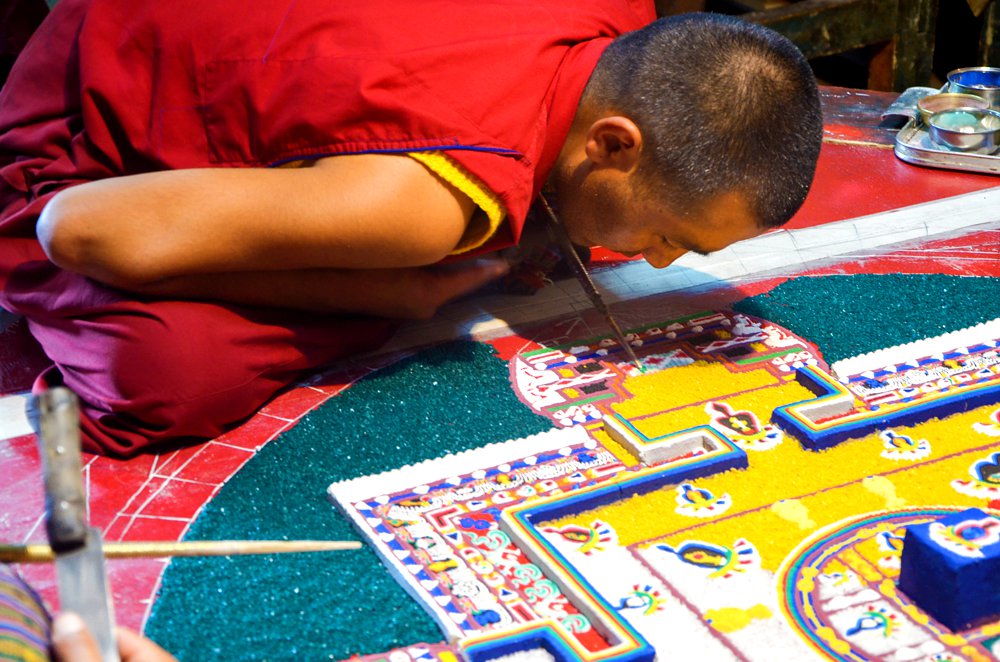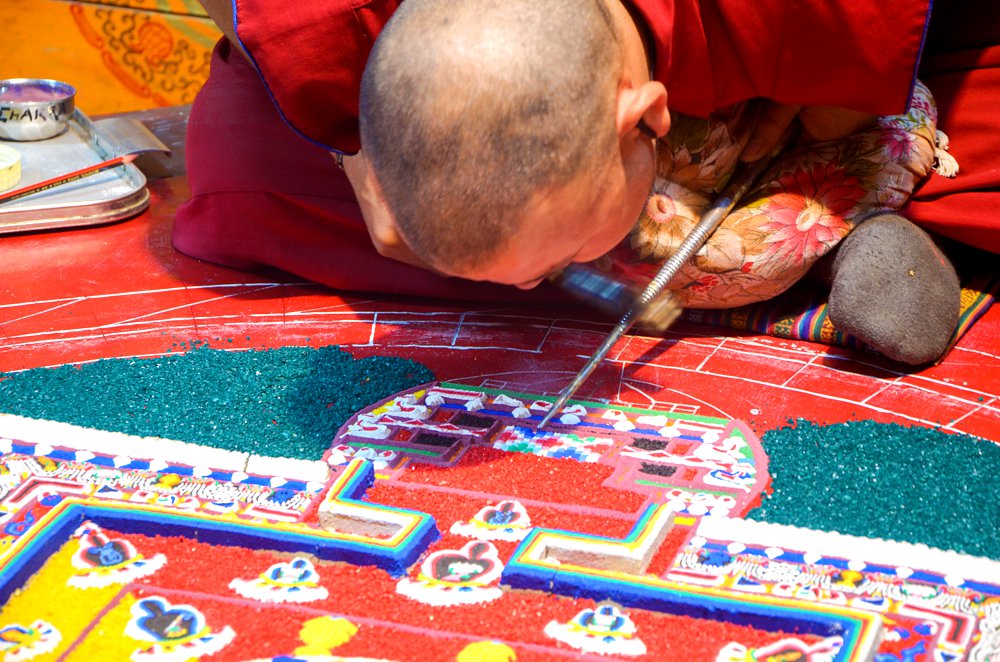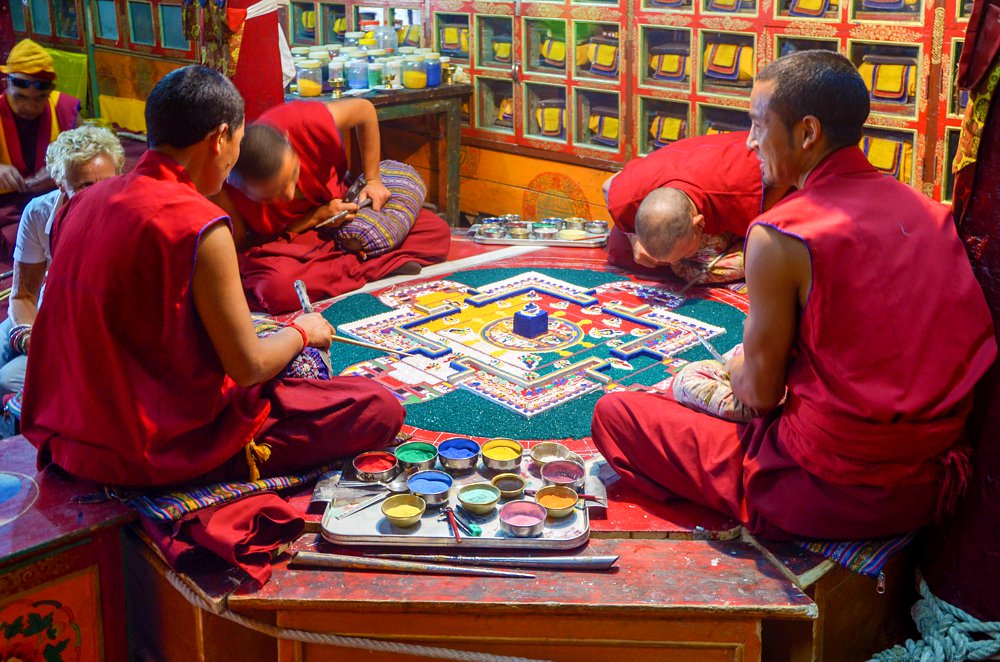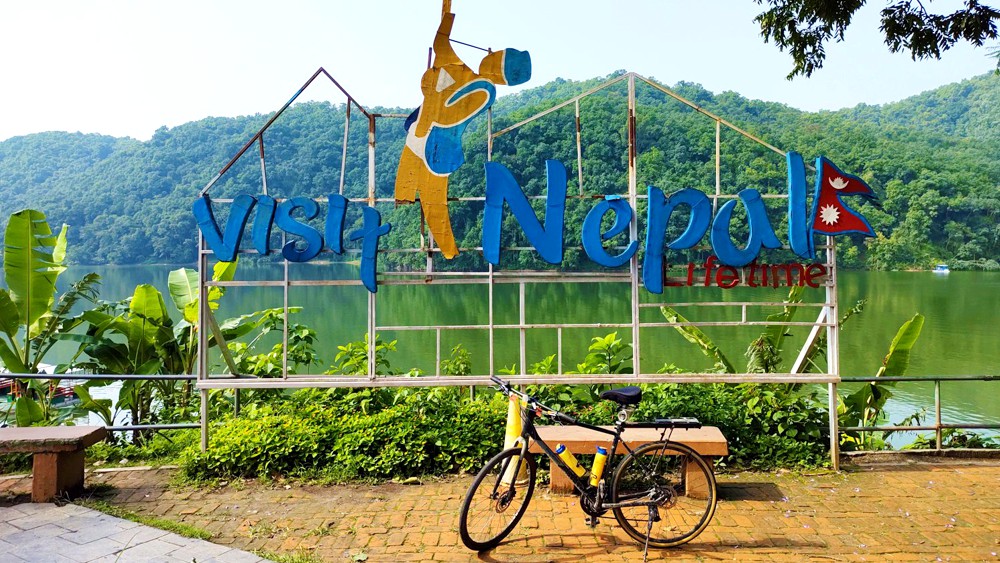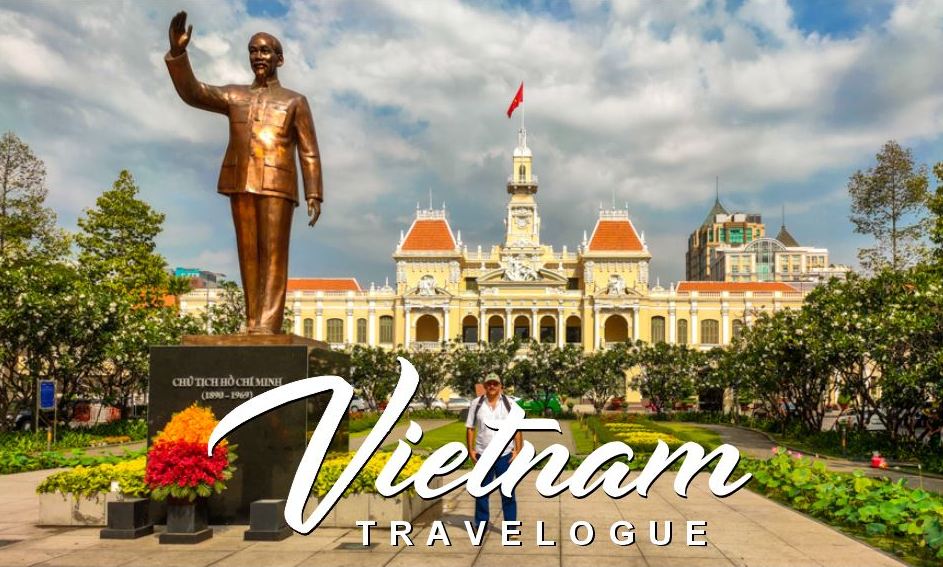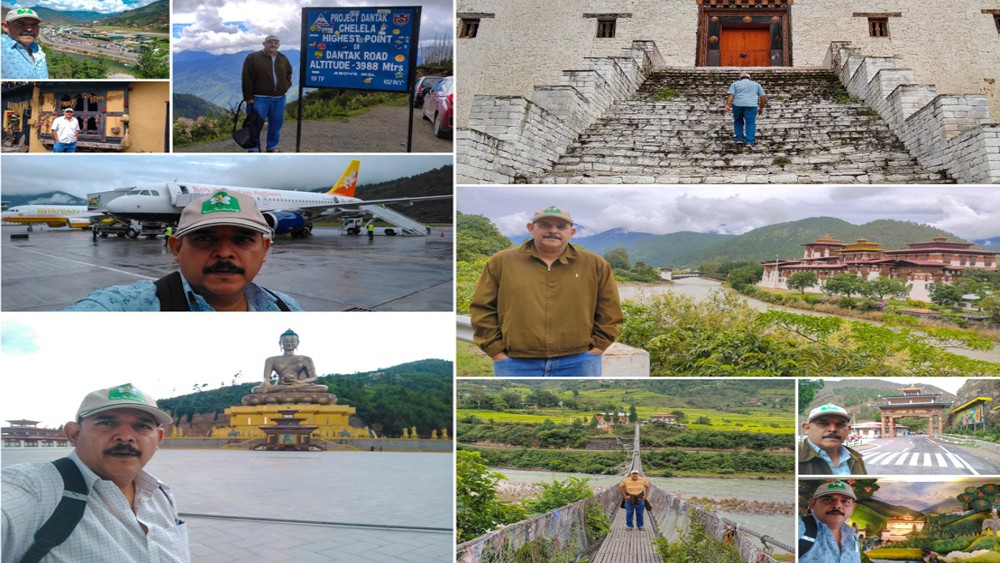Juleh!!!
I’m Lynn, and over the next four days, I’m going to take you all on an amazing virtual tour of Leh.
A friend recently liked some photos of Leh I had posted on Facebook, which brought back memories of my wonderful trip to Leh in September 2010 – ten years ago. As this is the best time to visit Leh, I decided to complete this travelogue first, in the hope that it would be beneficial to you all.
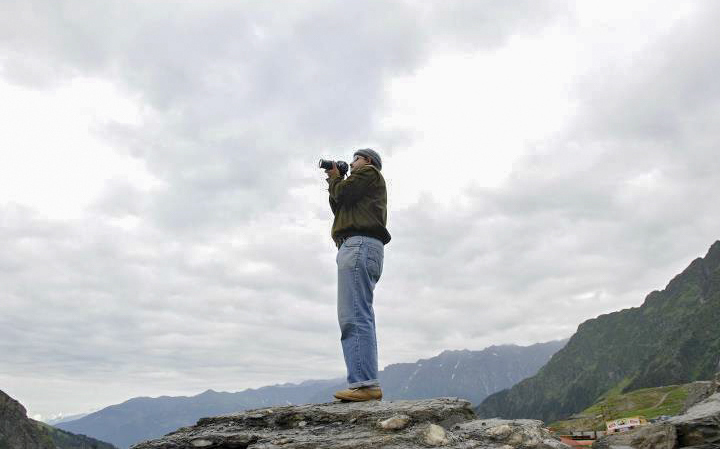
All of the photographs I’ll be sharing were clicked by me, with the exception of the b&w ones, which I downloaded off the internet.
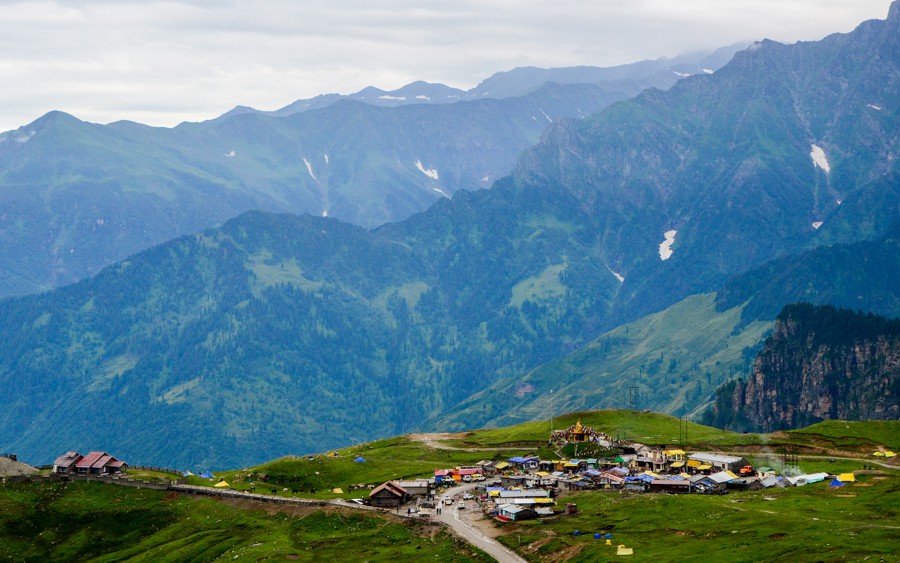
This was the photo I shot from atop the rock.
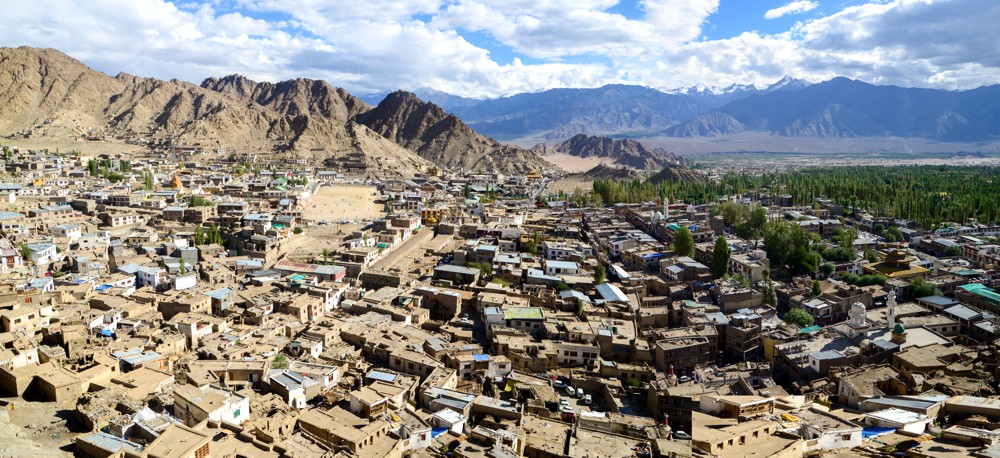
About Leh
Leh is the joint capital and largest town of the union territory of Ladakh. Leh was also the historical capital of the Himalayan Kingdom of Ladakh, the seat of which was in the Leh Palace, the former residence of the royal family of Ladakh. Leh is located 3,524 metres above sea level (11,562 ft).
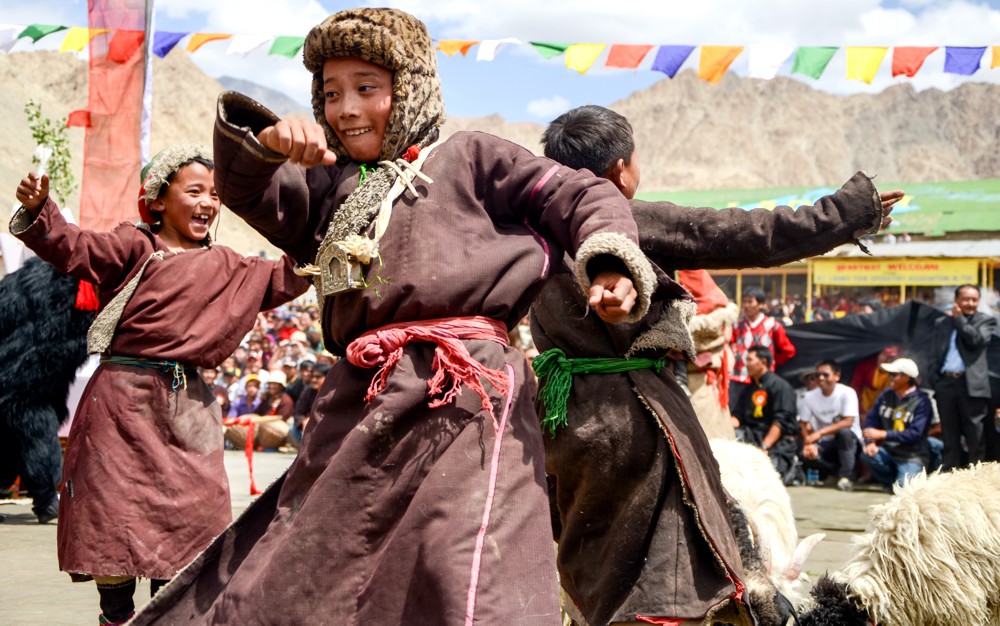
When to visit Leh
The tourist season is from May to October. July and August are the best month to visit Ladakh and to immerse yourself entirely in its enchanting beauty. The weather is generally fine and warm during the day. Leh remains partially open in the long, cold winters that are from late November to early March, with minimum temperatures well below freezing for most of the time.
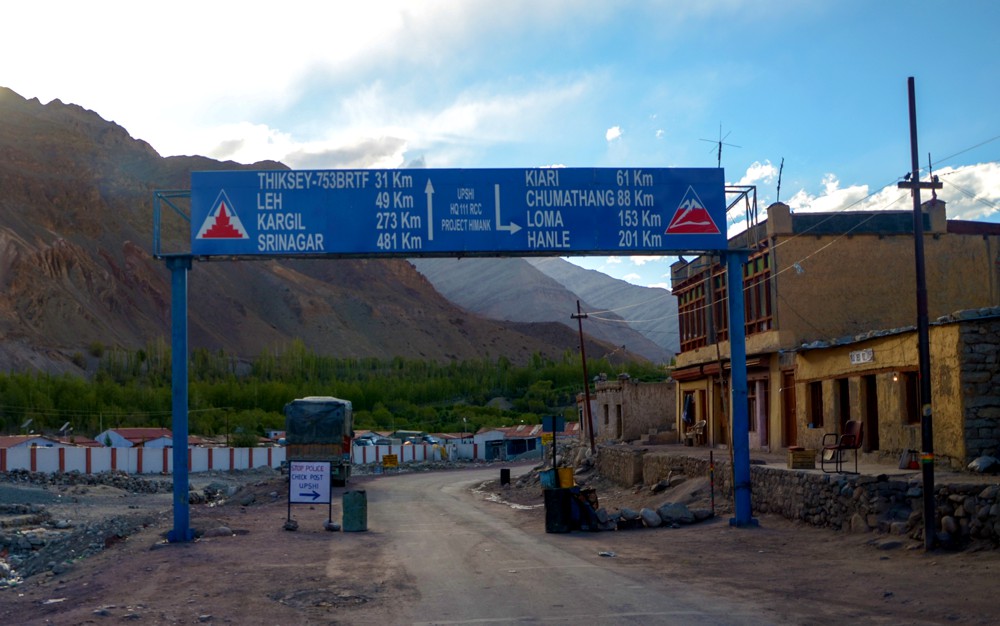
How to go to Leh
Air: there are direct flight to Leh from Delhi, Mumbai, Chandigarh and Srinagar
Road: Car / Bike / Cycle – Manali to Leh or Srinagar to Leh
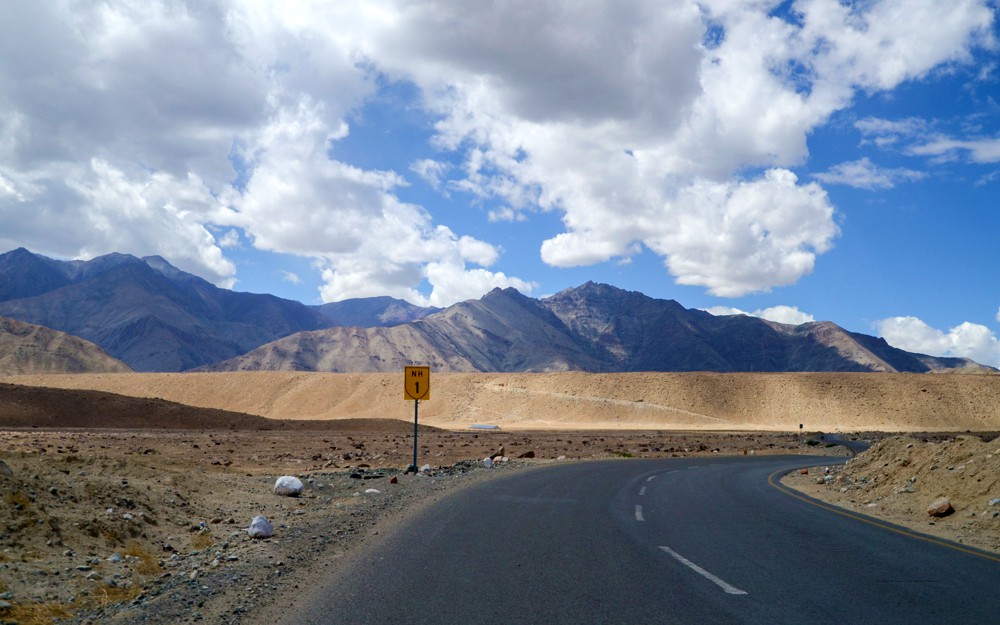
Leh is connected to the rest of India by two high-altitude highways, both of which are prone to landslides and neither of which are passable in winter when covered by deep snows. The National Highway 1 from Srinagar to Kargil is usually open for a longer period of time. The Manali-Leh Highway can be difficult to navigate due to very high passes and plateaus.
Take the drive from Manali to Leh if you enjoy photography; the scenery is stunning and changes colour every few kilometres.

How I went: Goa – Leh – Goa
Flight: Goa – Delhi – Kullu
Bus: Kullu – Manali
Minibus: Manali – Sarchu – Leh
Flight: Leh – Delhi – Goa
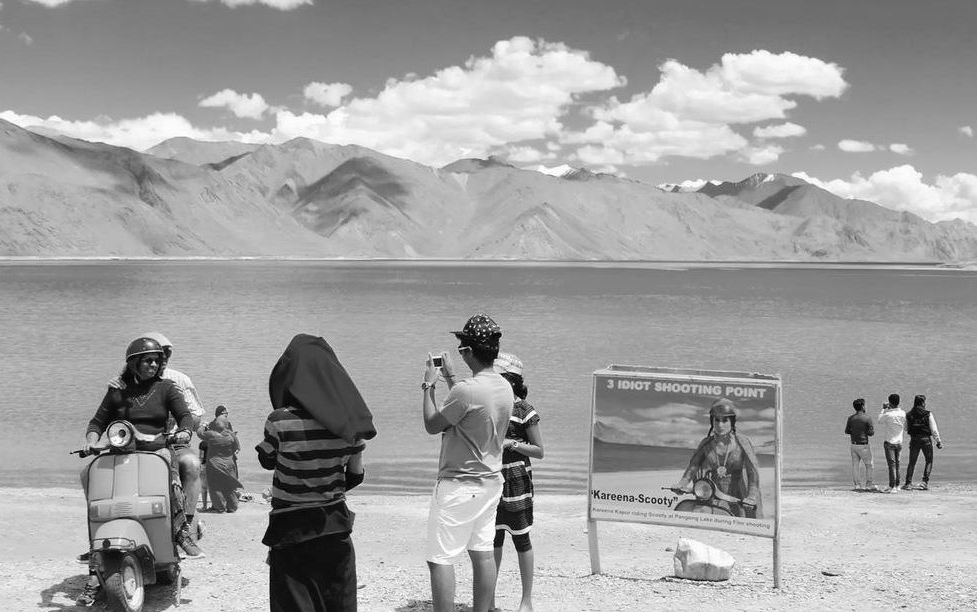
An advertising for a photography tour to Leh organised by Milestone Tours and Smart Photography magazine piqued my interest, and with the release of the 3 Idiots film in 2009, Leh had become the new tourist destination for everyone, and with time on my hands after selling my cable television network, I too decided to join the bandwagon.
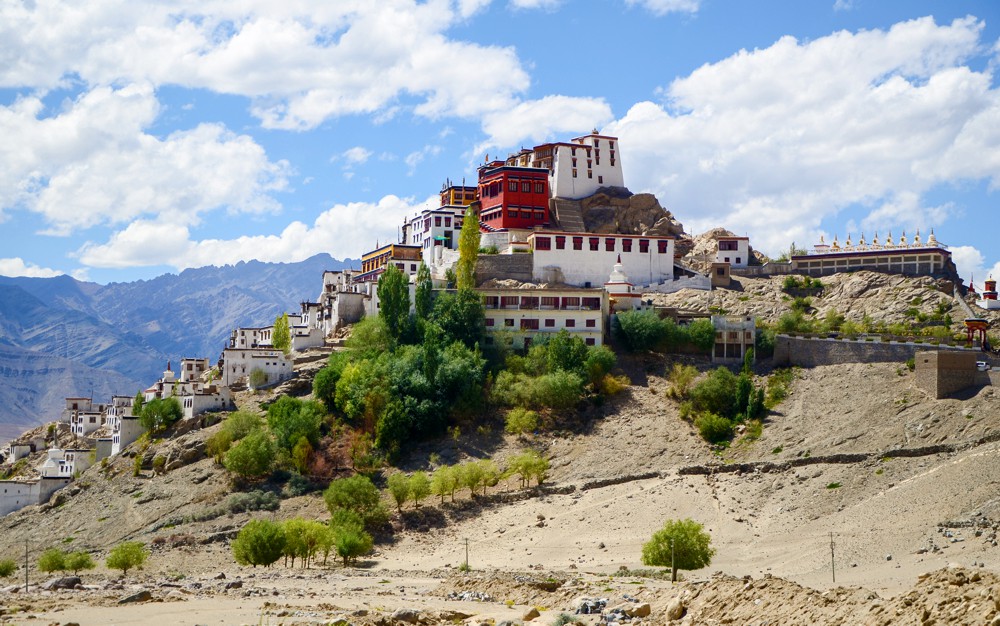
The tour cost was Rs. 18,000/- which included hotel stay (twin sharing), breakfast, transport, inner line permits and entry fees to monasteries. Starting and ending point of the tour was Manali.
Duration: 8 days
From 28th August to 5th September

The tour coincided with the 15 days Ladakh Festival which starts annually on September 1st. The Ladakh’s Department of Tourism organises the festival in the month of September, with the primary goal of extending the region’s short tourism season and also to showcases the rich cultural diversity of the region. More about the festival as the travelogue unfolds.
IF YOU ARE PLANNING TO ATTEND THE FESTIVAL, PLEASE CONFIRM IF IT WILL BE HELD THIS YEAR, CAUSE OF THE COVID PANDEMIC PROBLEMS.
VERY VERY IMPORTANT:
1. Leh is situated at 3500+ mts. Altitude sickness can occur owing to a lack of oxygen in the air, with symptoms ranging from mild – feeling cold, having a headache, difficulty to sleep to extreme – bleeding nostrils, nausea, vomiting.
The symptom I experienced was a terrible headache whenever we were above 12000 feet, caused due to lack of oxygen, which would go away as we dropped to lower elevations. Worst headache was at Khardung La.
2. Only POSTPAID Mobile service works
3. ATMs are few, and there is usually a long queue.
4. Flash photography is STRICTLY prohibited in all monasteries.
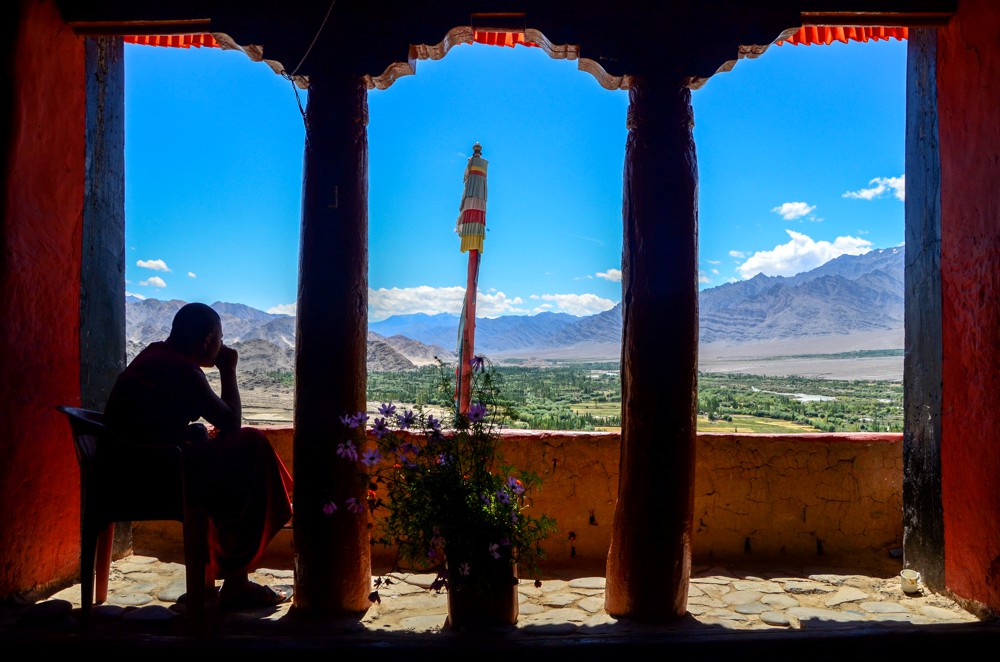
If you’re planning a trip to Leh anytime soon, Dheeraj Sharma’s blog – Devil On Wheels – is a great place to start. https://devilonwheels.com
These links have some useful info too:
https://vargiskhan.com/log/precautions-for-ladakh-trip/
https://www.lehladakhindia.com/tips-and-suggestions/
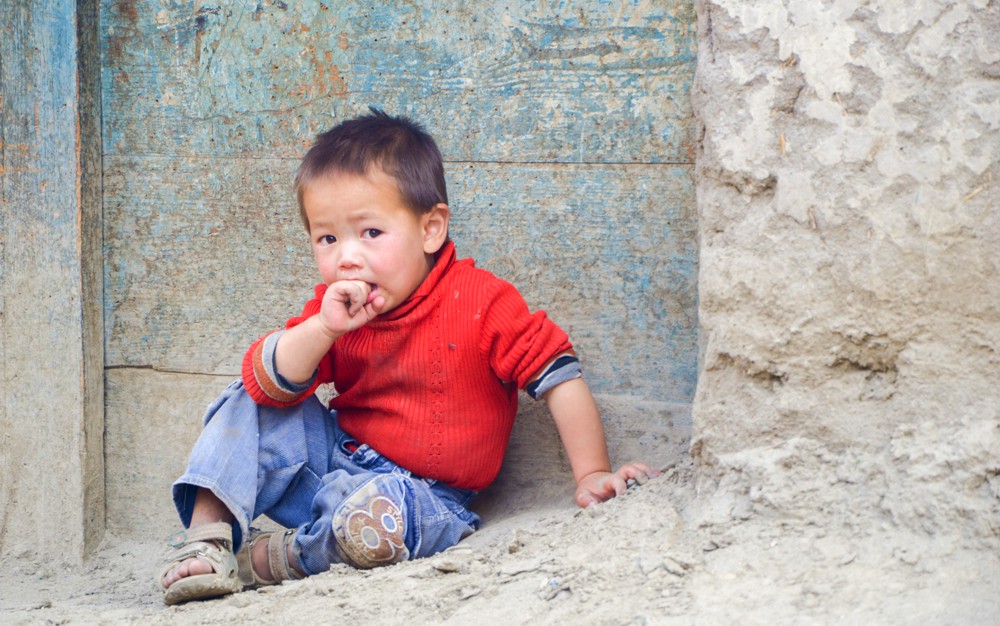
“Juleh” (also spelt Juley, Jule or Julay and pronounced “joo-lay“) is the first word you will hear when you arrive in Leh. It’s a magical word that means – hi, welcome, thank you, how are you, glad to meet you, and goodbye.
It the only word needed! People in Ladakh are incredibly friendly. A smile, a head nod and an exchange of “juleh” are always offered as you walk past anyone in the town.
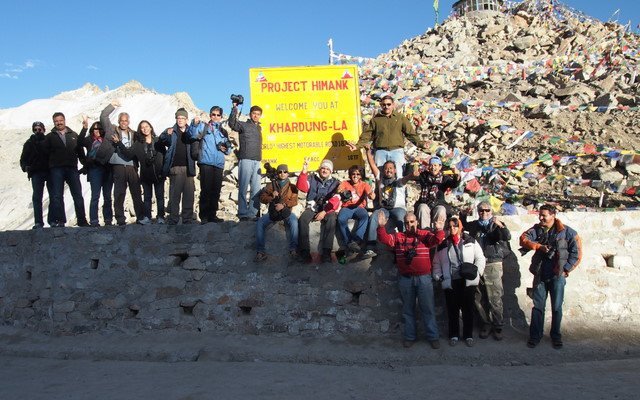
Tomorrow, I meet up with my fellow travellers in Manali, and all set to embark on a great Leh adventure.
I’ll end Part 1 of the travelogue now, by sharing some photos of flowers I clicked in Manali. Stay safe everyone.
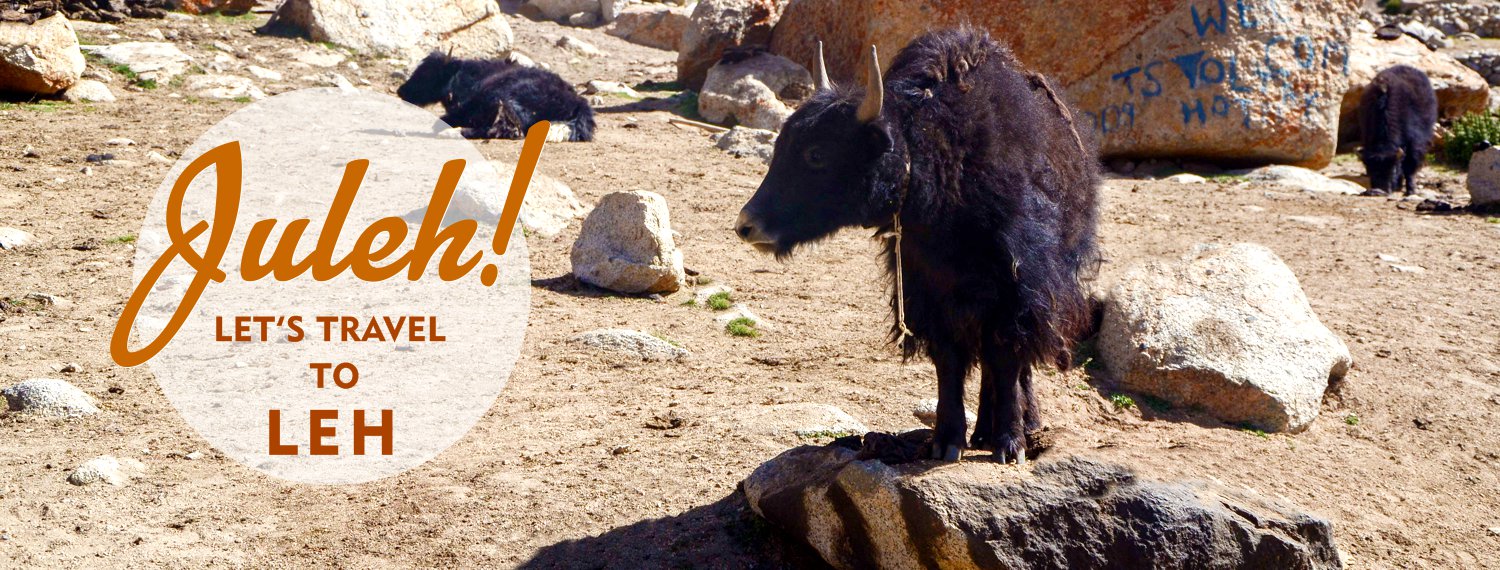
Welcome to day 2 of the Leh travelogue.
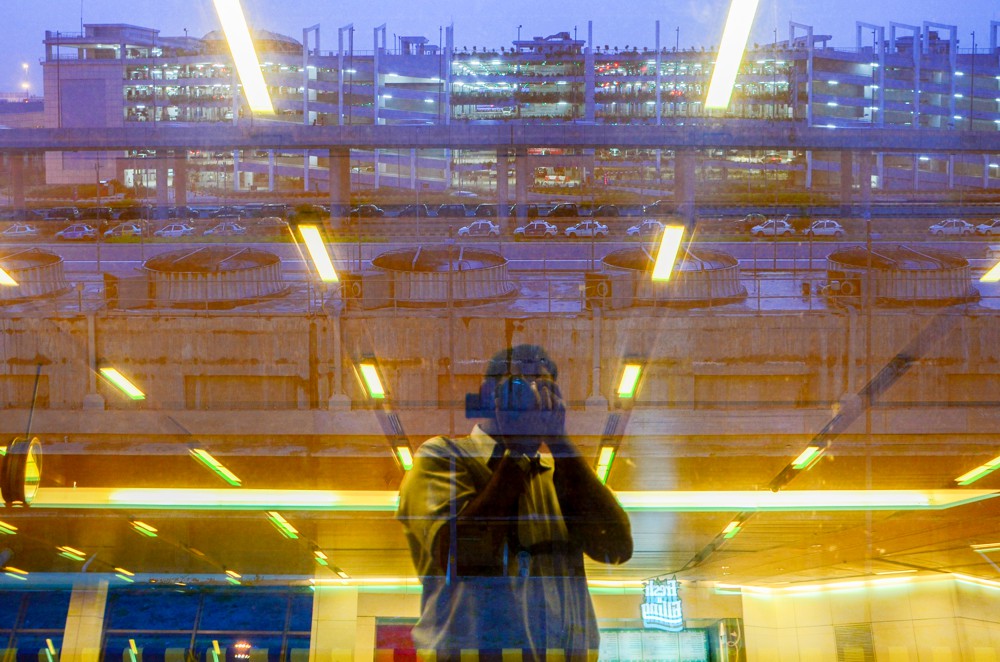
Day 1 & 2 – Aug 26/27: Reaching Manali
I took a night flight from Goa to Delhi and an early morning flight to Kulu.
Arrived at Kulu around 9am and boarded a local bus from the airport which took about an hour to reach Manali.
Checked into Hotel Marble, where I would meet up with my companion travellers the next day.
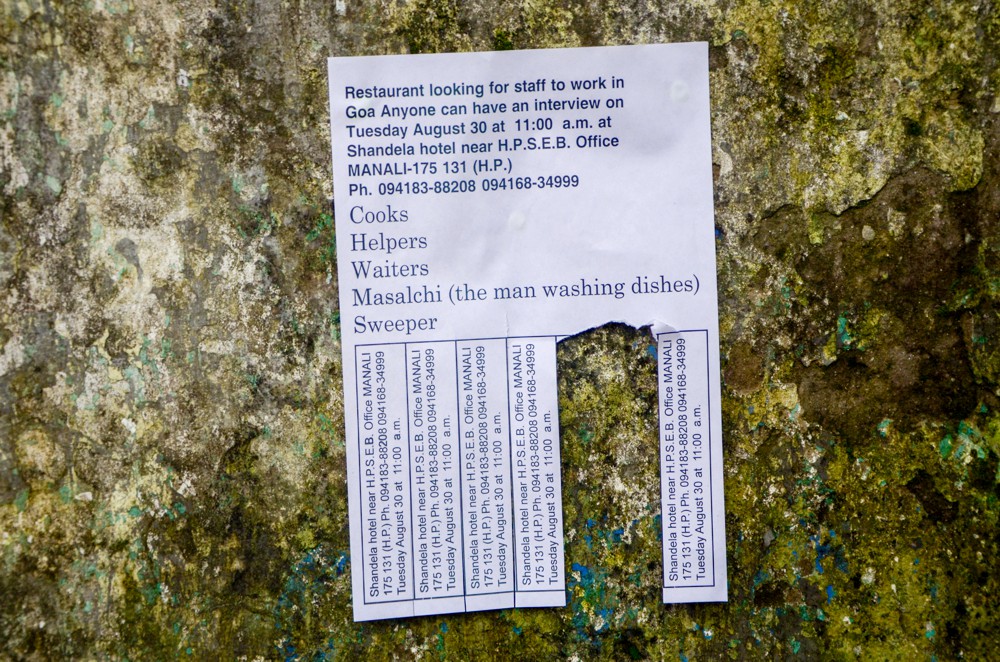
In the evening, while exploring in Manali, I came across this advertisement stuck on a wall.
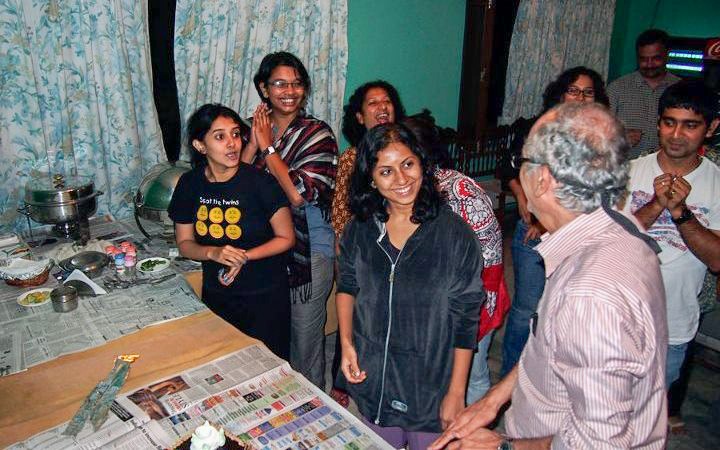
Day 3 – Aug 28
By afternoon everyone had checked into the hotel, 17 of us from different professions and locations, plus one stupid jerk.
Over lunch, Vinayak and Mohini, the tour organisers, briefed everyone on the trip’s Do’s and Don’ts.
Celebrating birthday of two fellow travellers who had their that week.
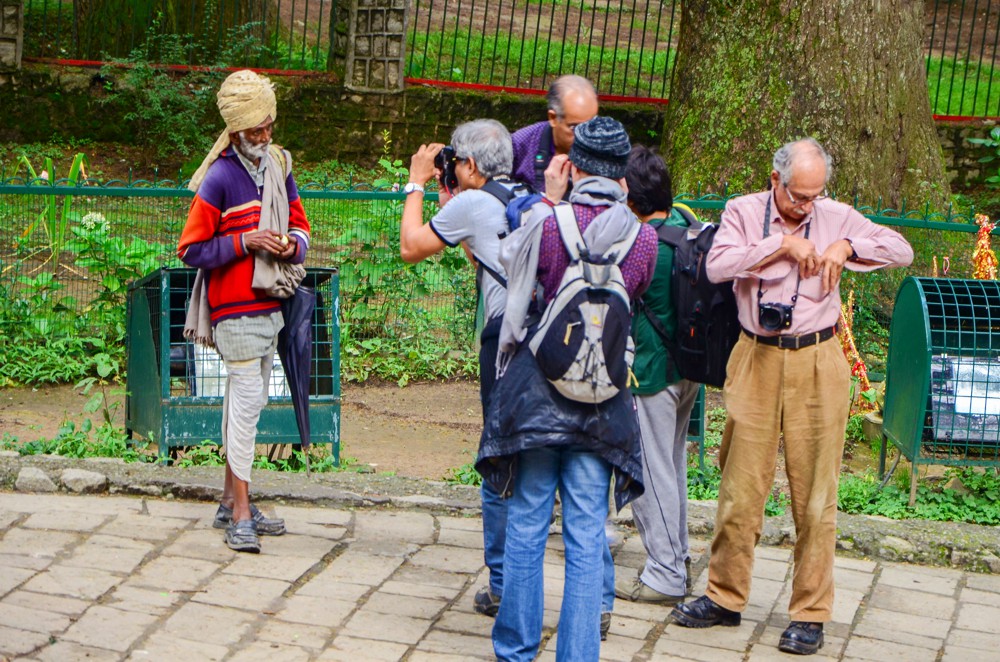
Then in the afternoon, we all went on a trek to the Hadimba Temple to try and get used to the high altitude that would follow.
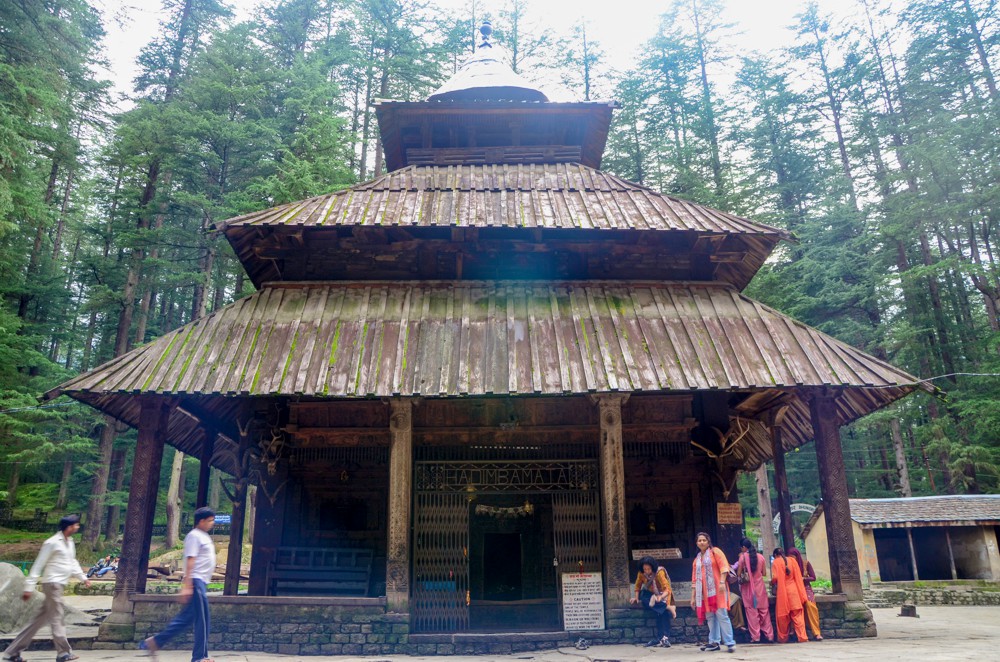
The Hadimba Temple is an ancient cave temple dedicated to Hidimbi Devi, wife of Bhima, a figure in the Indian epic Mahabharata. The temple at the foot of the Himalayas is surrounded by a cedar forest. The sanctuary is built over a huge rock jutting out of the ground which was worshipped as an image of the deity. The structure was built in 1553 by Maharaja Bahadur Singh.
https://en.wikipedia.org/wiki/Hidimba_Devi_Temple
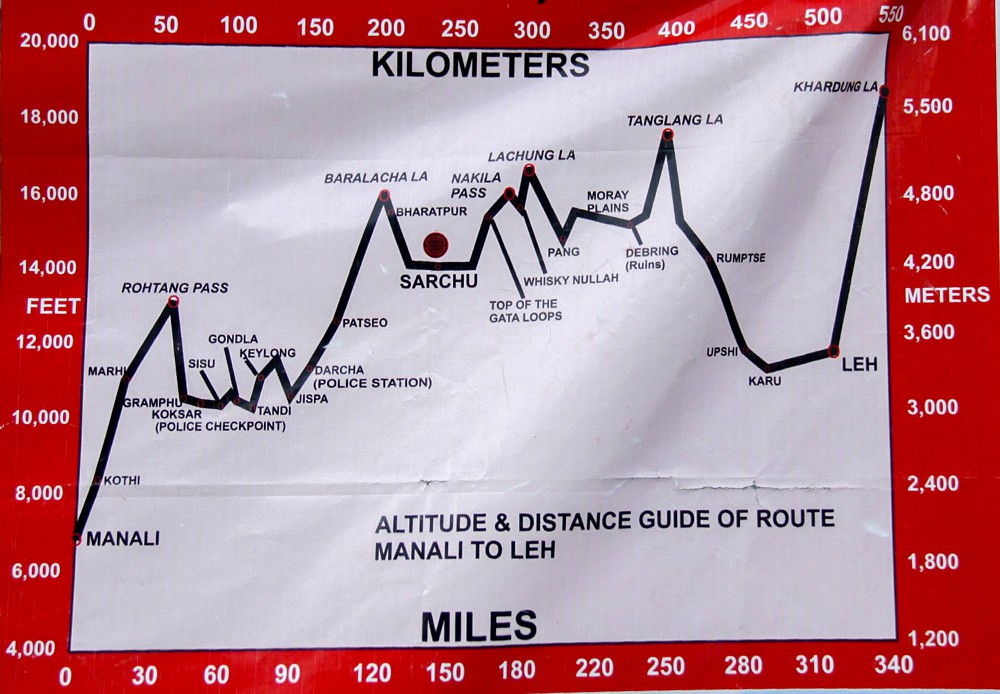
The Journey starts.
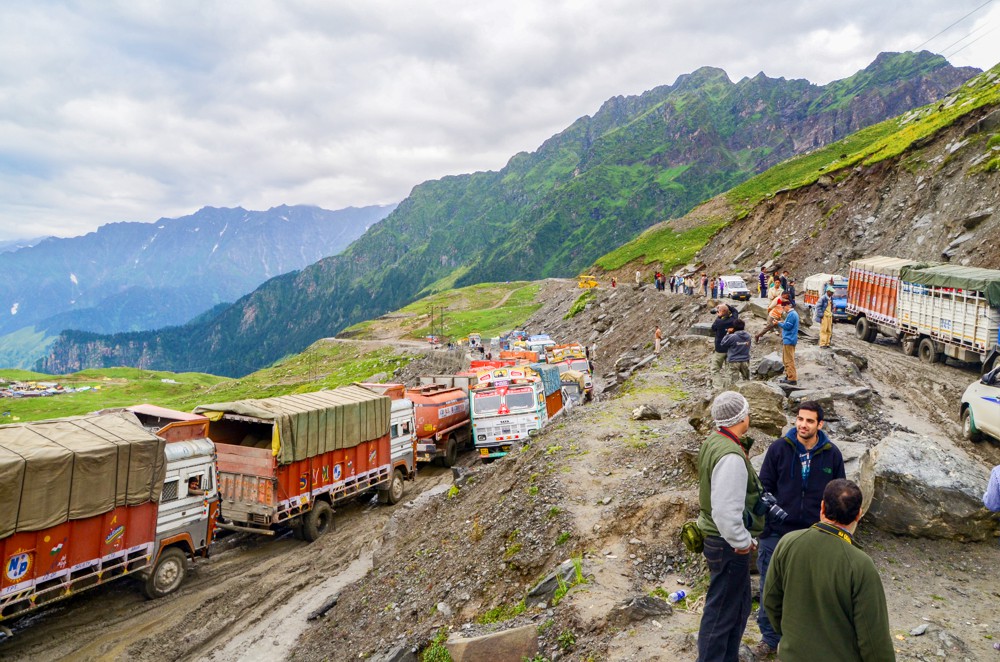
Day 4 – Aug 29: Manali to Sarchu
We left the hotel early in two minibuses, only to get stranded for a few hours on the Rotang pass owing to landslides.

Those are our vehicles stuck in the muck
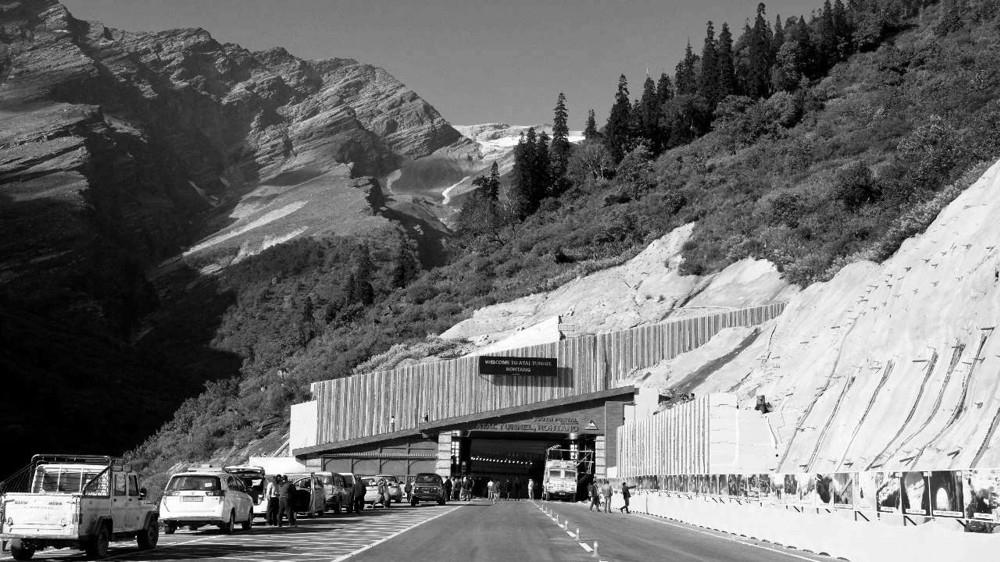
Now, the Atal tunnel, dug below the Rotang pass, reduces the distance between Manali and Leh by 46 kilometres and the travel duration by roughly 4 to 5 hours. It takes a little over 15 minutes to go from Manali to Lahaul and Spiti Valley.
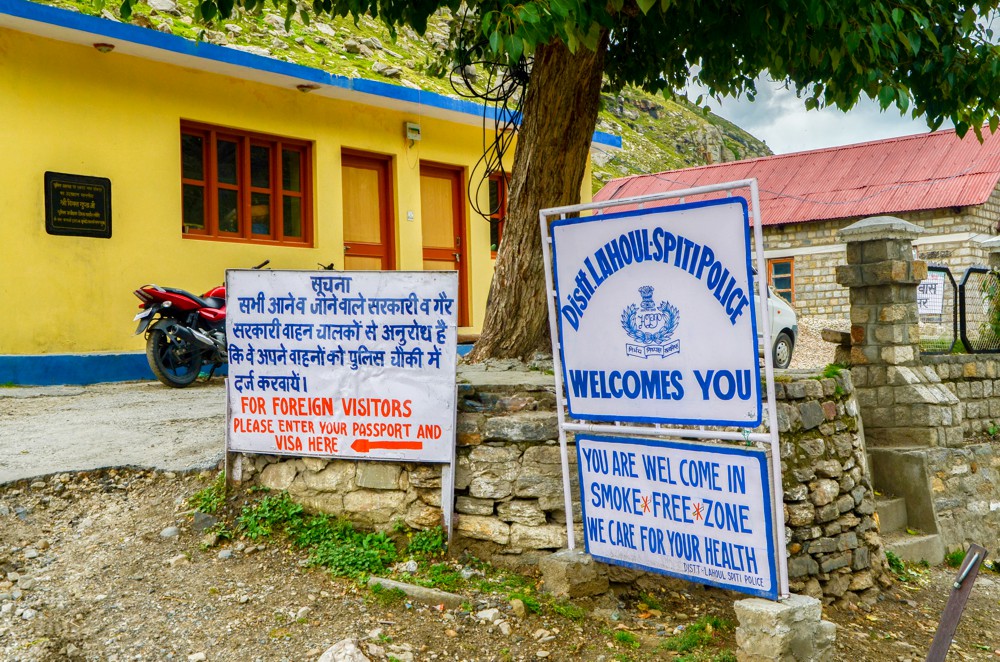
Lahaul and Spiti Valley Police Checkpost for permits.
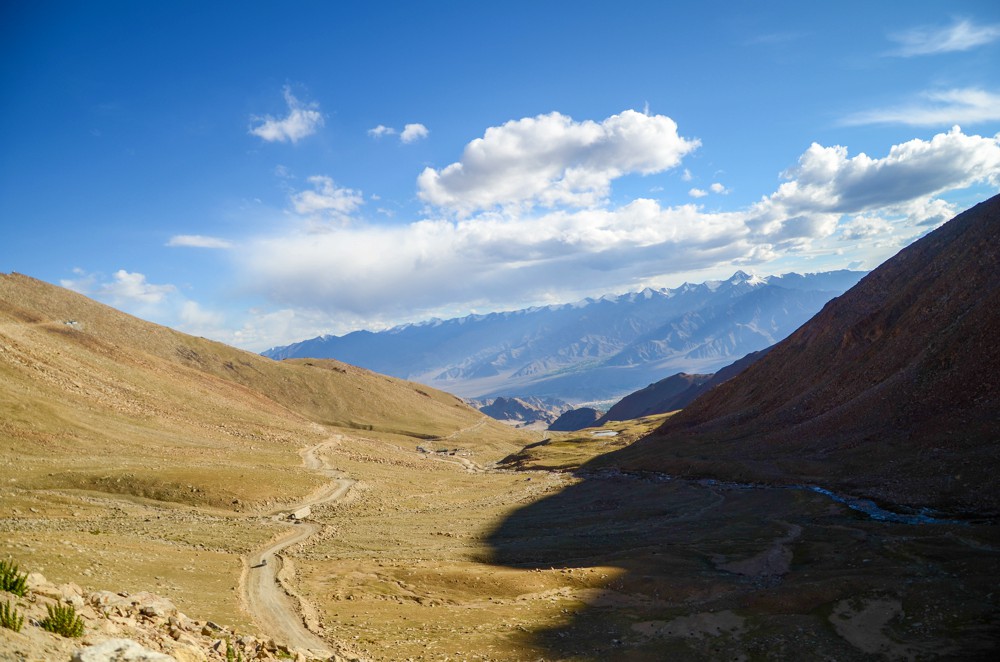
It was late evening and freezing by the time we arrived in Sarchu, but the tents at the campsite provided pleasant accommodation.
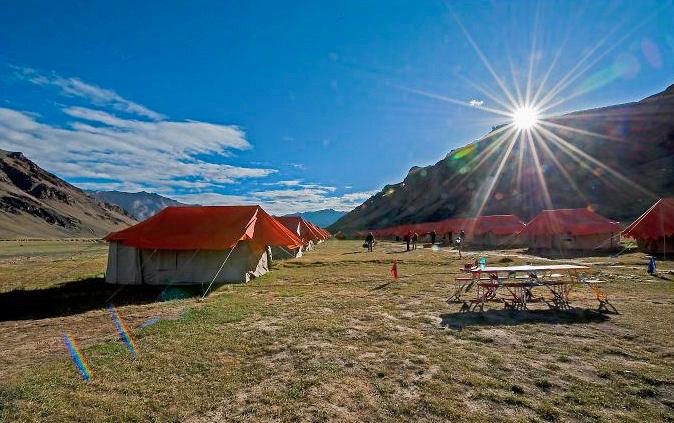
Photo of the campsite clicked next day by Sanjay C – a fellow traveller.
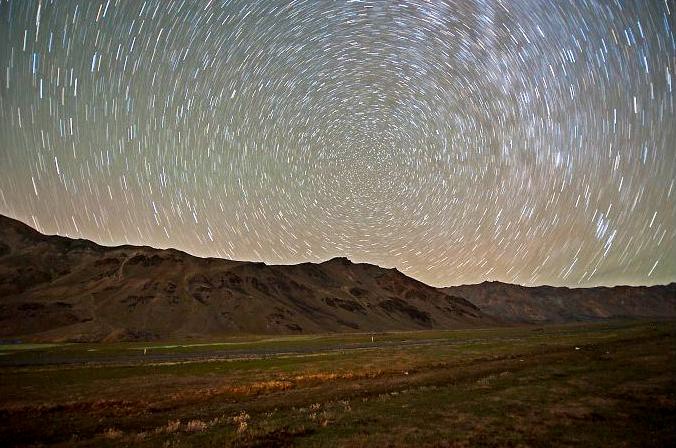
Sarchu is an excellent place to click star trails due to its clear night sky.
Photo by Sanjay C.
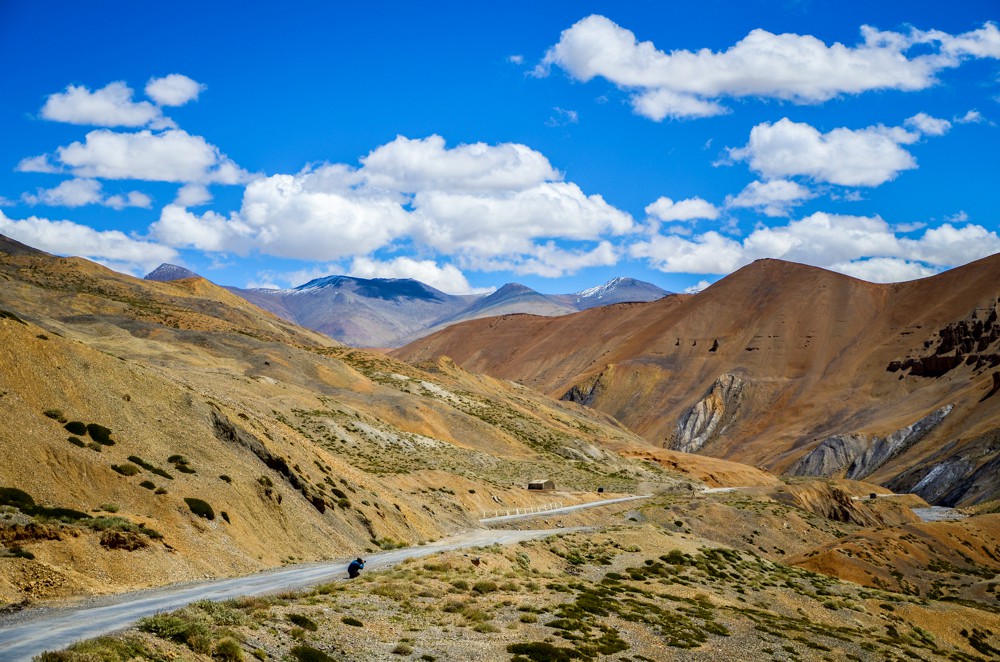
Day 5 – Aug 30: Sarchu to Leh
It took us around 8 hours to reach Leh which is about 275 kilometres from Sarchu.
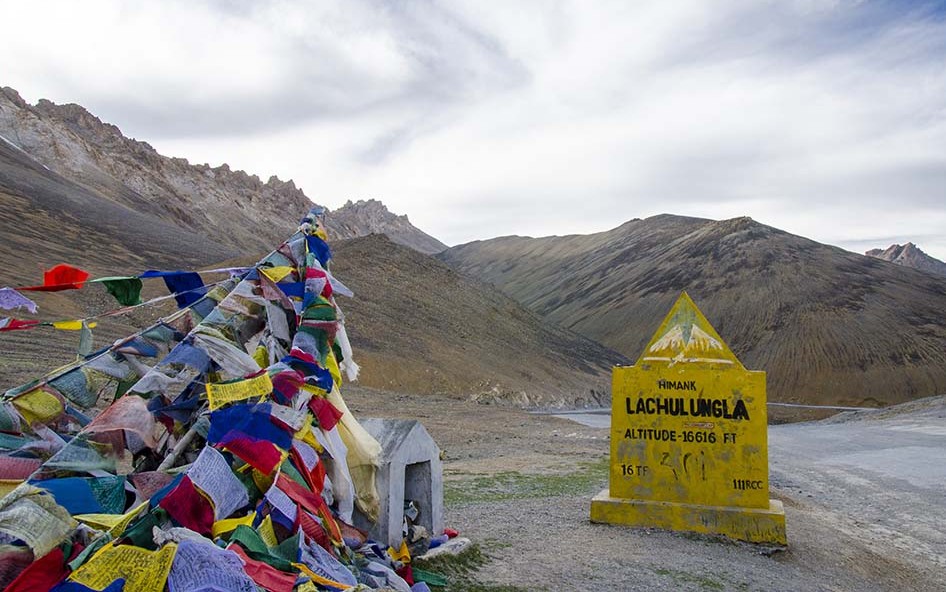
The twin passes of Nakee-la (15,547 ft) and Lachung-la (16,616 ft) are first.
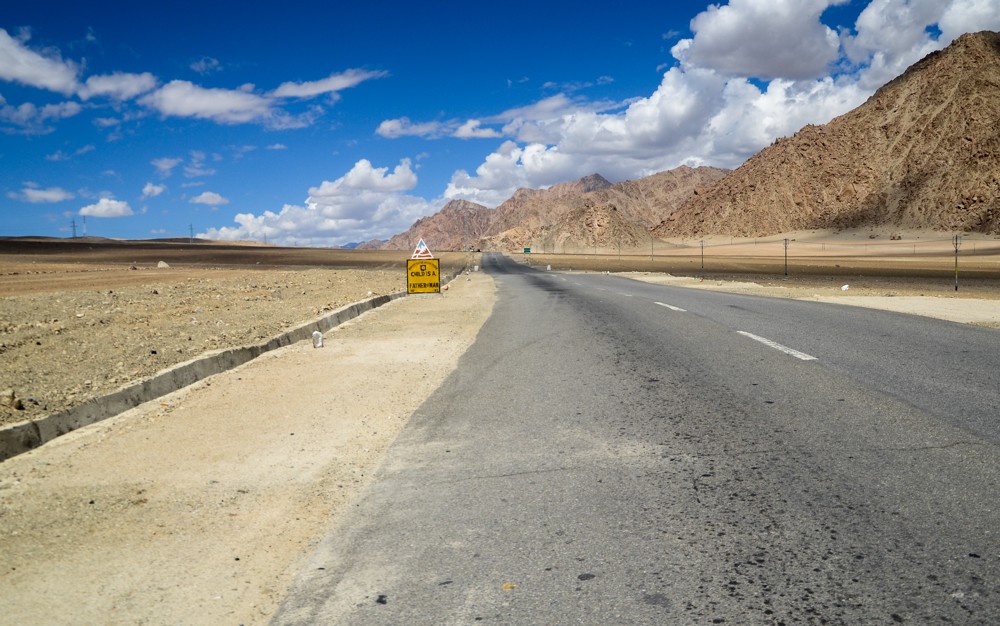
Followed by a 40-kilometer stretch of beautifully laid road on the Moray Plains
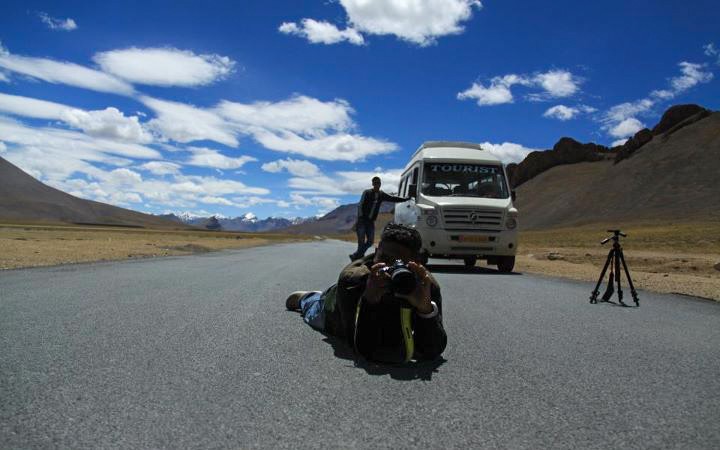
with panoramic views of the mighty Himalayas in the distance.
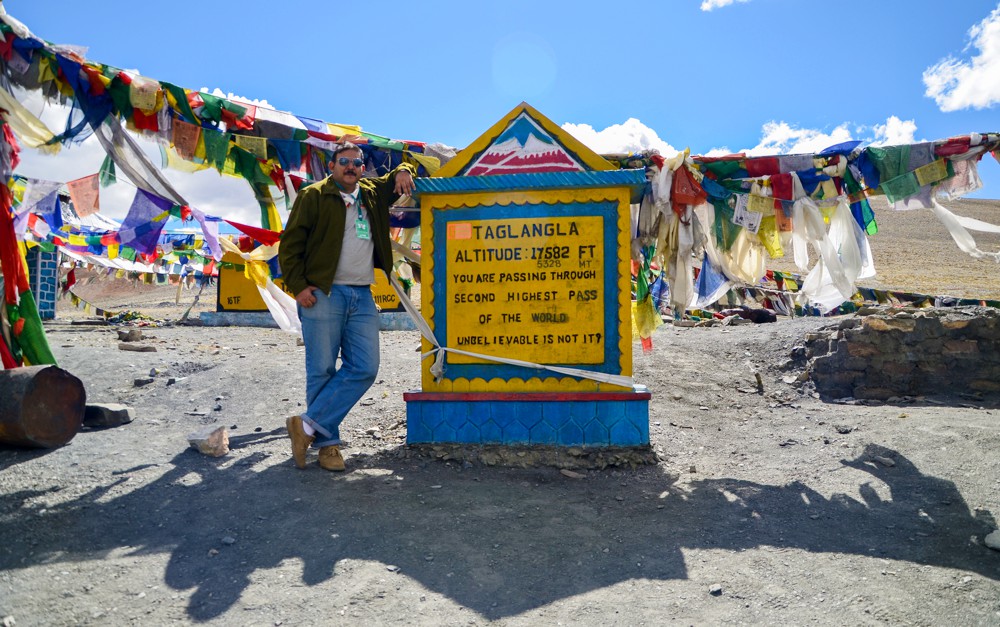
Then the ascent to the mighty Tanglang-la (17,480 ft), Ladakh’s second highest peak.

From there it was one smooth drive to Leh where we checked into a guesthouse in the heart of the city by late afternoon.
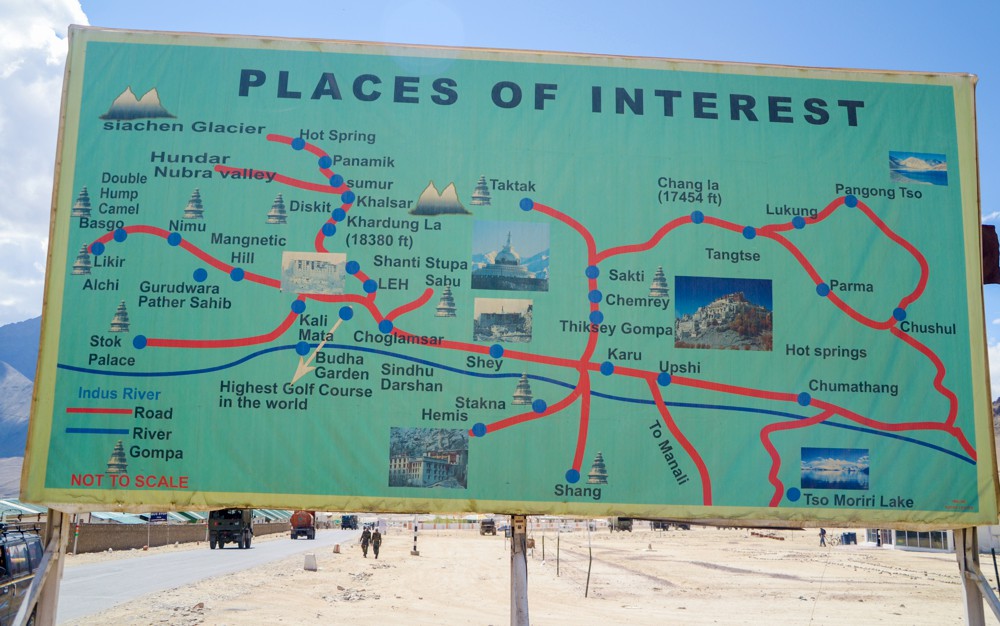
Places of interest in and around Leh – saw this hoarding on the way

EXPLORING LEH
Day 6 – Aug 31: Thikse Monastery & Khardung La
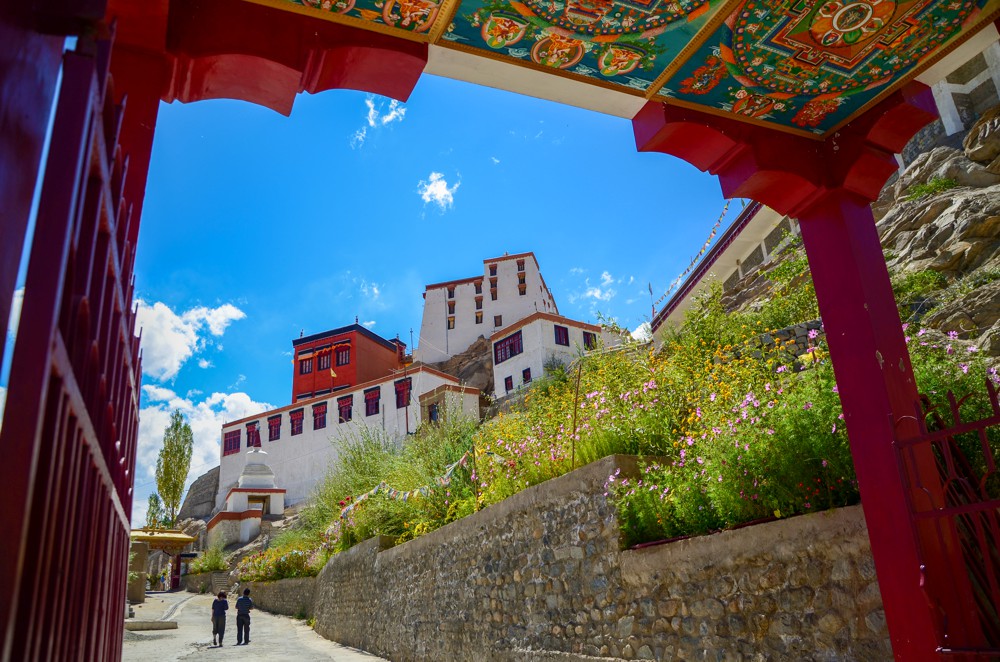
We went to the Thikse Monastery in the morning, which is located on top of a hill near Thiksey, some 19 kilometres east of Leh. It is the biggest gompa in central Ladakh and has a striking similarity to Tibet’s Potala Palace.
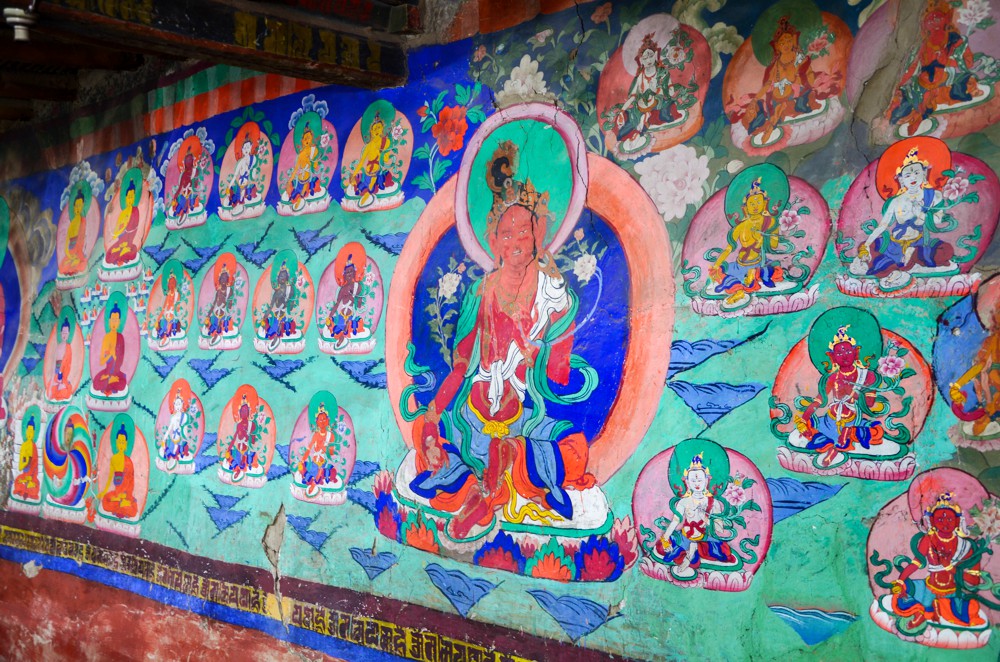
The twelve-story structure holds stupas, sculptures, thangkas, wall murals, and swords, among other Buddhist artefacts.
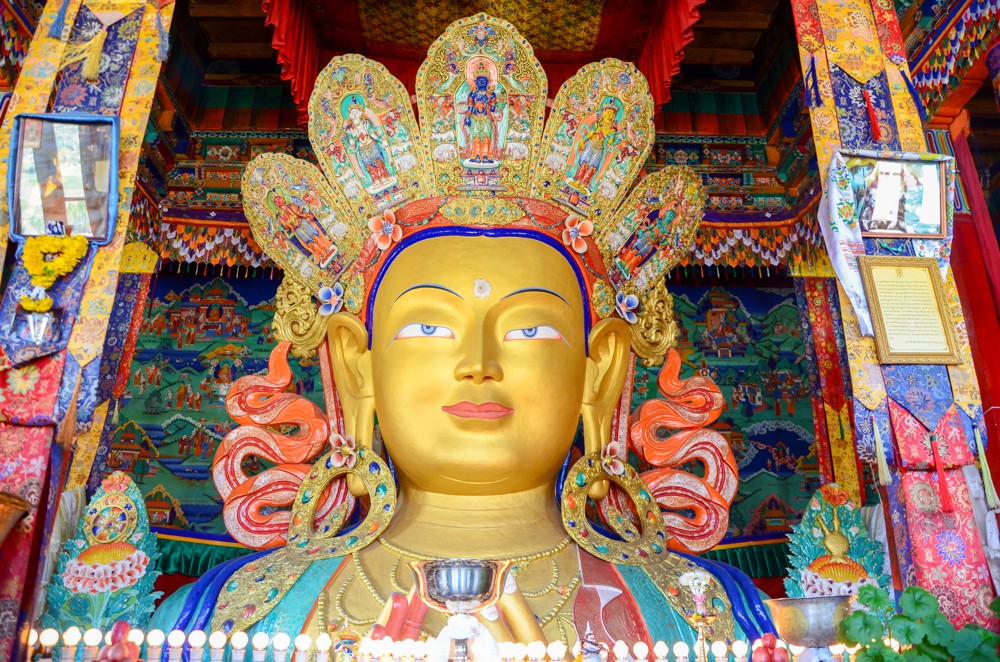
The Maitreya Temple, which was built to commemorate the visit of the 14th Dalai Lama to this monastery in 1970, it contains a 15 metres (49 ft) high statue of Maitreya, the largest such statue in Ladakh, covering two stories of the building.
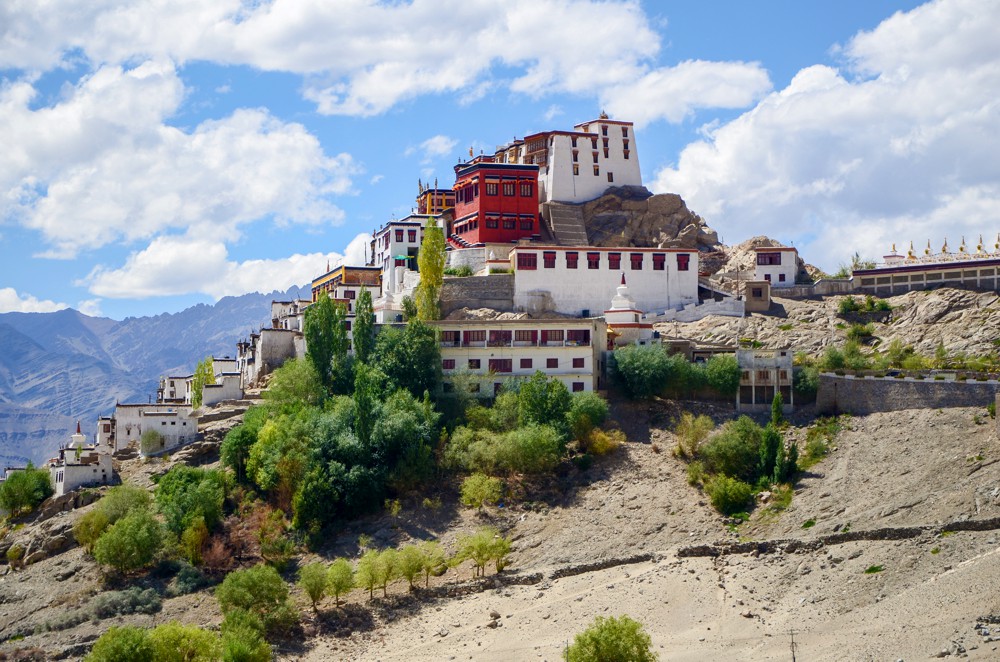
Read more: https://en.wikipedia.org/wiki/Thikse_Monastery
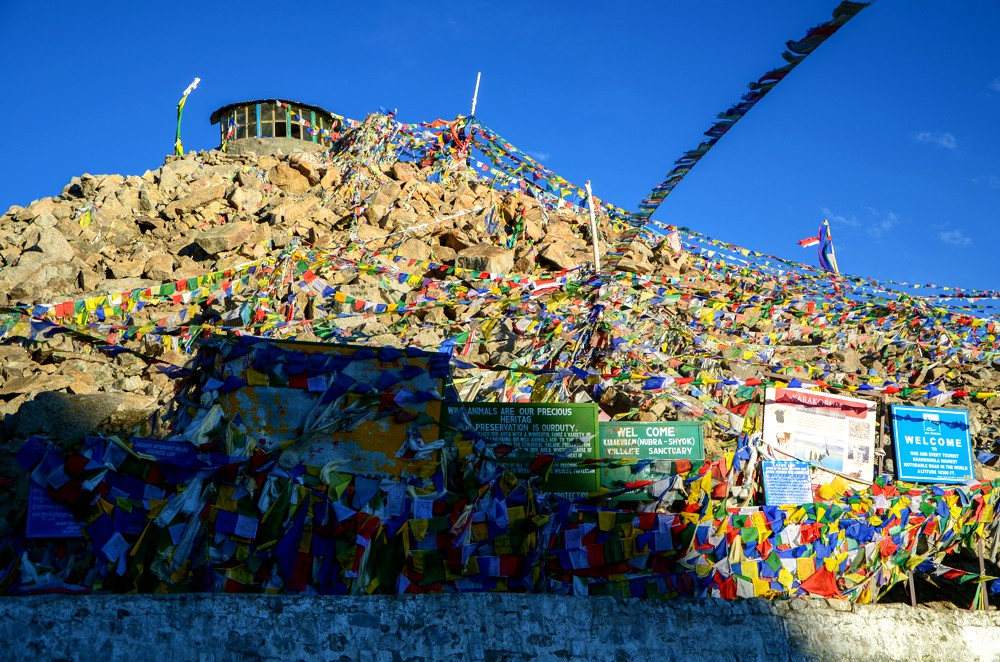
After lunch, we left to visit Khardung La, which is 40 kilometres from Leh and takes 3 hours to reach depending on road conditions and the amount of military vehicles that must be overtaken on the narrow roads.
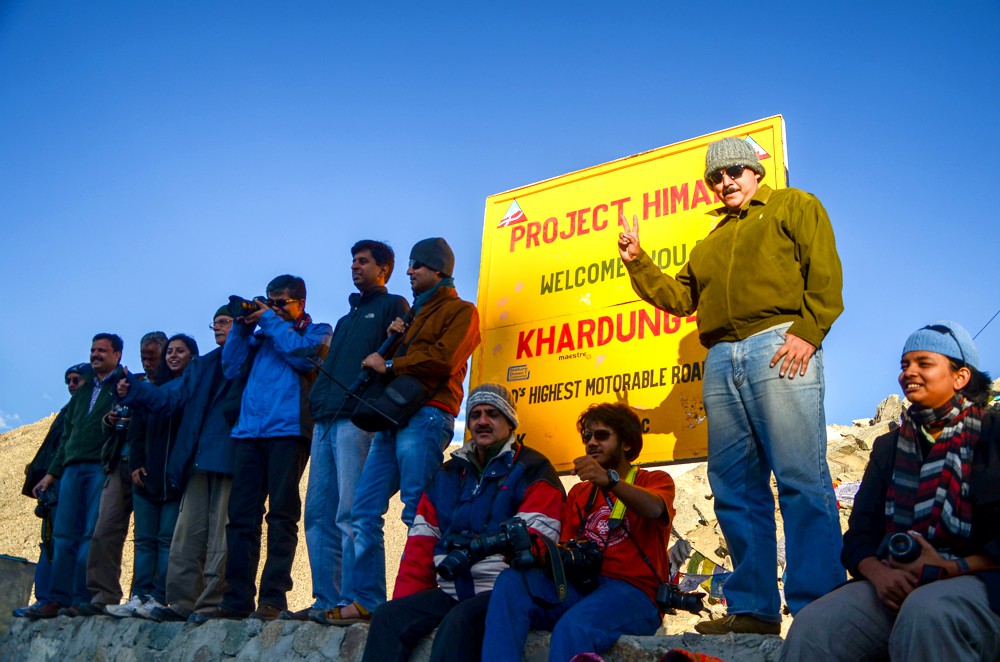
Khardung La, at 5,359 metres (17,582 feet), is one of the world’s highest motorable passes. The pass on the Ladakh Range is north of Leh and is the gateway to the Shyok and Nubra valleys. It was built in 1976 and opened to public vehicles in 1988. The pass is maintained by the Border Roads Organisation and is of great strategic importance as it is used to carry goods to the Siachen Glacier.
https://en.wikipedia.org/wiki/Khardung_La
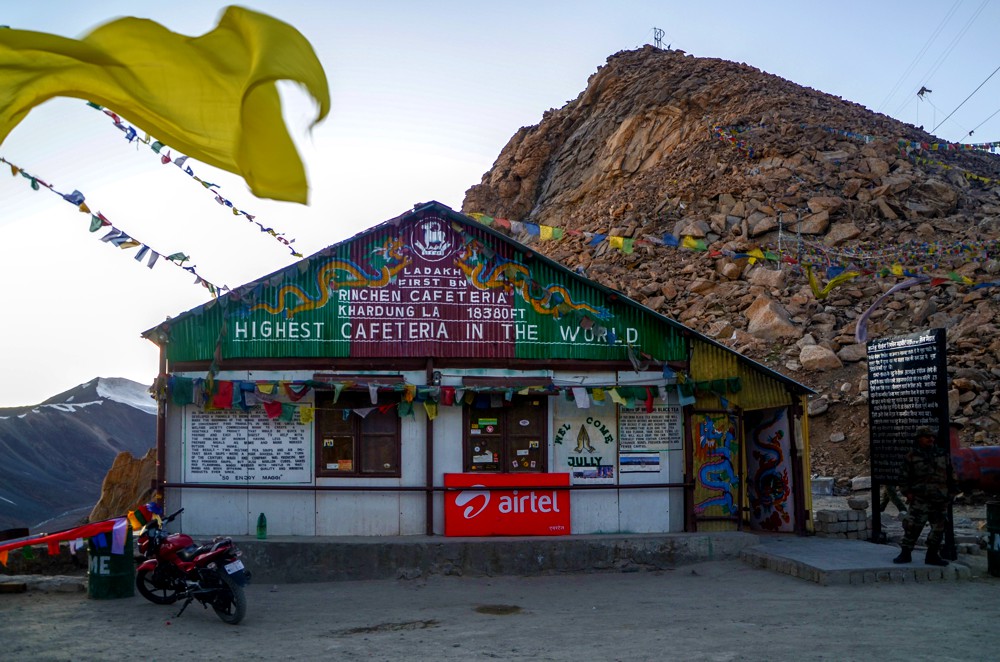
Rinchen Cafeteria – the highest cafeteria in the world
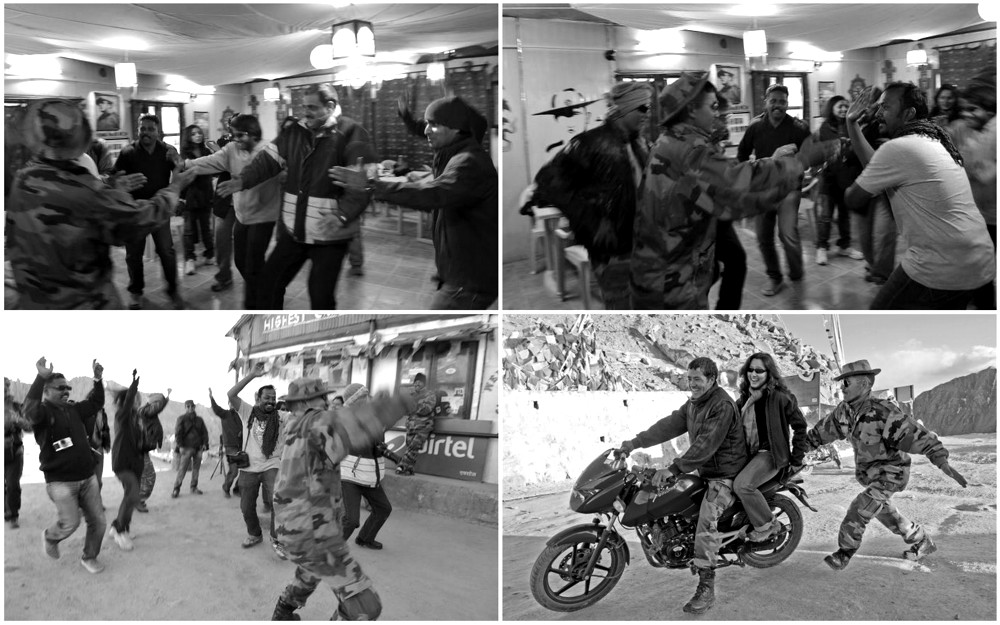
The high altitude gave me a horrible headache, but several of my companions were perfectly well and spent an eternity dancing with the army personnel stationed there, before returning back to Leh.
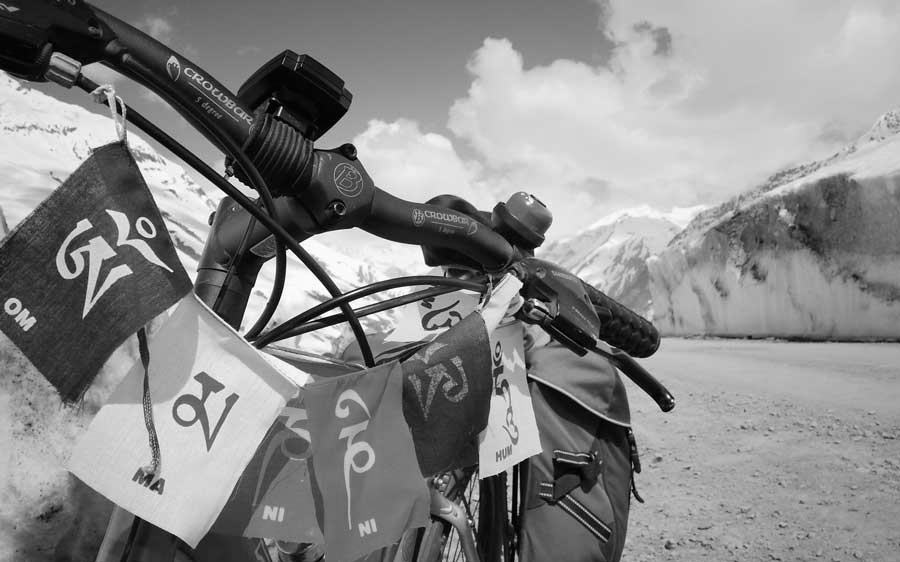
On the way we crossed a expedition team of girls who were enroute to Khardungla. They had cycled all the way from Manali. A Goan girl was also part of the team. If anyone knows who she is, let me know.
A friend, who is part of the Margao-based Xaxti Riders is attempting to cycle from Manali to Khardungla this month end.
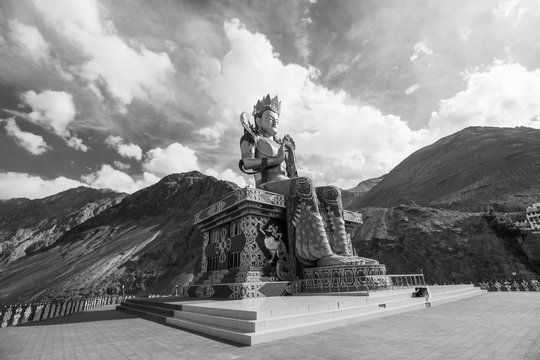
From Khardungla it is also possible to get to Nubra Valley – a popular tourist destination, unfortunately this was not included in our tour itinerary. Nubra Valley known as the Orchard of Ladakh is located approximately 120 kilometres from Khardungla and famed for its orchards, picturesque panoramas, Bactrian camels and monasteries.
read more: https://www.thrillophilia.com/attractions/nubra-valley
That’s all for Part 2 of the travelogue, sharing some landscape photos of the Manali to Leh route, hope you like them.
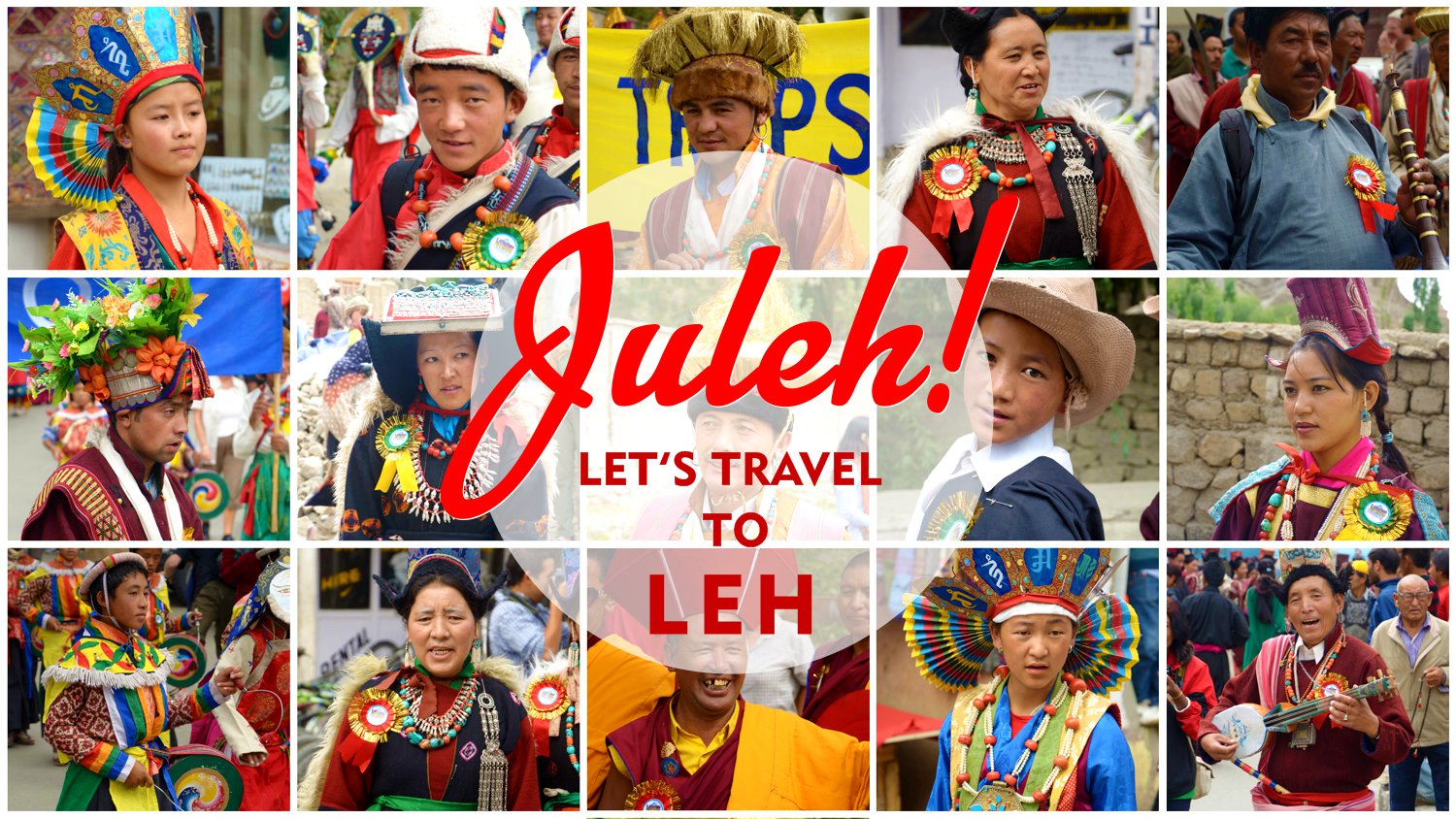
Welcome to day 3 of the Leh travelogue.
Day 7 – Sept 1: Ladakh Festival – around which our tour was planned
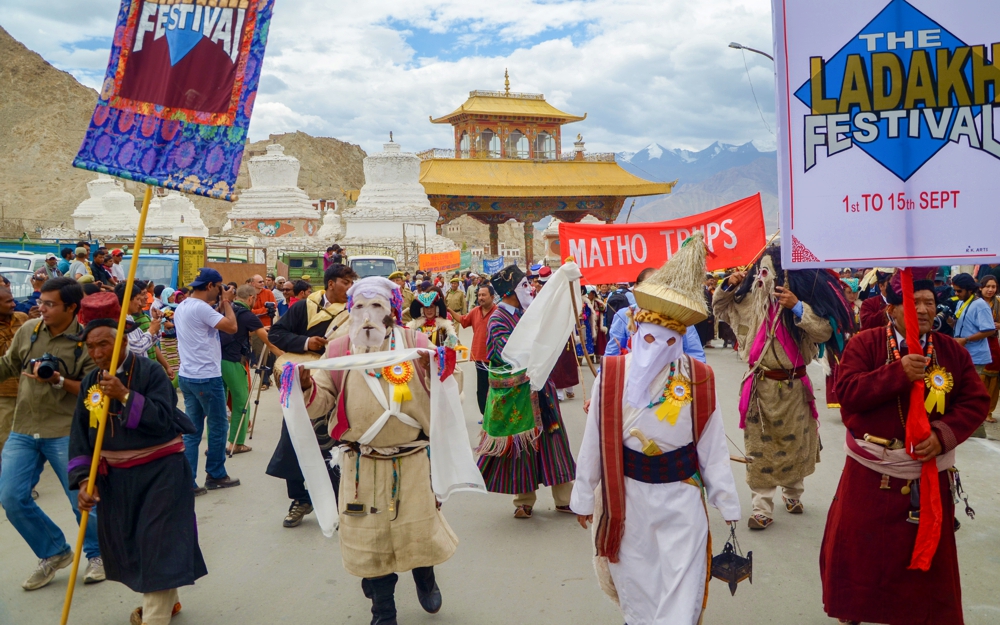
Every year, from September 1 to 15, the Ladakh festival takes place in Leh and surrounding areas. Organised by the Tourism Department with the help of the locals, it aims to promote tourism, the rich culture of the region and attract thousands of tourists from across the globe.
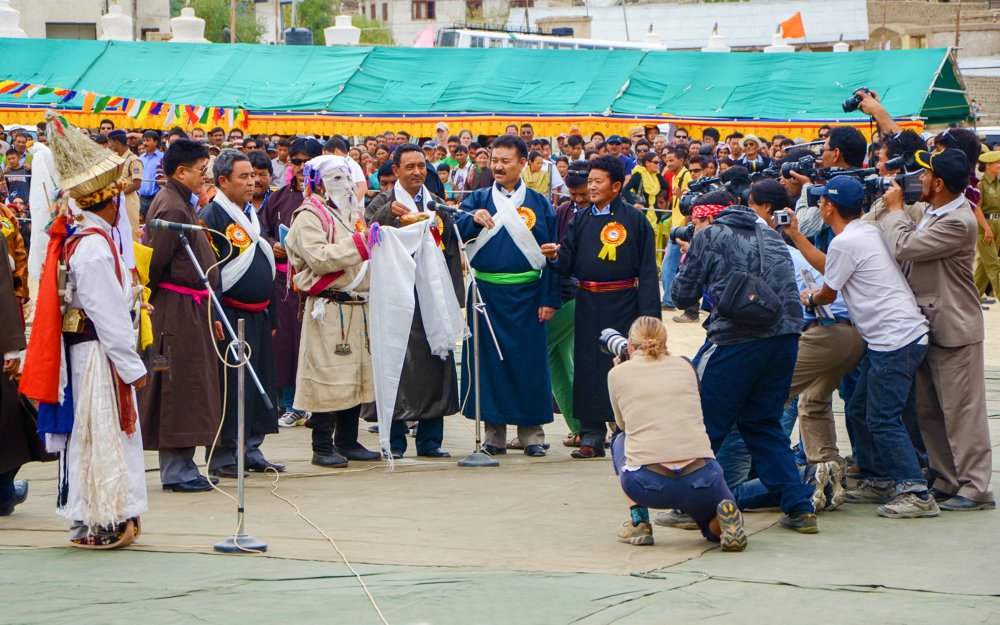
The inauguration event is held on a grand scale in Leh, with a parade of various cultural troupes from around Ladakh.
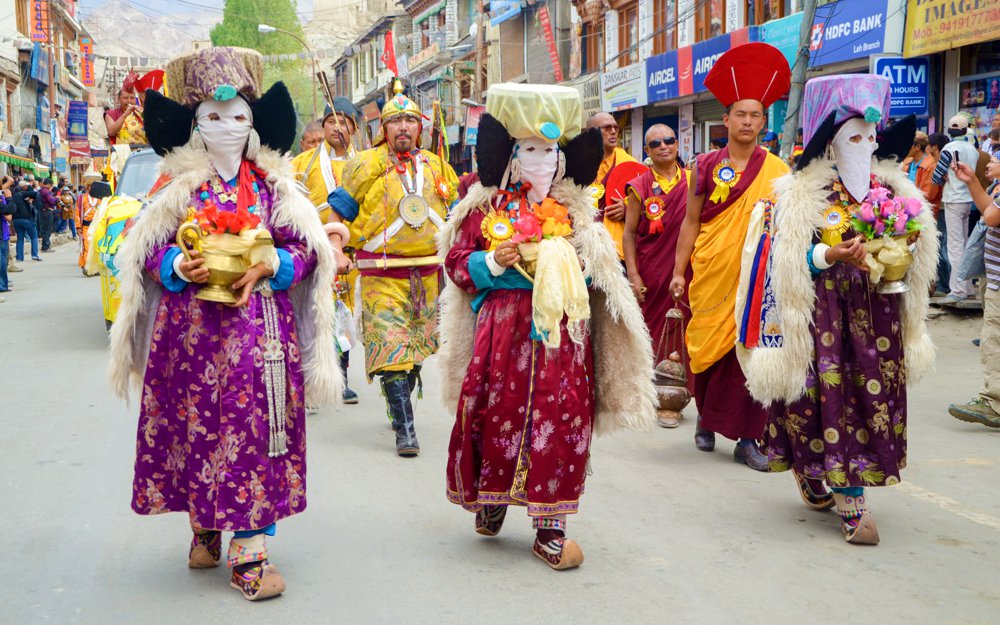
It passes through Leh Market dancing, singing with traditional music, in colorful traditional Ladakhi dresses, and finishes at Polo ground after performing their best dances and songs.
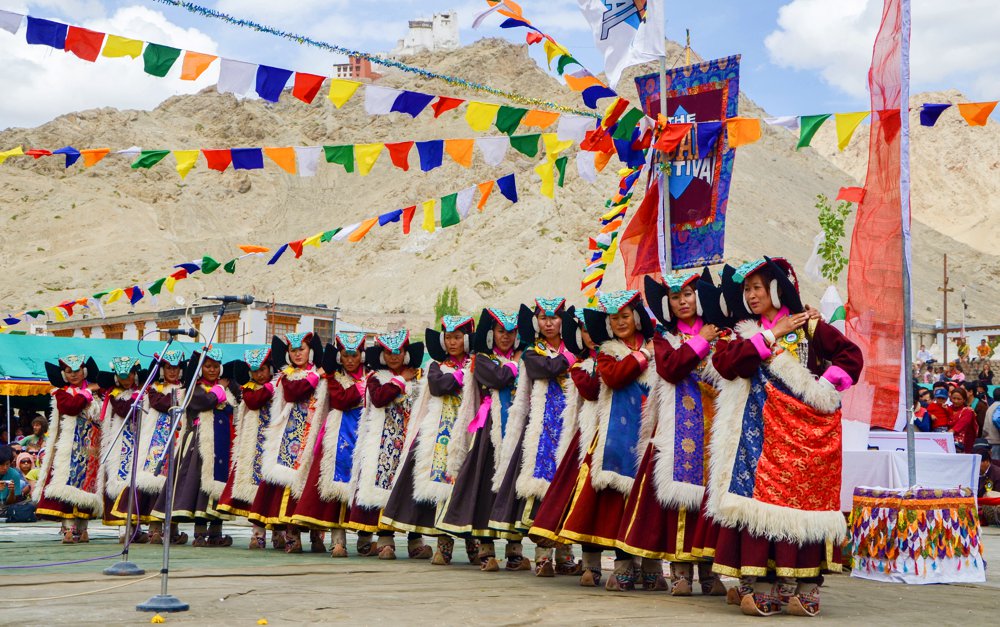
Folk dances, traditional music, Ladakhi food, handicraft products, archery competitions, and polo matches are among the cultural events held. One of the festival’s attractions are mask dances performed at several monasteries.
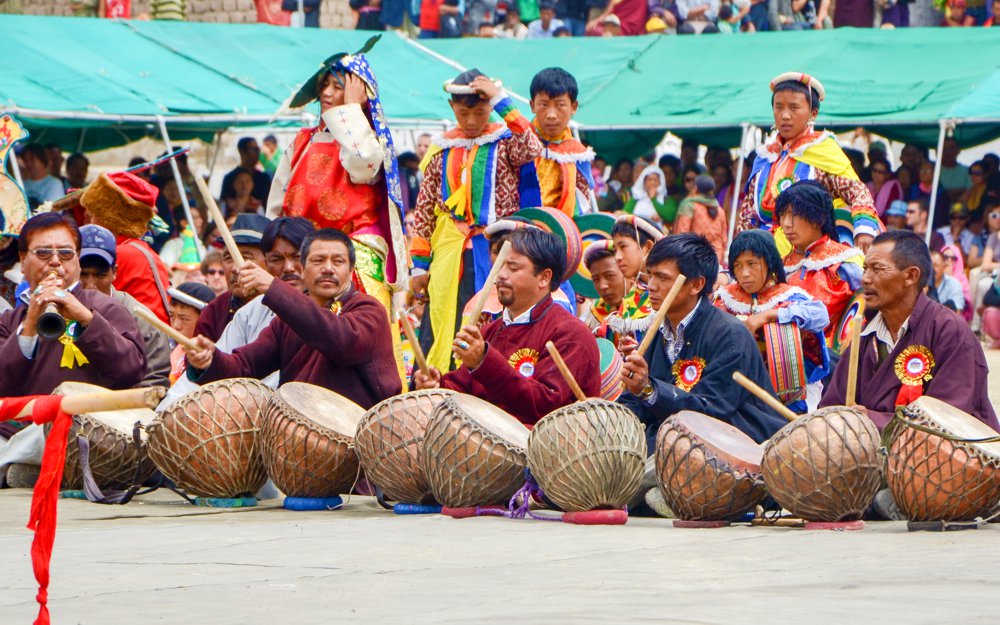
In Leh town, there are a number of musical and dance performances held in the evenings. This 15-day festival is an excellent chance for travellers to learn about the Ladakhi people’s culture and way of life.
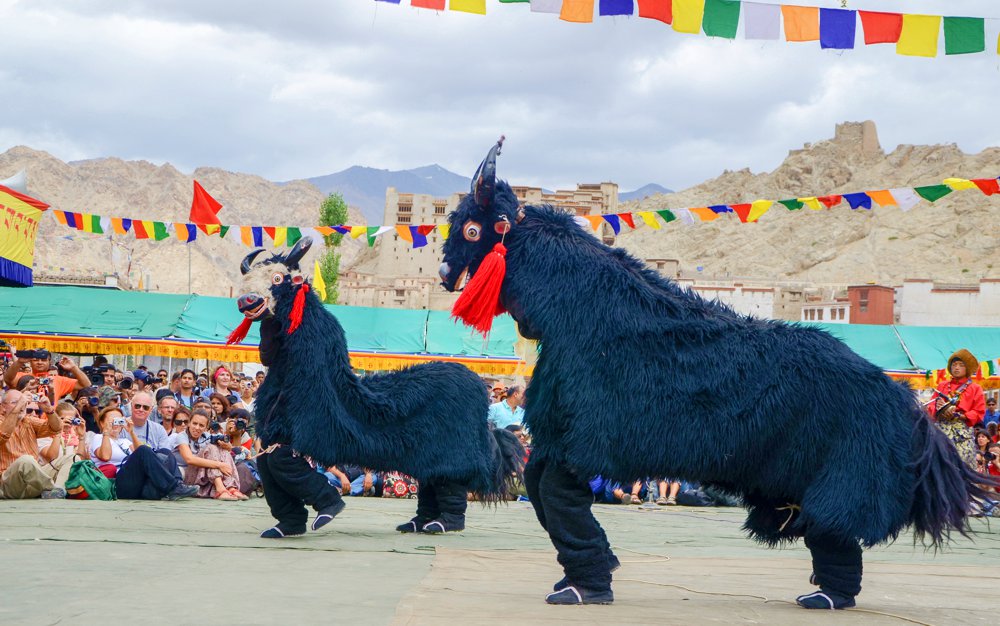
Check these website for other festivals taking place in Ladakh throughout the year.
https://www.reachladakh.com/fairs-and-festivals/festivals
https://www.tourism-of-india.com/festivals-ladakh.html
https://www.ju-lehadventure.com/ladakh-information/festivals-of-ladakh

That’s some of us.

Day 8 – Sept 2: Pangong Lake
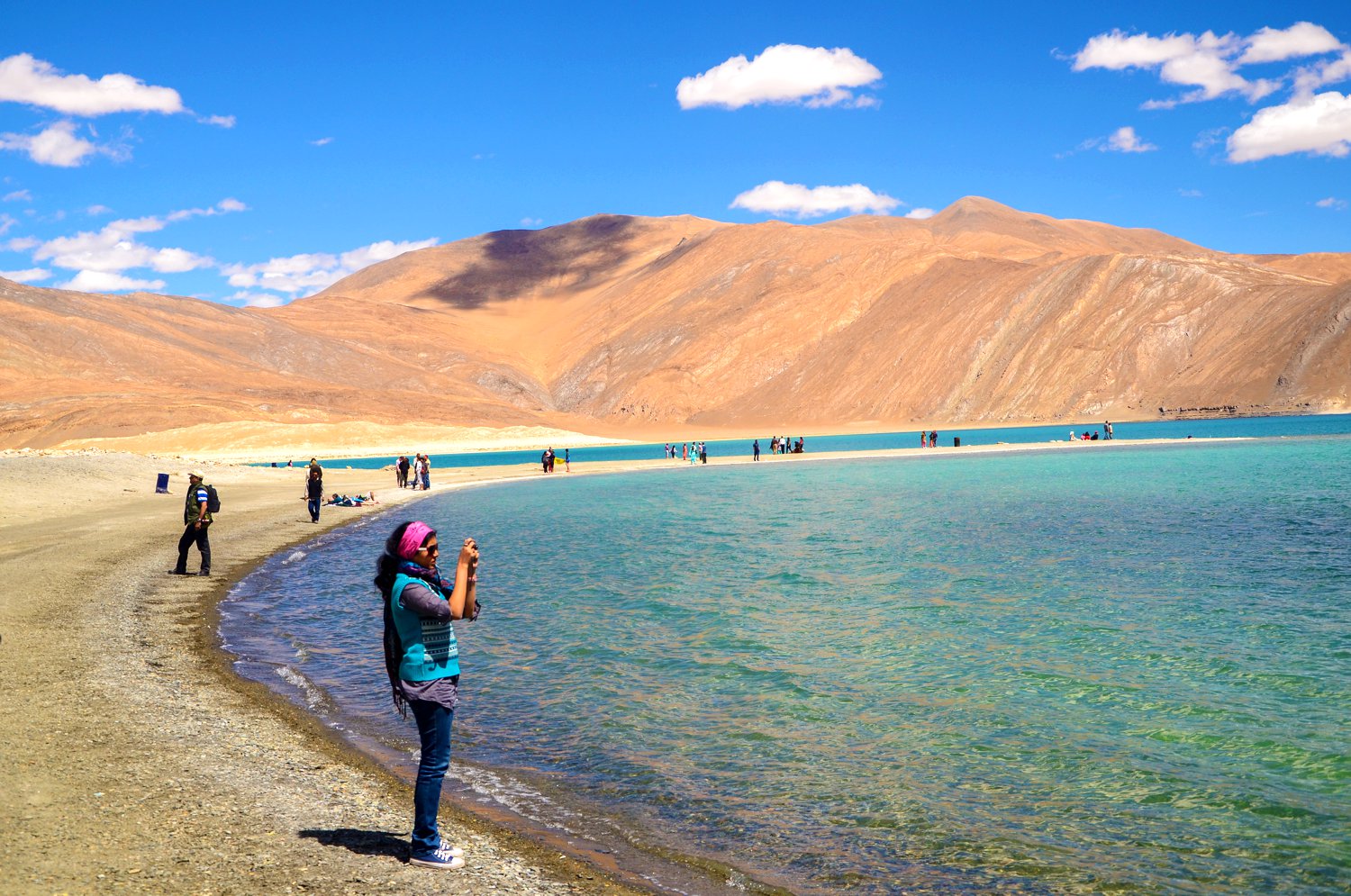
After 3 Idiots hit theatres, Pangong – the shimmering, turquoise 125km lake that served as backdrop for 3 Idiots’s soaring conclusion – rose to unprecedented popularity.
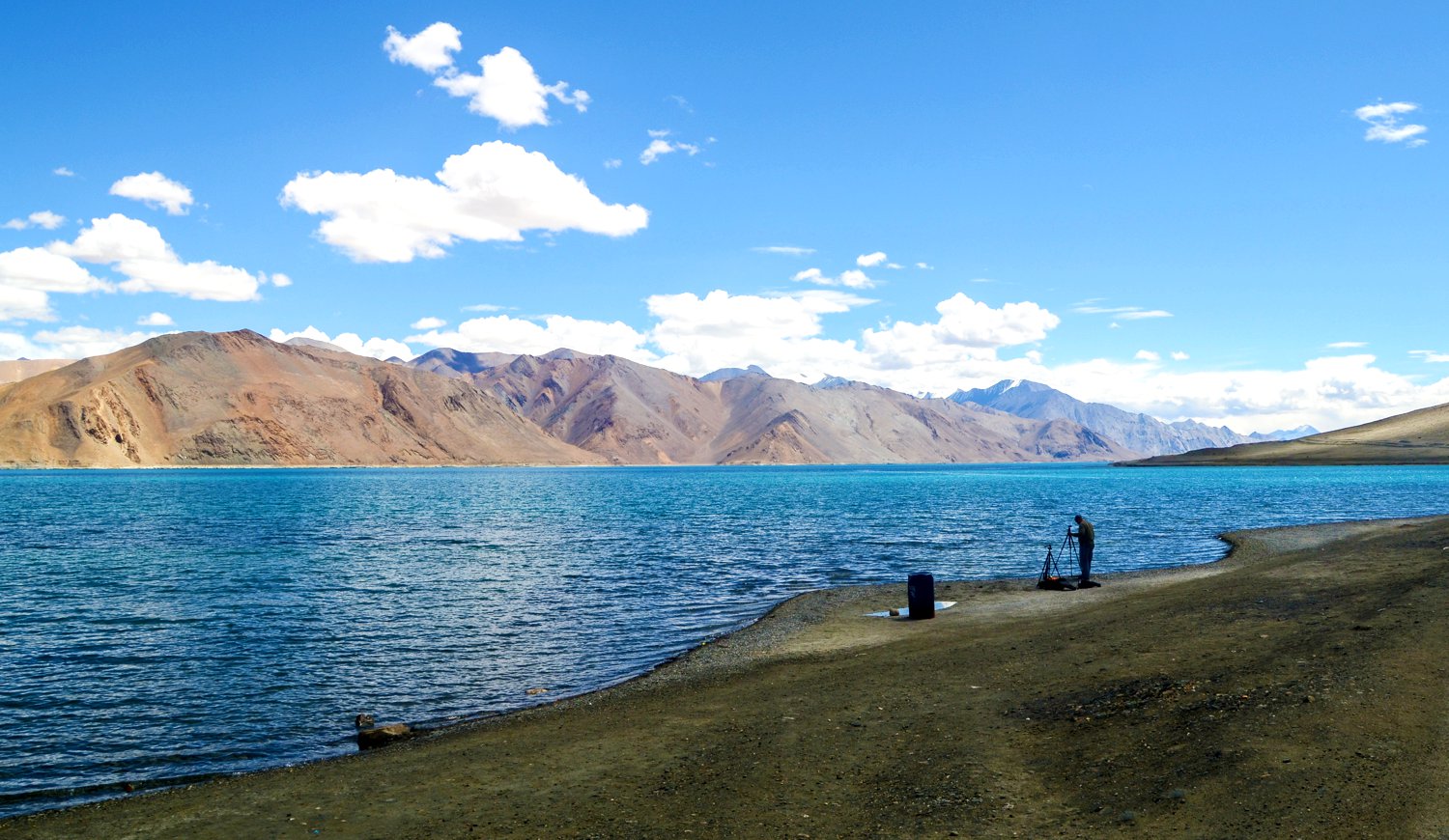
The lake derives its name from the Tibetan word, “Pangong Tso”, which means “high grassland lake”, situated at a height of almost 4,350m, is the world’s highest saltwater lake. Its water, which seems to be dyed in blue, stand in stark contrast to the arid mountains surrounding it. Extending to almost 160km, one-third of the Pangong Lake lies in India and the other two-thirds in China.

Leh to Pangong lake distance by road using Chang La pass route is about 170 km. This is the route we took. We started early morning and it took us 5 hrs to reach the lake.
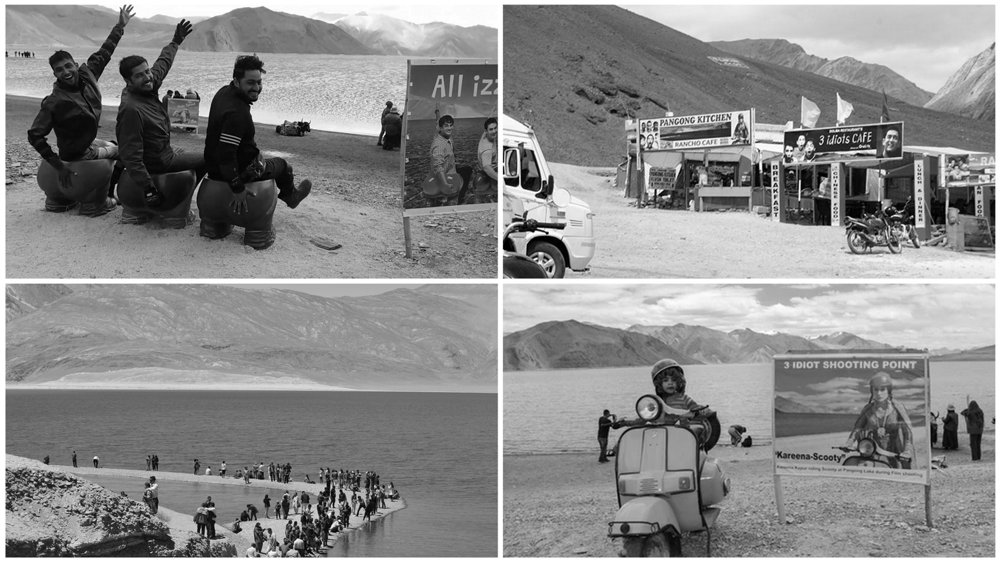
All this wasn’t there when we went, must have sprung up a few years later, once more and more tourists started arriving.
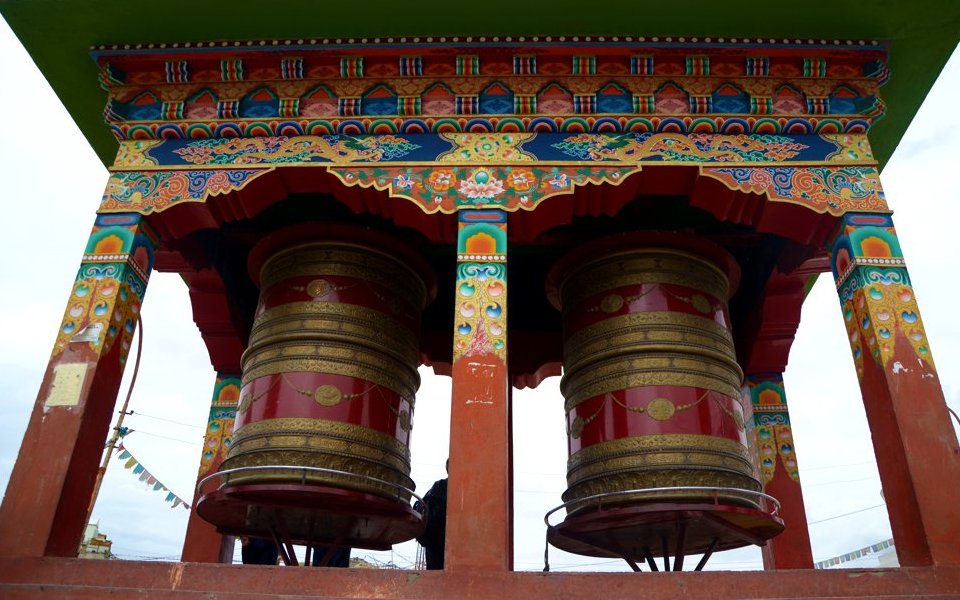
Day 9 – Sept 3: Shey monastery, Indian Army Hall of Fame & Shanti Stupa
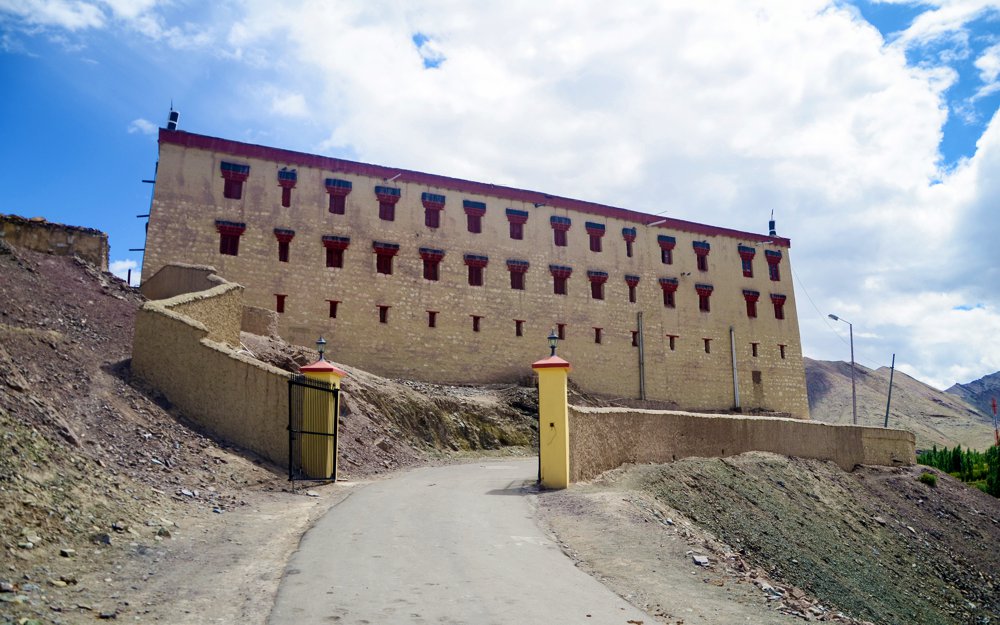
Shey Monastery and Palace are situated 15 kilometres from Leh town and were originally Ladakh’s summer capital. Deldan Namgyal constructed the present Shey Palace and Gompa in memory of his late father, Sengge Namgyal, in 1655. The royal family lived at the Shey Palace until 1834 AD, when they moved to the Stok Palace. ASI has now taken over the Palace for conservation purposes.
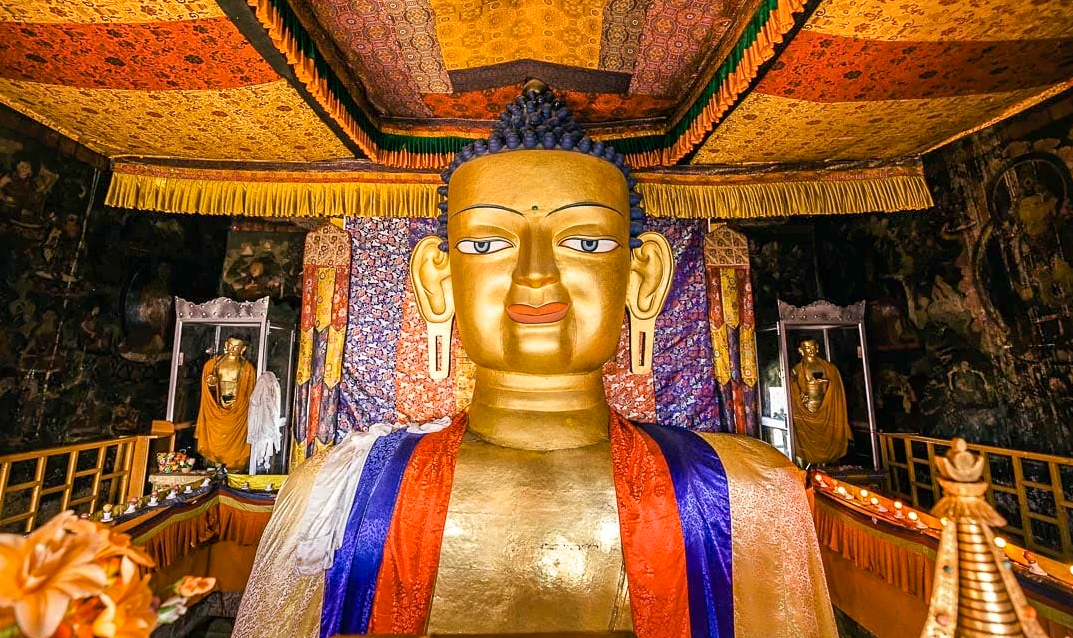
The monastery is famous for its sitting Shakyamuni Buddha statue, which is made of copper and gilded with gold. Shakyamuni Buddha is so named since Buddha was the sage (muni) of the Sakya people who resided in the Himalayan foothills and their capital was Kapilvastu. It is said to be Ladakh’s second-largest such statue.

Shey Palace also has Leh’s largest victory stupa, the top of which is made of pure gold.
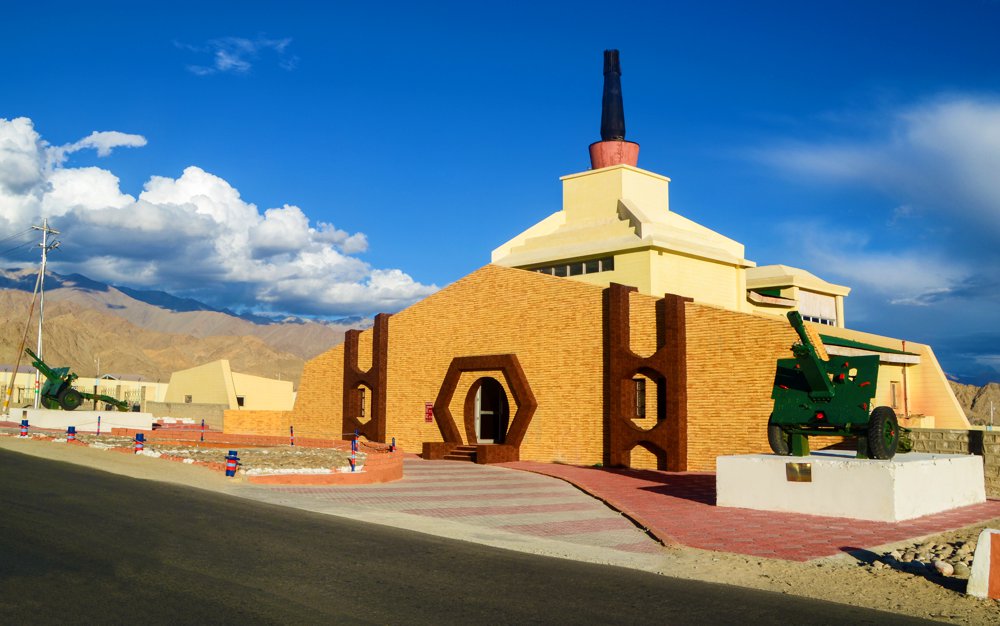
Indian Army Hall of Fame
The Indian Army built the Hall of Fame, a museum that encapsulates the essence of patriotism and showcases exhibits pertaining to the valour of Indian troops and their valiant exploits in order to preserve our country’s safety and security. Its located around 4 kilometres from Leh on the Leh-Kargil Road.
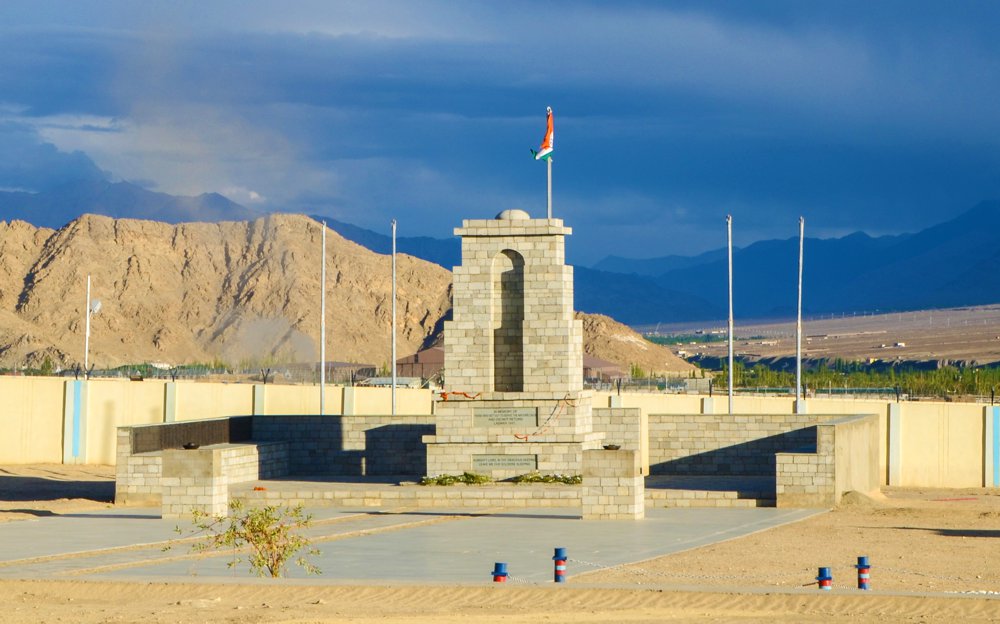
https://www.lehladakhindia.com/hall-of-fame/
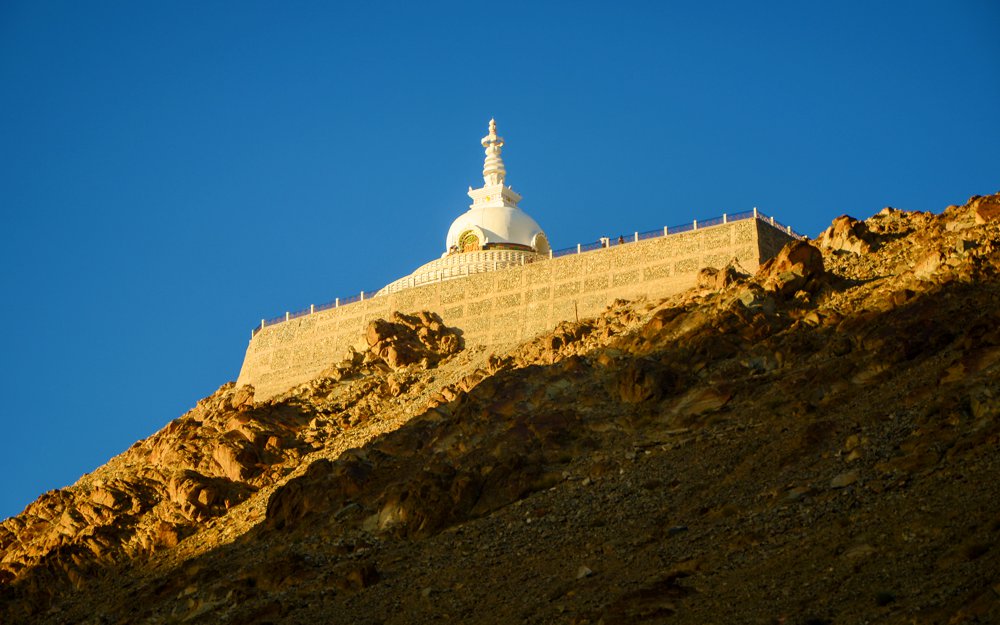
Shanti Stupa
This white domed-shaped monument was built by the Japanese Buddhist organization to commemorate the completion of 2500 years of Buddhism and promote world peace.

It was inaugurated by His Holiness the Dalai Lama in 1985.
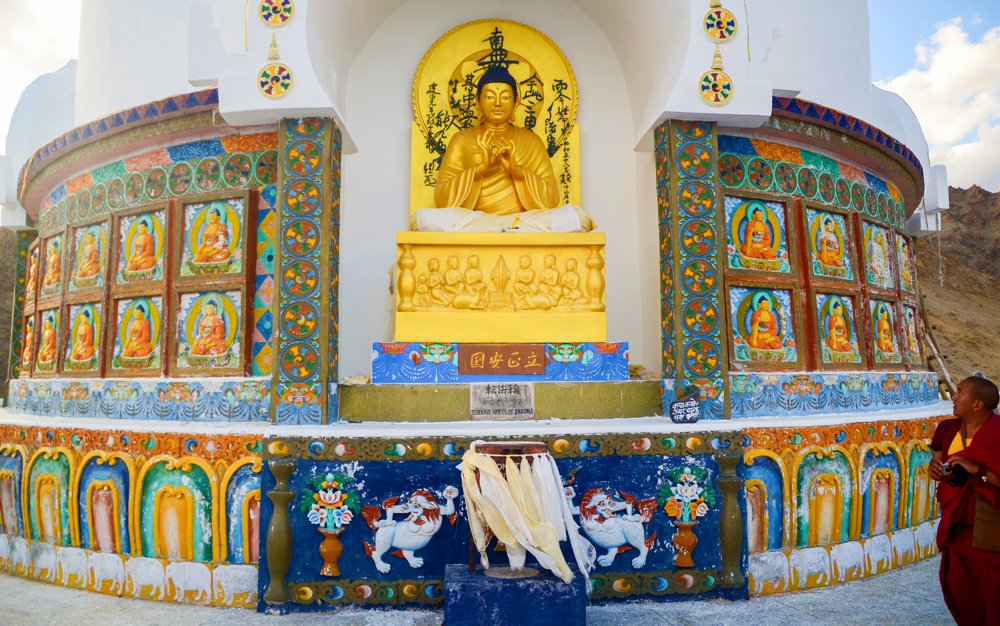
The monument is notable for its gilded panels depicting Lord Buddha’s life stories.
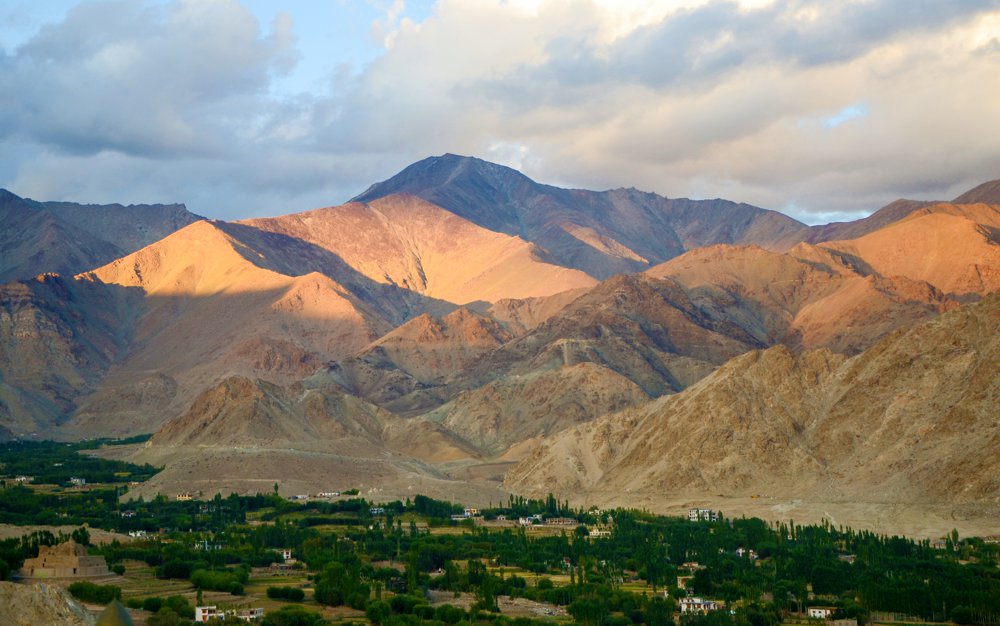
5 kilometres from Leh’s main city, it’s surrounded by snow-capped mountains with spectacular sunrise and sunset views.
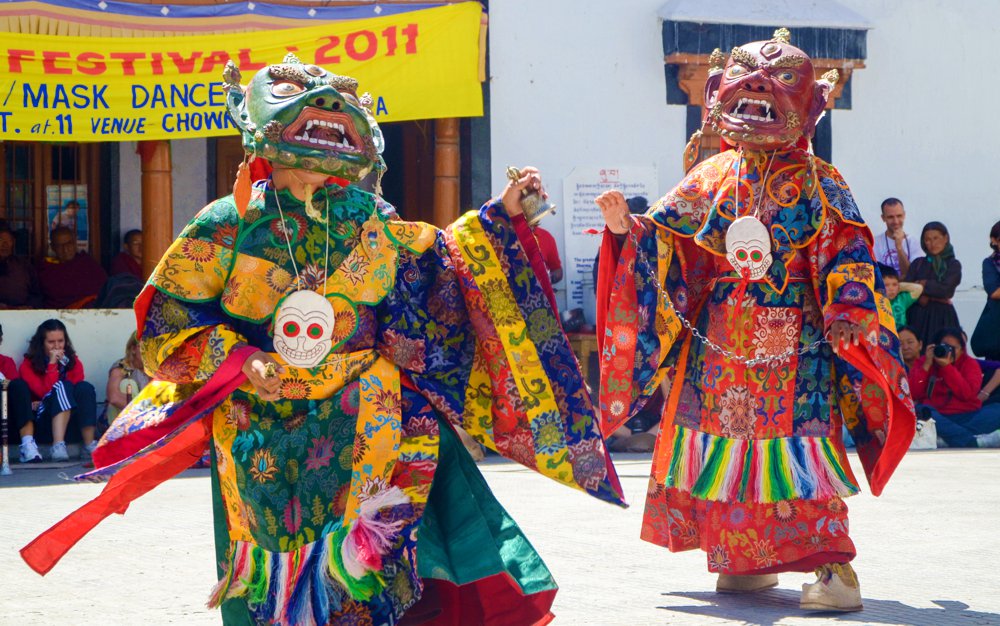
Day 10 – Sept 4: Mask Dance
In the morning, we went to watch a mask dance performance known locally as “chams,” which is one of the festival’s primary attractions at the Chokhang Vihara Buddhist Temple. As the celebration hour approached, the Lamas arrived dressed in masks, multicoloured ribbons, and brocade garments that glistened in the brilliant September sun, dancing rhythmically to the sounds of drums and cymbals. These colourful dances are said to portray a drama representing the triumph of good over evil through their rhythmic movements, and are choreographed according to ancient customs and considered ritual offerings to the monastery’s holy deities.
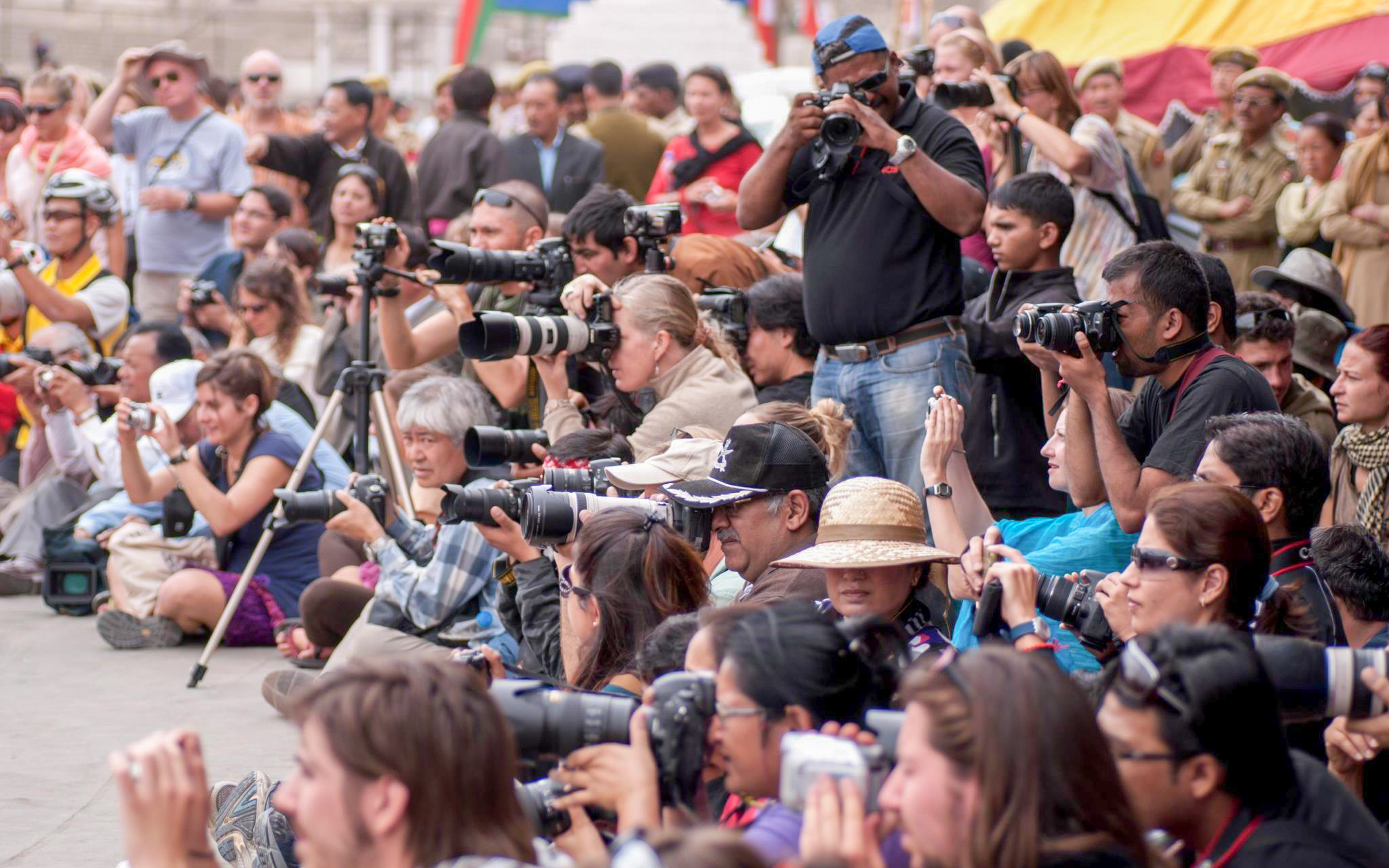
Be sure to arrive early to get a good viewing spot as the monastery courtyard fills with tourists, all of whom are competing with their cameras.
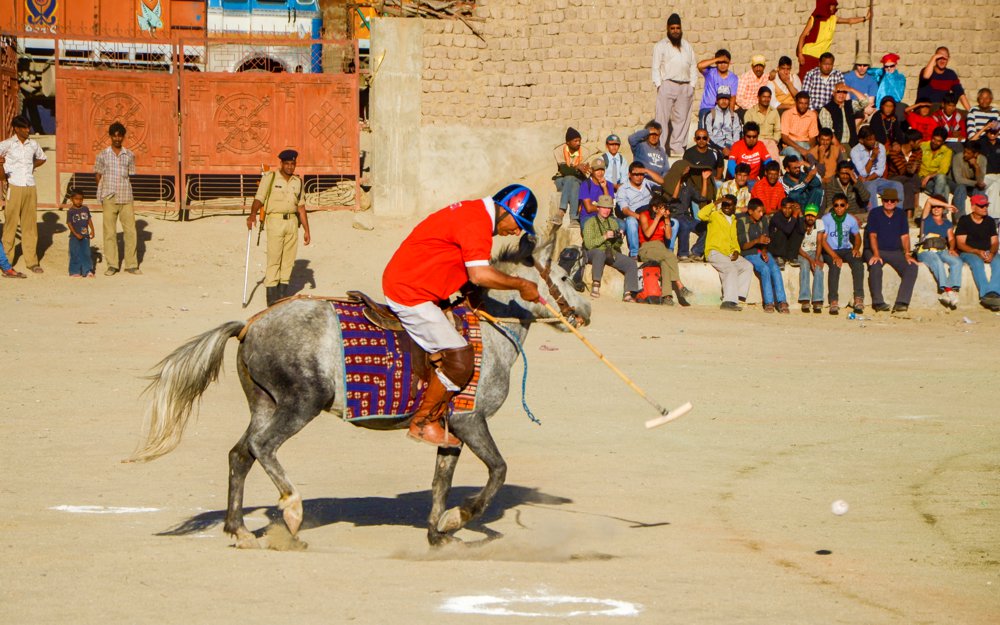
Later that afternoon, I went to see a Polo match.
Btw did you know that game of Polo originated in Manipur???
Read more about it from my Manipur travelogue: http://letstravel.barretomiranda.com/story-of-an-unplanned-trip-to-manipur/
Tomorrow its time to say Juley, till then enjoy some more visual of the Ladakh festival.
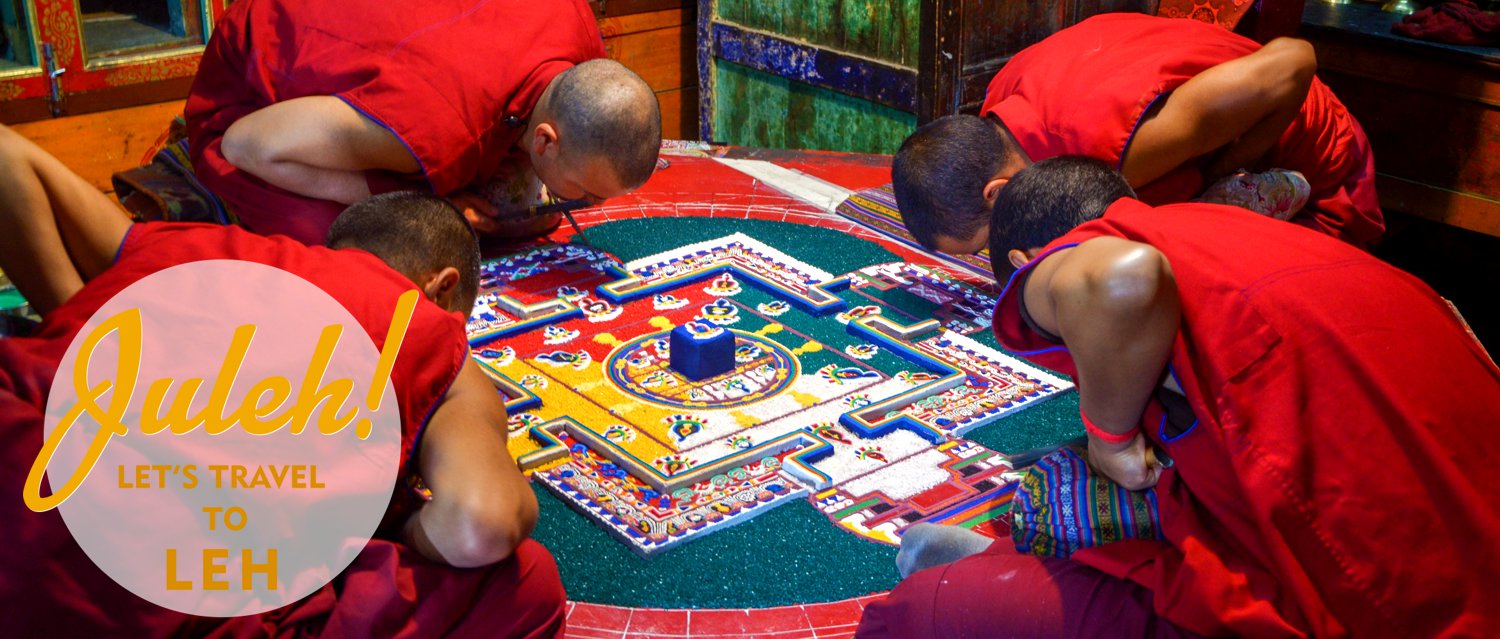
Welcome to the final part of the Leh travelogue.
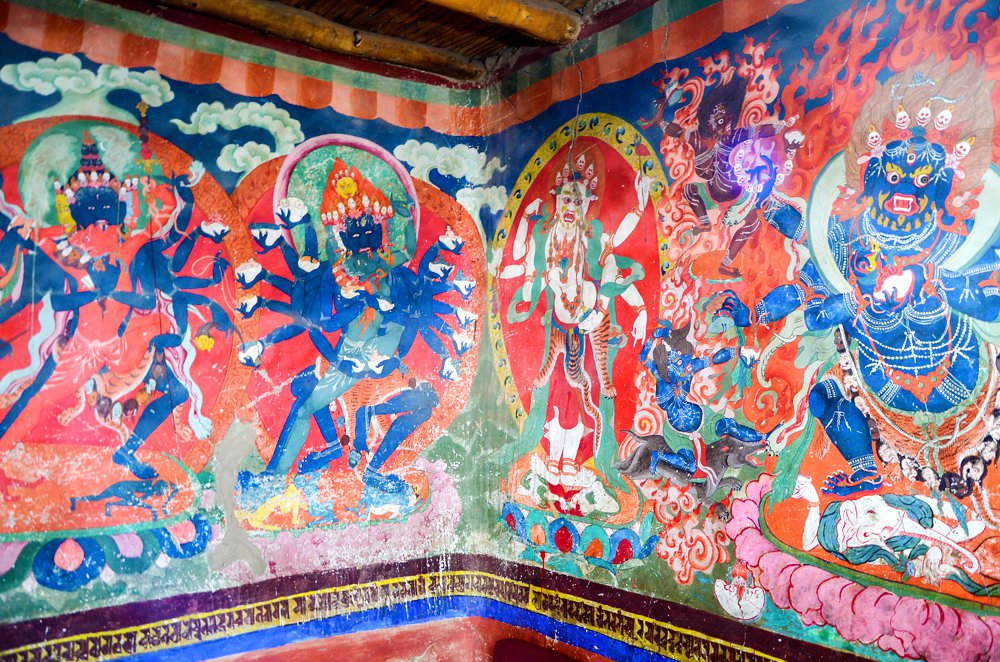
Day 11 – Sept 5: Time to say goodbye to Leh
The tour ended today in Leh, but I chose to remain an extra day because the two-day travel back to Manali would take the same route, and I wanted to explore a few more places in Leh.
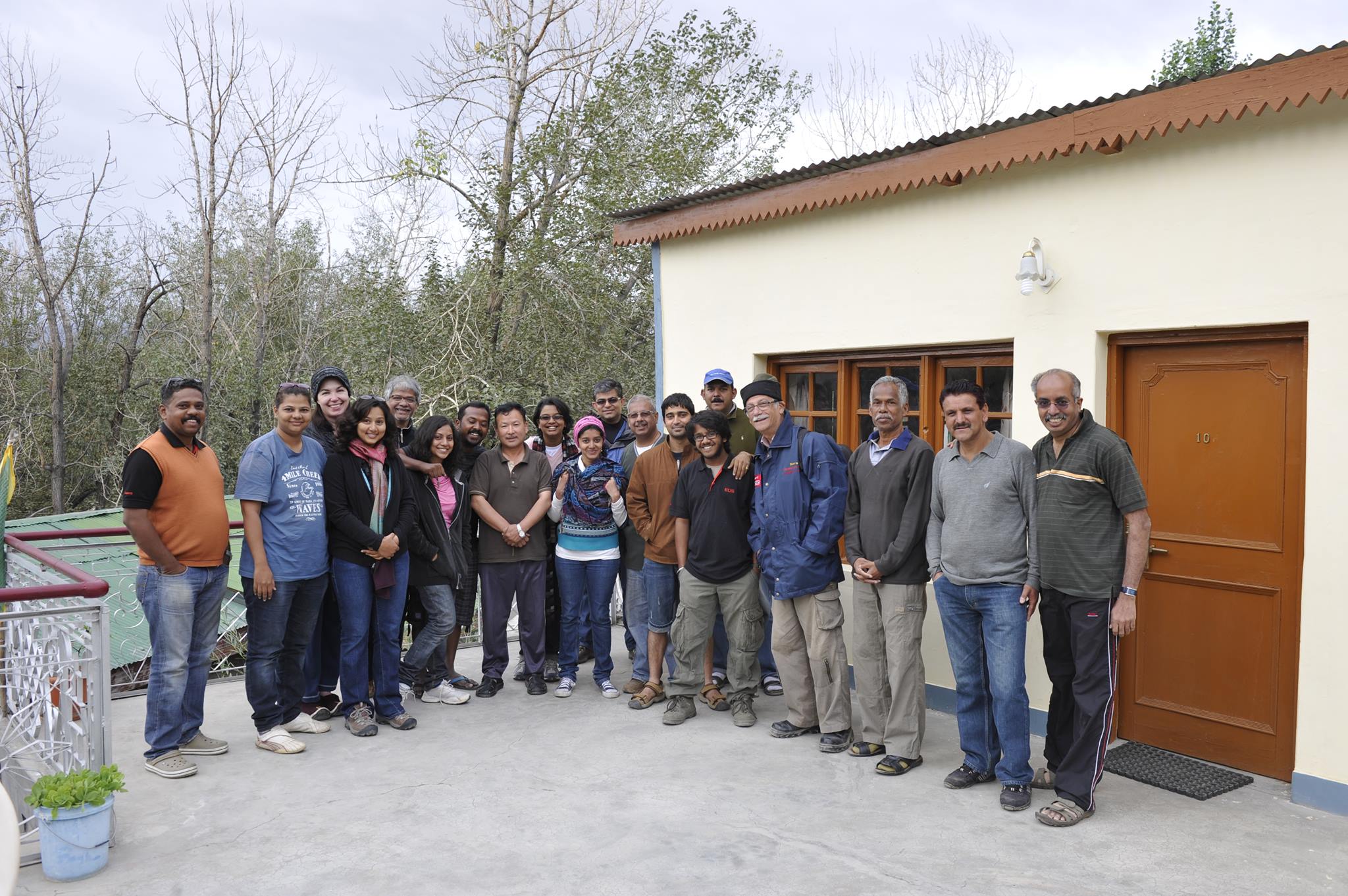
A last group photo before the group departed for Manali.
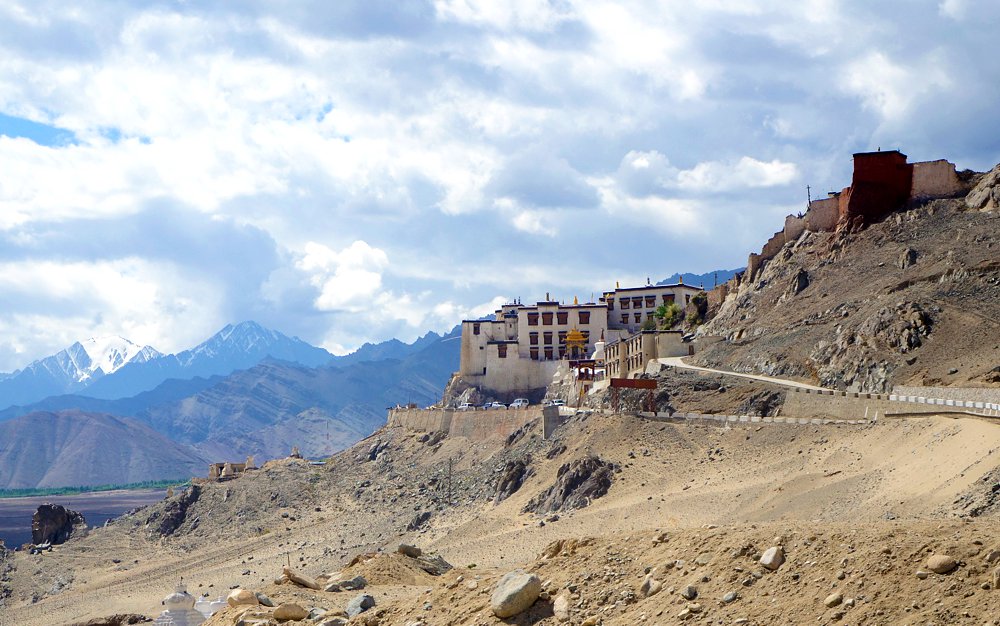
Hired a taxi and went to see: Spituk Monastery, Magnetic hill and Sangam Point
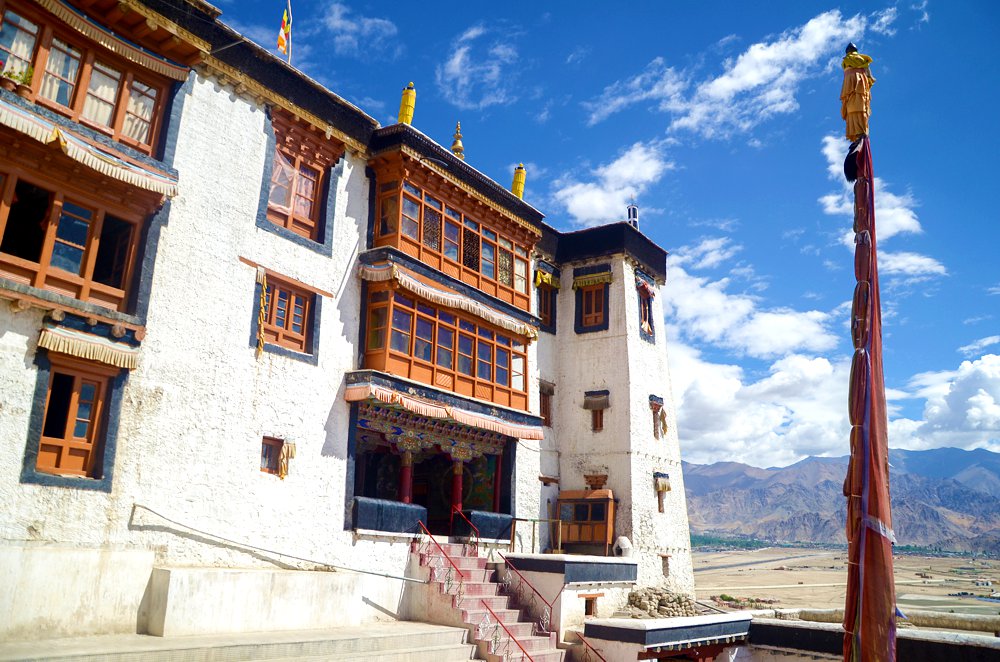
Spituk Monastery is a Buddhist shrine that dates back to the 11th century. It is perched atop a steep hilltop overlooking the Indus River, which flows nearby.
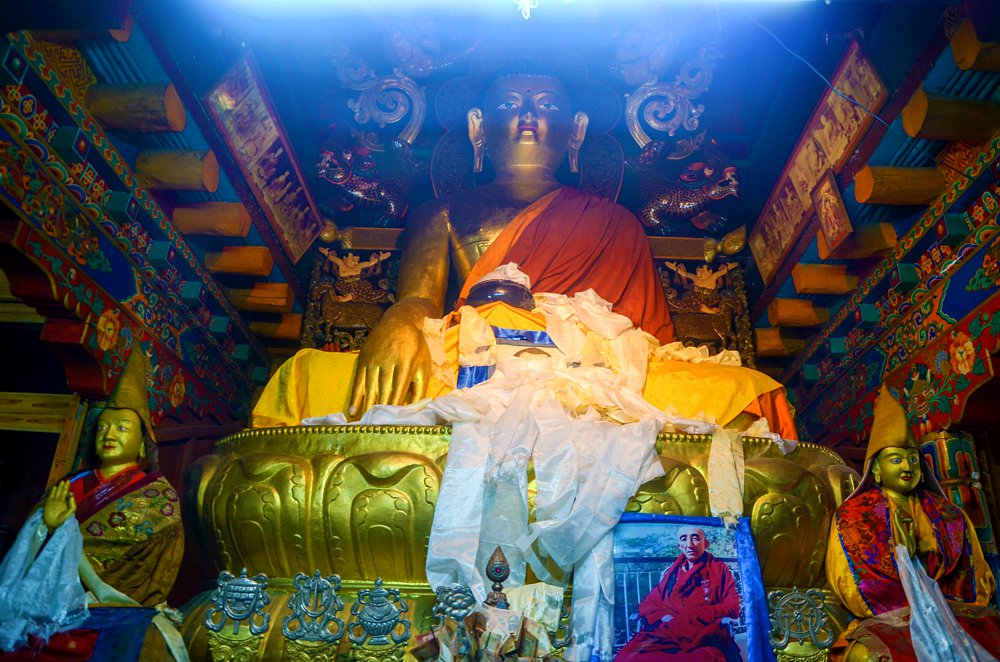
This monastery houses colourful thangka art collection, as well as antique masks and weaponry.
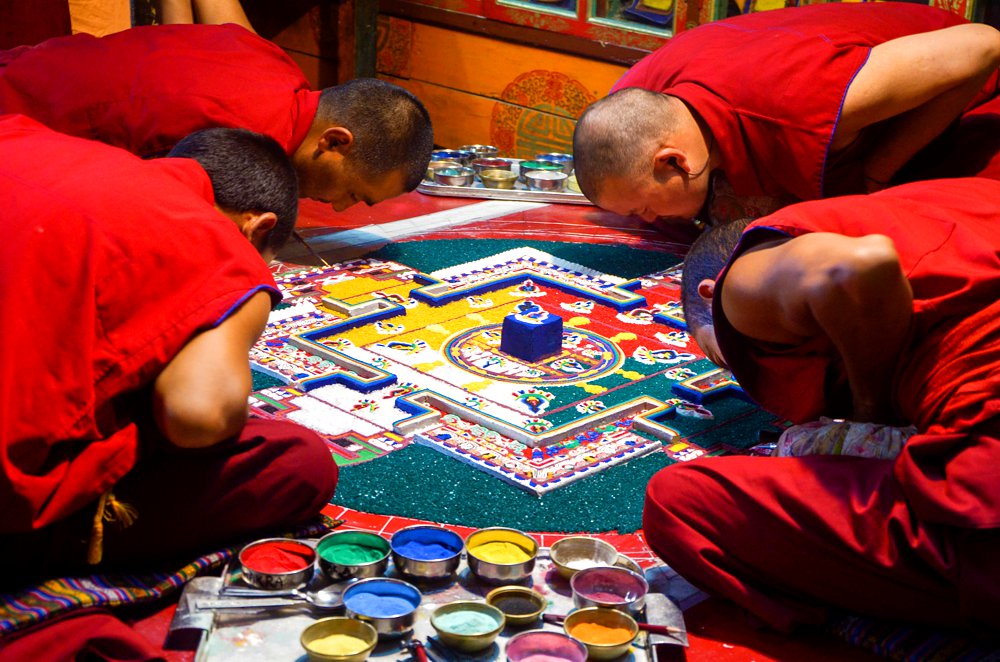
I had the opportunity to see monks creating a breathtaking mandala at this monastery.
The monks scoop sand into a small tube, bend over the piece for hours on end, dropping one grain of sand after another into intricate symbolic patterns. Days or weeks later after a mandala has been created, a ceremony is held where the monks pray and meditate. After the completion of the ceremony, the monks destroy the mandala because of the underlying message, “nothing is permanent.” According to Buddhism, everything is continually striving toward harmony and enlightenment.
They sweep it up, every last grain of sand, and give handfuls of it away as a final remembrance of sublime possibilities to those who attend the closing ceremony. The rest of the sand is then thrown into the nearest river, where it will be carried into the ocean, blessing the whole world.
And that’s it. It’s gone. It’s over in a moment, after all that artistry, all that labour.
Mandala is a Sanskrit word that means “circle.” It is drawn with intricate geometric patterns depicting the celestial palace of Bodhisattvas (enlightened beings). The main hall, where the enlightened one resides, is at the centre of this arrangement. Surrounding the centre are enclosures that house the deity’s consorts. The five primary colours of yellow, blue, red, green, and white are used to represent the five essential elements of earth, water, fire, wind, and ether in a mandala. Buddhists seeking enlightenment see the physical world as a beautiful and pure mandala.
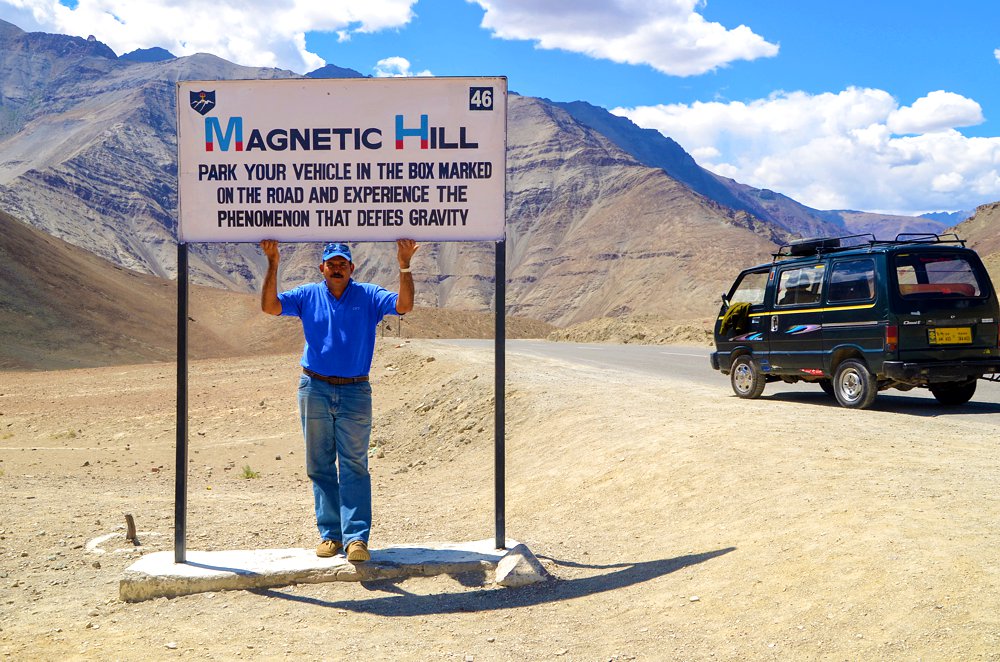
Magnetic Hill
My reason for staying back in Leh was to go and see the phenomenon of Magnetic Hill, which is located about 30 kilometres from Leh. It is said that vehicles when left in neutral with the engine turned off, are pulled uphill automatically, defying gravity.
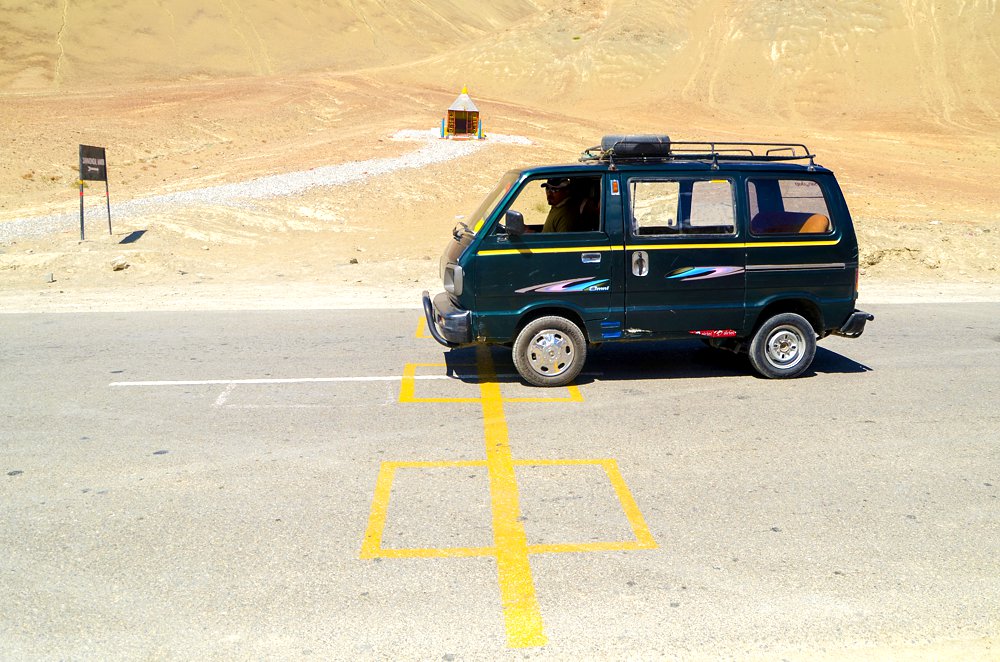
After the Spituk Monastery, we drove to see the Magnetic hill, but it turned out to be a great hoax in my opinion.
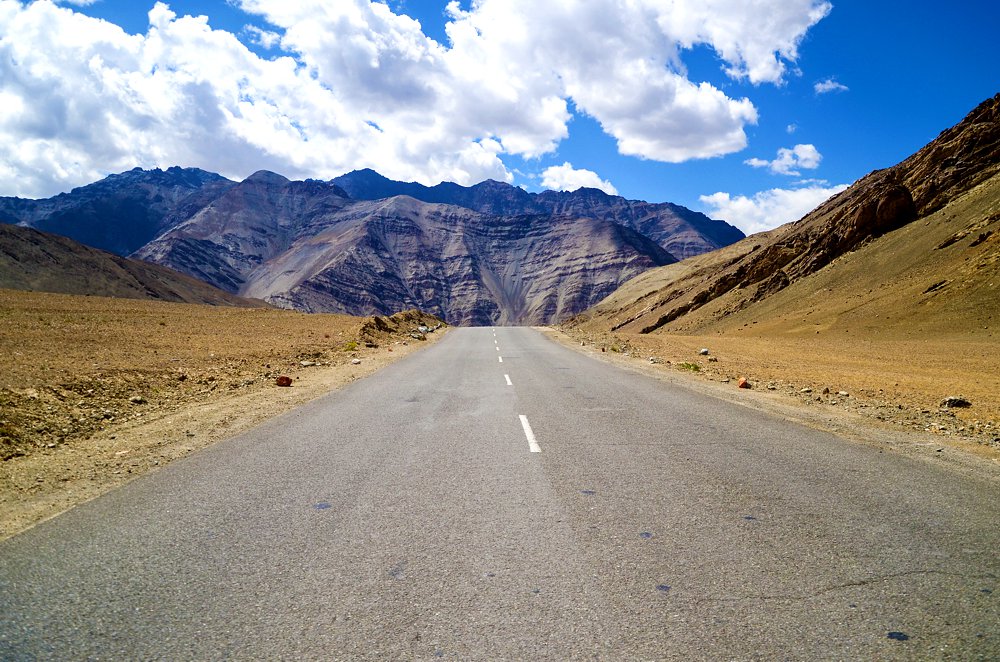
The area’s layout and surrounding slopes create the optical illusion of a hill. The hill road is actually a downhill road. Vehicles on the road appear to be moving uphill against gravity when, in fact, they are going downhill.
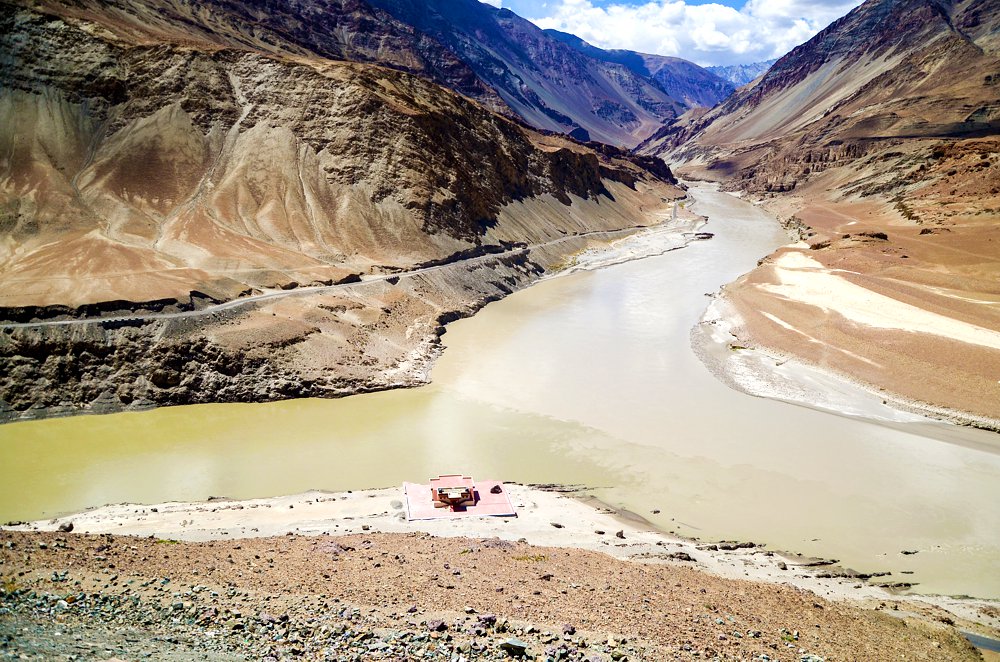
Sangam Point
After the disappointment of the Magnetic Hill, we drove to the Sangam Point to view the confluence of the Indus River and Zanskar River. The green-tinged Indus river originates in the Tibetan Plateau near the Manasarovar range, whereas the blue Zanskar has its source in the Zanskar valley. Both rivers converge in the picturesque Nimmu valley, which lies between Leh and Kargil before flowing into Pakistan. The rivers are clearly distinguished by their colours.
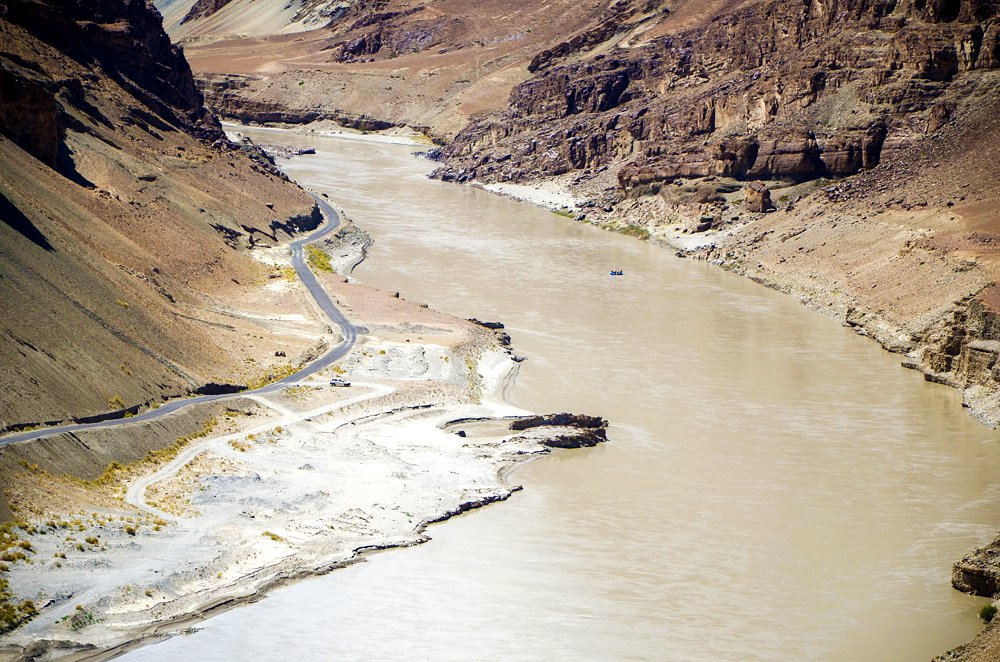
Both rivers provide excellent river rafting opportunities for both novices and expert rafters, with rapid grades ranging from I to V. The incomparable vistas of isolated villages and lofty barren mountains add to this adventurous activity, making it an experience to remember for a lifetime.
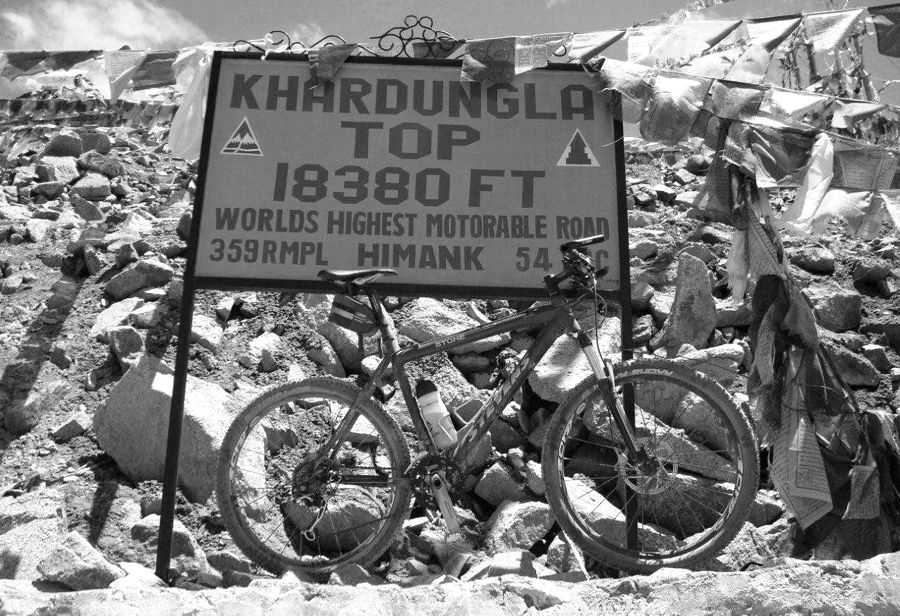
River rafting, along with cycling down from the Khardungla pass, is on my bucket list for the next time I visit Leh. #YOLO
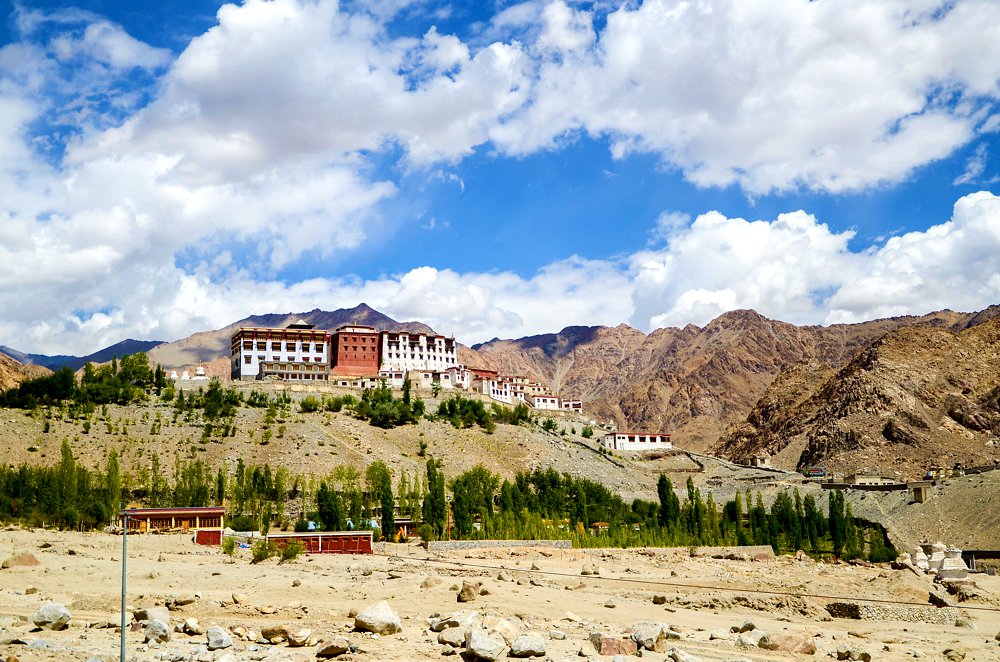
On the way back, visited the Choglamsar monastery. The Choglamsar village was heavily devastated by the 2010 Ladakh floods, with traditional mud houses turned to slushes as a consequence of a cloud burst.
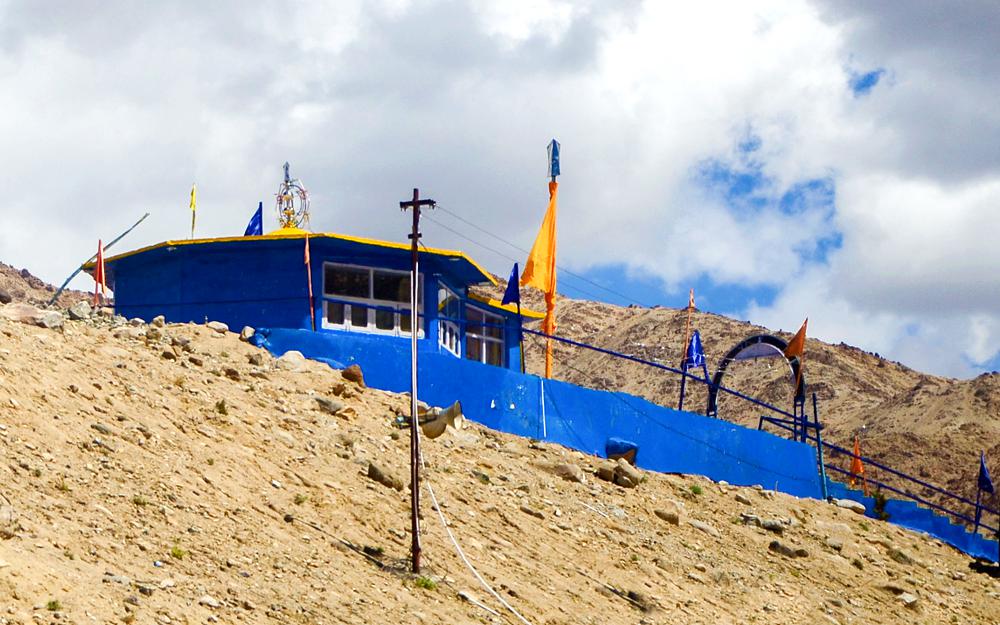
The Gurudwara Pathar Sahib is close by, but I didn’t go in.
Guru Nanak Dev ji, the founder of the Sikh religion, is said to have defeated a demon at this sacred site. According to legend, Guru Nanak ji was meditating here when a demon threw a large rock at him to disrupt his prayers, but the boulder transformed into soft wax and failed to hurt him. Seeing this, the demon pleaded for penance, which Guru Nanak ji granted.

In Gurdwara Pathar Sahib, the boulder bearing the imprint of Guru Nanak Dev’s body and the footprint of the devil is on display. The Gurdwara is maintained by the Indian Army.

In the evening, I went souvenir hunting at the local Tibetan market, where I was pleasantly surprised. When I tried to bargain with them, telling them that I could buy the same thing for less in Goa, many of them began speaking to me in Konkani. When the tourist season in Leh ends in mid-September, many of them pack their belongings and come to Goa to setup shops along the coastal belt. Some of them said they’d been coming for almost 15 years.
…. and in another 5 years they can claim to be Bhumiputras 😉
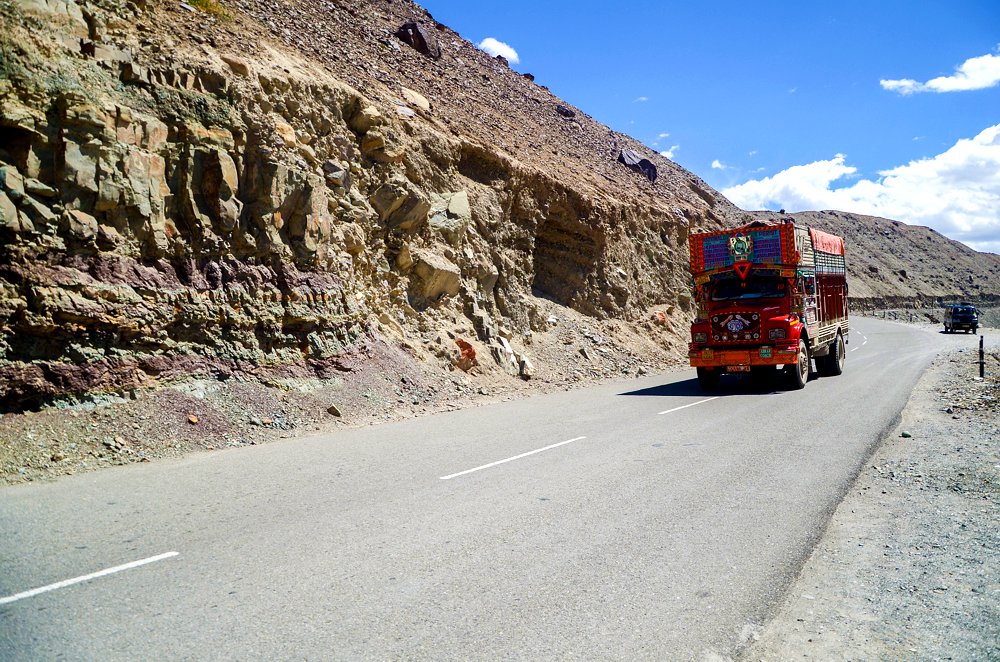
Day 12 – Sept 6: Time to say goodbye to Leh.
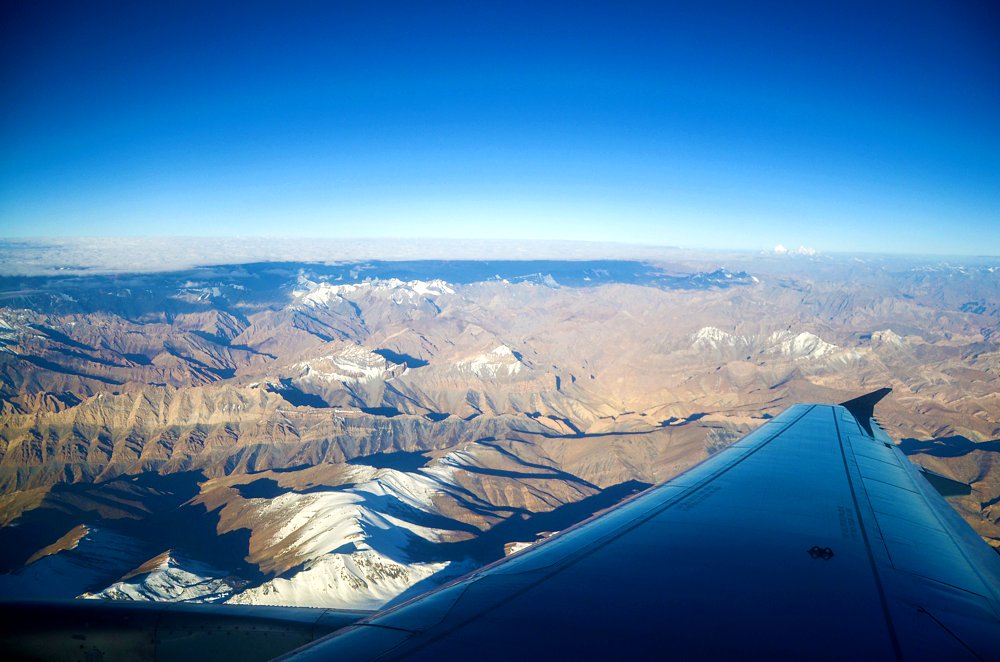
The guesthouse owner dropped me off at the airport in the morning. After boarding the Leh to Delhi aircraft and changing planes in Delhi, I arrived in Goa in the afternoon with millions of photographs and memories.

Juleh Leh!!!
I hope you find the information I shared in the travelogue to be useful.
It’s a one-of-a-kind place : see it, feel it, experience it and believe it!
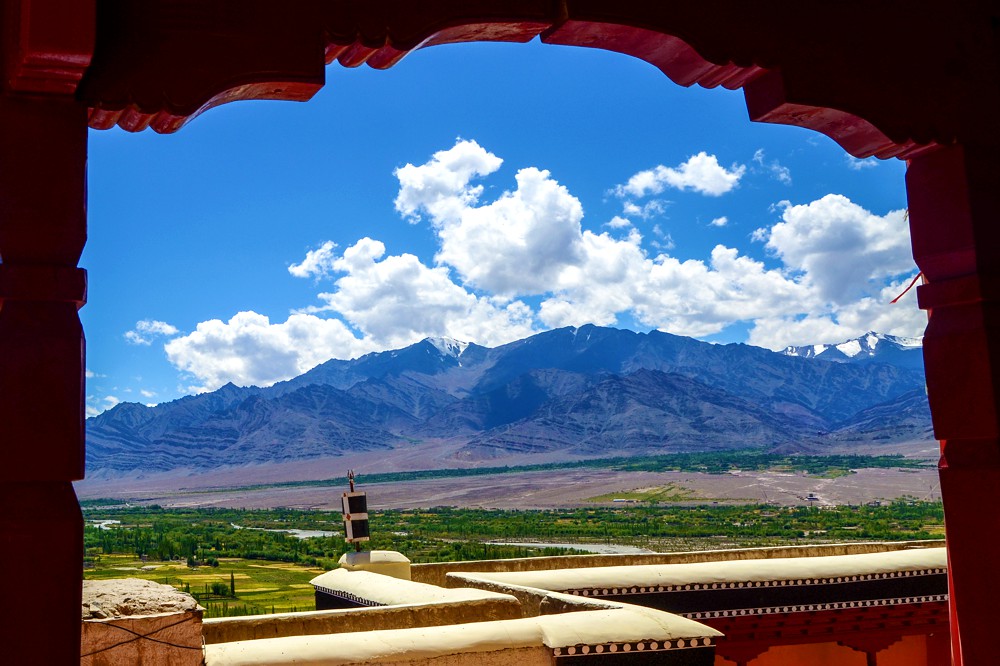
Stay safe and when the pandemic ends, travel responsibly.

Lynn Barreto Miranda
p: 9822151419 | e: lynn@barretomiranda.com | w: lynn.barretomiranda.com
If you need any more information, feel free to contact me.
This travelogue was put together and shared on the Let’s Travel whatsapp group from August 1 to 4, 2021
Let’s Travel is a whatsapp group created by travel enthusiasts to share their travel stories and memories.
Its an open group, to join, email or whatsapp me.
#travelstories #whatsappstories #letstravel

